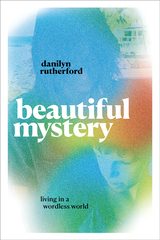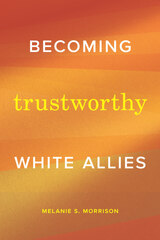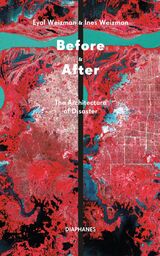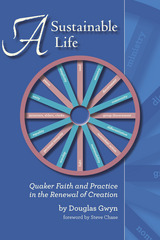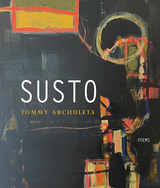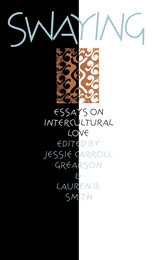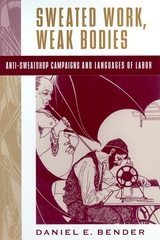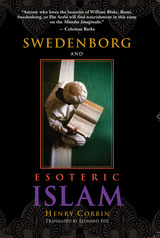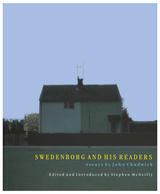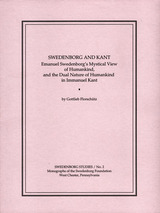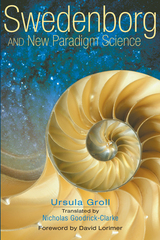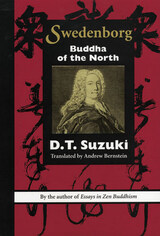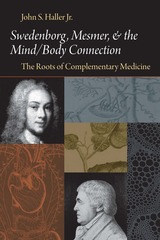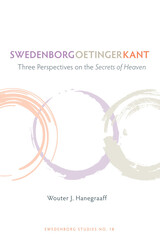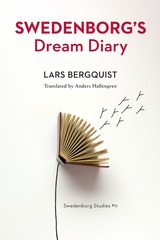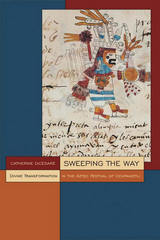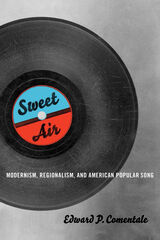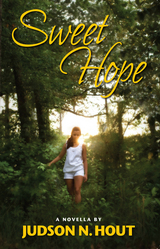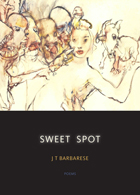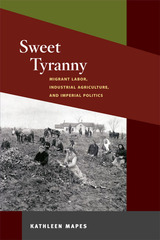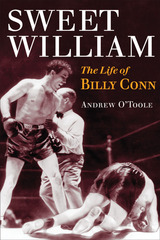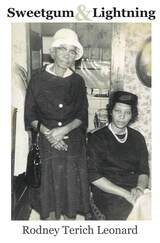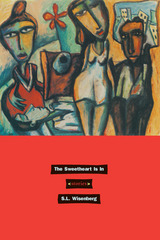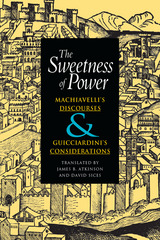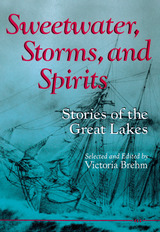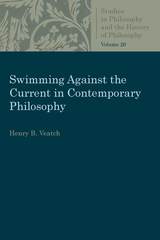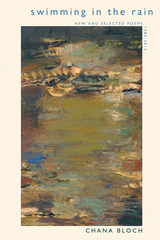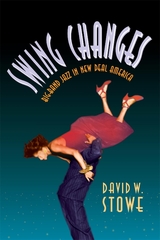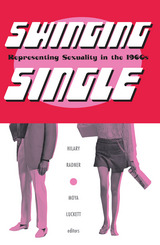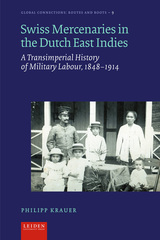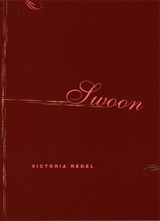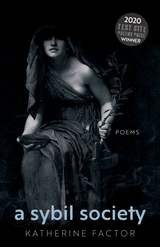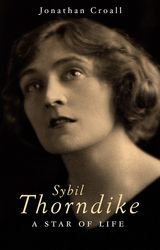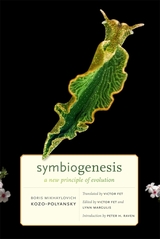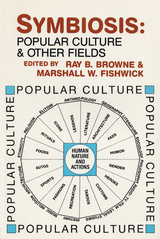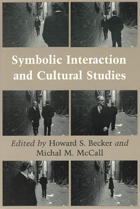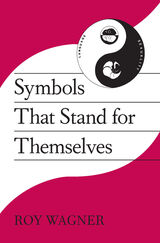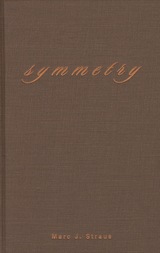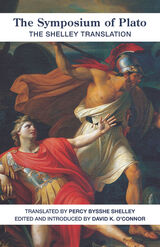 Sustainable Landscape Construction: A Guide to Green Building Outdoors, Second Edition
J. William Thompson and Kim Sorvig
Island Press, 2007 Published at the beginning of the twenty-first century, Sustainable Landscape Construction took a new approach to what was then a nearly new subject: how to construct outdoor environments based on principles of sustainability. This enormously influential book helped to spur a movement that has taken root around the U.S. and throughout the world. The second edition has been thoroughly updated to include the most important developments in this landscape revolution, along with the latest scientific research in the field. It has been expanded to provide even more ideas for designing, building, and maintaining environmentally sensitive landscapes. It is essential reading for everyone with an interest in "green" landscape design.
Like its predecessor, the new edition of Sustainable Landscape Construction is organized around principles that reflect the authors' desire to put environmental ethics into practice. Each chapter focuses on one over-arching idea. These principles of sustainability are clearly articulated and are developed through specific examples. More than 100 projects from around the globe are described and illustrated. A new chapter details ways in which landscape architectural practice must respond to the dangers posed by fire, floods, drought, extreme storms, and climate change.
Sustainable Landscape Construction is a crucial complement to basic landscape construction texts, and is a one-of-a-kind reference for professionals, students, and concerned citizens.
 Sustainable Landscape Construction, Third Edition: A Guide to Green Building Outdoors
Kim Sorvig with J. William Thompson
Island Press, 2018 Since the publication of the first edition in 2000, Sustainable Landscape Construction has helped to spur a movement towards resilient outdoor environments, in the U.S. and throughout the world. The third edition has been updated to include important recent developments in this landscape revolution. It remains essential reading for everyone with an interest in "green" design of outdoor spaces and infrastructures.
Like its predecessors, the new edition of Sustainable Landscape Construction is organized around principles, recognizing that built environments, and our work in them, pose both pragmatic and ethical challenges. Each chapter focuses on one overarching site goal, such as “Pave Less,” “Heal Injured Sites,” and “Consider Origin and Fate of Materials.” These principles of land sustainability are clearly articulated and developed through specific examples of more than 100 projects from around the world, reflecting both traditions and recent innovations. Expanded coverage of industry trends toward performance monitoring, and of lessons from project failures, form an important enhancement in this edition. New content also details the necessity to plan adaptively, not just preventively, for the realities of changing climate and intensifying weather. Some of the trends covered will shift how landscape architects and contractors will do business in challenging years ahead: to survive, many professionals and clients will focus on restoration projects, motivated by ecosystem services and social justice, and funded by innovative methods.
Sustainable Landscape Construction is part of the canon of landscape construction texts, and with this update, remains a visionary, one of a kind reference for professionals and students.
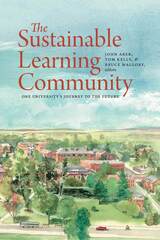 The Sustainable Learning Community: One University’s Journey to the Future
John Aber
University of New Hampshire Press, 2009 University communities have the potential to serve as models in the development and application of sustainability principles and practices, not only by what they teach and study, but also by how they operate facilities and engage with off-campus partners. With the oldest endowed campus-wide sustainability program in the country, established in 1997, the University of New Hampshire has become a leader in advancing a campus culture of sustainability. The UNH experience provides a unique window into the development of a new and integrated approach to teaching, learning, research, and operations. It is also a valuable guide for other institutions that aim to enhance the quality of campus life while reducing their environmental footprint. The book’s organization along four functional domains (curriculum, operations, research, and engagement) allows faculty, staff, students, and managers to focus on sections of particular relevance to their university roles. Each chapter develops standards of best practices and presents interesting case studies to humanize the larger effort.
 Sustainable Utopias: The Art and Politics of Hope in Germany
Jennifer L. Allen
Harvard University Press, 2022 To reclaim a sense of hope for the future, German activists in the late twentieth century engaged ordinary citizens in innovative projects that resisted alienation and disenfranchisement.
By most accounts, the twentieth century was not kind to utopian thought. The violence of two world wars, Cold War anxieties, and a widespread sense of crisis after the 1973 global oil shock appeared to doom dreams of a better world. The eventual victory of capitalism and, seemingly, liberal democracy relieved some fears but exchanged them for complacency and cynicism.
Not, however, in West Germany. Jennifer Allen showcases grassroots activism of the 1980s and 1990s that envisioned a radically different society based on community-centered politics—a society in which the democratization of culture and power ameliorated alienation and resisted the impotence of end-of-history narratives. Berlin’s History Workshop liberated research from university confines by providing opportunities for ordinary people to write and debate the story of the nation. The Green Party made the politics of direct democracy central to its program. Artists changed the way people viewed and acted in public spaces by installing objects in unexpected environments, including the Stolpersteine: paving stones, embedded in residential sidewalks, bearing the names of Nazi victims. These activists went beyond just trafficking in ideas. They forged new infrastructures, spaces, and behaviors that gave everyday people real agency in their communities. Undergirding this activism was the environmentalist concept of sustainability, which demanded that any alternative to existing society be both enduring and adaptable.
A rigorous but inspiring tale of hope in action, Sustainable Utopias makes the case that it is still worth believing in human creativity and the labor of citizenship.
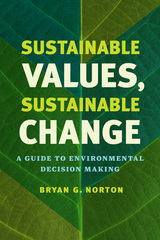 Sustainable Values, Sustainable Change: A Guide to Environmental Decision Making
Bryan G. Norton
University of Chicago Press, 2015 Sustainability is a nearly ubiquitous concept today, but can we ever imagine what it would be like for humans to live sustainably on the earth? No, says Bryan G. Norton in Sustainable Values, Sustainable Change. One of the most trafficked terms in the press, on university campuses, and in the corridors of government, sustainability has risen to prominence as a buzzword before the many parties laying claim to it have come close to agreeing how to define it. But the term’s political currency urgently demands that we develop an understanding of this elusive concept.
While economists, philosophers, and ecologists argue about what in nature is valuable, and why, Norton here offers an action-oriented, pragmatic response to the disconnect between public and academic discourse around sustainability. Looking to the arenas in which decisions are made—and the problems that are driving these decisions—Norton reveals that the path to sustainability cannot be guided by fixed, utopian objectives projected into the future; sustainability will instead be achieved through experimentation, incremental learning, and adaptive management. Drawing inspiration from Aldo Leopold’s famed metaphor of “thinking like a mountain” for a spatially explicit, pluralistic approach to evaluating environmental change, Norton replaces theory-dependent definitions with a new decision-making process guided by deliberation and negotiation across science and philosophy, encompassing all stakeholders and activists and seeking to protect as many values as possible. Looking across scales to today’s global problems, Norton urges us to learn to think like a planet.
 Sustaining Activism: A Brazilian Women's Movement and a Father-Daughter Collaboration
Jeffrey W. Rubin and Emma Sokoloff-Rubin
Duke University Press, 2013 In 1986, a group of young Brazilian women started a movement to secure economic rights for rural women and transform women's roles in their homes and communities. Together with activists across the country, they built a new democracy in the wake of a military dictatorship. In Sustaining Activism, Jeffrey W. Rubin and Emma Sokoloff-Rubin tell the behind-the-scenes story of this remarkable movement. As a father-daughter team, they describe the challenges of ethnographic research and the way their collaboration gave them a unique window into a fiery struggle for equality.
Starting in 2002, Rubin and Sokoloff-Rubin traveled together to southern Brazil, where they interviewed activists over the course of ten years. Their vivid descriptions of women’s lives reveal the hard work of sustaining a social movement in the years after initial victories, when the political way forward was no longer clear and the goal of remaking gender roles proved more difficult than activists had ever imagined. Highlighting the tensions within the movement about how best to effect change, Sustaining Activism ultimately shows that democracies need social movements in order to improve people’s lives and create a more just society.
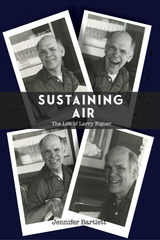 Sustaining Air: The Life of Larry Eigner
Jennifer Bartlett
University of Alabama Press, 2023 The biography of a poet seminal to postwar American poetry
The poet Larry Eigner (1927–1996) was a key figure in New American poetry, which grew out of the Black Mountain School and San Francisco Renaissance, and a major influence on the Language poets. Eigner also had cerebral palsy as the result of an accident at birth. It is fortuitous that the poet lived his life in two locations vibrant in both poetics and disability activism. Except for brief periods attending camp and school, he lived with his parents in Swampscott, Massachusetts, until the age of 51. Later, he moved to Berkeley, California, at the height of the disability rights movement. In the 1950s, Eigner attended Camp Jened, which later became famous in the film Crip Camp.
Bartlett’s biography covers every significant phase of Eigner’s life: his childhood and young adulthood when he began typing poems with one finger on the manual typewriter that was a bar mitzvah gift; his first publications and the maturation of his poetic interests through correspondence with poets of the era; and after his move to Berkeley, the ever-expanding circle of friends, poets, caretakers, and collaborators he established there. The result is a deeply insightful account of an utterly distinctive voice whose influence widens and deepens with each new generation that encounters him.
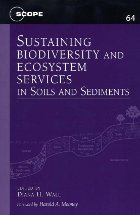 Sustaining Biodiversity and Ecosystem Services in Soils and Sediments
Edited by Diana H. Wall
Island Press, 2004 Sustaining Biodiversity and Ecosystem Services in Soils and Sediments brings together the world's leading ecologists, systematists, and evolutionary biologists to present scientific information that integrates soil and sediment disciplines across terrestrial, marine, and freshwater ecosystems. It offers a framework for a new discipline, one that will allow future scientists to consider the linkages of biodiversity below-surface, and how biota interact to provide the essential ecosystemservices needed for sustainable soils and sediments. Contributors consider key-questions regarding soils and sediments and the relationship between soil- and sediment- dwelling organisms and overall ecosystem functioning. The book is an important new synthesis for scientists and researchers studying a range of topics, including global sustainability, conservation biology, taxonomy, erosion, extreme systems, food production, and related fields. In addition, it provides new insight and understanding for managers, policymakers, and others concerned with global environmental sustainability and global change issues.
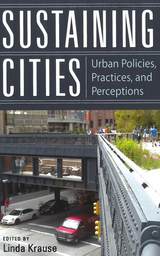 Sustaining Cities: Urban Policies, Practices, and Perceptions
Krause, Linda
Rutgers University Press, 2012 What has happened to cities after the global economic recession? Sustaining Cities answers this question by explaining how failed governmental policies contributed to urban problems and offering best practices for solving them. From social scientists and urban planners to architects and literary and film critics, the authors of this unique collection suggest real responses to this crisis. Could the drastic declines in housing markets have been avoided? Yes, if we reframe our housing values. Do you want to attract corporate investment to your town? You might want to think twice about doing so. The extinction of the “Celtic Tiger” may be charted in statistics, but the response in popular Irish mystery novels is much more compelling. China, while not immune to market vicissitudes, still booms, but at a considerable cost to its urban identities. Whether constructing a sustainable social framework for Mexican mega-cities or a neighborhood in London, these nine essays consider some strikingly similar strategies. And perhaps, as the contributors suggest, it’s time to look beyond the usual boundaries of urban, suburban, and exurban to forge new links among these communities that will benefit all citizens. Accessible to anyone with an interest in how cities cope today, Sustaining Cities presents a cautionary tale with a hopeful ending.
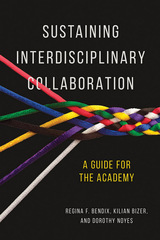 Sustaining Interdisciplinary Collaboration: A Guide for the Academy
Regina Bendix
University of Illinois Press, 2017 At once a slogan and a vision for future scholarship, interdisciplinarity promises to break through barriers to address today's complex challenges. Yet even high-stakes projects often falter, undone by poor communication, strong feelings, bureaucratic frameworks, and contradictory incentives. This new book shows newcomers and veteran researchers how to craft associations that will lead to rich mutual learning under inevitably tricky conditions. Strikingly candid and always grounded, the authors draw a wealth of profound, practical lessons from an in-depth case study of a multiyear funded project on cultural property. Examining the social dynamics of collaboration, they show readers how to anticipate sources of conflict, nurture trust, and jump-start thinking across disciplines. Researchers and institutions alike will learn to plan for each phase of a project life cycle, capturing insights and shepherding involvement along the way.
 Sustaining Linguistic Diversity: Endangered and Minority Languages and Language Varieties
Kendall A. King, Natalie Schilling-Estes, Lyn Fogle, Jia Jackie Lou, and Barbara Soukup, Editors
Georgetown University Press, 2008 In the last three decades the field of endangered and minority languages has evolved rapidly, moving from the initial dire warnings of linguists to a swift increase in the number of organizations, funding programs, and community-based efforts dedicated to documentation, maintenance, and revitalization. Sustaining Linguistic Diversity brings together cutting-edge theoretical and empirical work from leading researchers and practitioners in the field. Together, these contributions provide a state-of-the-art overview of current work in defining, documenting, and developing the world's smaller languages and language varieties. The book begins by grappling with how we define endangerment—how languages and language varieties are best classified, what the implications of such classifications are, and who should have the final say in making them. The contributors then turn to the documentation and description of endangered languages and focus on best practices, methods and goals in documentation, and on current field reports from around the globe. The latter part of the book analyzes current practices in developing endangered languages and dialects and particular language revitalization efforts and outcomes in specific locations. Concluding with critical calls from leading researchers in the field to consider the human lives at stake, Sustaining Linguistic Diversity reminds scholars, researchers, practitioners, and educators that linguistic diversity can only be sustained in a world where diversity in all its forms is valued.
 Sustaining the Borderlands in the Age of NAFTA: Development, Politics, and Participation on the US-Mexico Border
Suzanne Simon
Vanderbilt University Press, 2014 Sustaining the Borderlands in the Age of NAFTA provides the only book-length study of the impact on residents of the US-Mexico border of NAFTA's Environmental and Labor Side Accords, which required each state to enforce labor and environmental regulations. Through field research in Matamoros, Tamaulipas, anthropologist Suzanne Simon tests the premise that the side accords would encourage Mexican grassroots democratization. The effectiveness of the side accords was tied to transparency and accountability and practically bound to opportunities for Mexican border populations to participate in the side accord petitioning and civil society input mechanisms. Simon conducted sixteen months of fieldwork with both a group of environmental activists and a group of those fighting for labor justice in Mexico. Both of these groups became enmeshed in the types of cross-border advocacy networks and coalition building efforts that are typical of the NAFTA era.
Although the key to the side accords' anticipated success lay in their ostensibly generous encouragement of a participatory politics and sustainable development opportunities, Sustaining the Borderlands reveals that the Mexican border populations for which they were largely created are effectively excluded from participating due to the ongoing online, territorial, class, and cultural barriers that shape the borderlands. Rather than experiencing the side accords and their companion institutions as transparent and accessible, residents experienced them as opaque and indecipherable. Simon concludes that the side accords have failed to deliver on their promise of bringing democracy to Mexico because practical mechanisms that would ensure their effective implementation were never put in place.
NAFTA took effect at a time when Mexico was undergoing a democratic transition. The treaty was supposed to encourage this transition and improve environmental and labor conditions on the US-Mexico border. This book demonstrates that, twenty years later, the promises of NAFTA have not come to pass.
 Sustaining the Earth: The Story of the Environmental Movement—Its Past Efforts and Future Challenges
John Young
Harvard University Press, 1990 Environmental issues, once the benign hobby of the few, have become everybody's urgent concern--progressing from the peaceful vibes of the first Earth Day to the political tumult of the "green possibility." As we surpass the end of the twentieth century and as these issues become more pressing, John Young's tour de force is an especially welcome and timely assessment of the history of the environmental movement--and a call to arms for a new and effective attack on the problems.
Young maintains that only a powerful synthesis of political, economic, and moral ideologies--a unification he terms postenvironmentalism--will move world societies into a relation to the environment that maintains the best democratic values. He describes many of the movements and strategies that have appeared over the last three decades: realos, reds, greens, left and right ecologists, eco-feminists, humanists, and pragmatists. Now even the most radical environmentalists must recognize the reality of questions about equity and poverty, technology and energy, aid and trade between wealthy and impoverished countries, and the validity of the ways people consider them. As the process of trial and error this book describes continues, Young offers--in a thoughtful and undogmatic manner--an alternative perspective that is essential reading for all who care about our world.
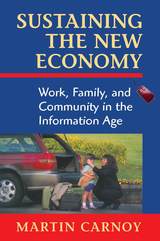 Sustaining the New Economy: Work, Family, and Community in the Information Age
Martin Carnoy
Harvard University Press, 2000 This book explores the growing tension between the requirements of employers for a flexible work force and the ability of parents and communities to nurture their children and provide for their health, welfare, and education. Global competition and the spread of information technology are forcing businesses to engage in rapid, worldwide production changes, customized marketing, and just-in-time delivery. They are reorganizing work around decentralized management, work differentiation, and short-term and part-time employment. Increasingly, workers must be able to move across firms and even across types of work, as jobs get redefined.
But there is a stiff price being paid for this labor market flexibility. It separates workers from the social institutions—family, long-term jobs, and stable communities—that sustained economic expansions in the past and supported the growth and development of the next generation. This is exacerbated by the continuing movement of women into paid work, which puts a greater strain on the family's ability to care for and rear children. Unless government fosters the development of new, integrative institutions to support the new world of work, the author argues, the conditions required for long-term economic growth and social stability will be threatened. He concludes by laying out a framework for creating such institutions.
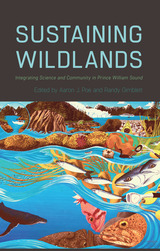 Sustaining Wildlands: Integrating Science and Community in Prince William Sound
Edited by Aaron J. Poe and Randy Gimblett
University of Arizona Press, 2017 When the Exxon Valdez oil tanker ran aground on Bligh Reef in Alaska in 1989 and spilled 11 million gallons of oil, it changed Prince William Sound forever. The catastrophe disrupted the region’s biological system, killing countless animals and poisoning habitats that to this day no longer support some of the local species. The effects have also profoundly altered the way people use this region.
Nearly three decades later, changes in recreation use run counter to what was initially expected. Instead of avoiding Prince William Sound, tourists and visitors flock there. Economic revitalization efforts have resulted in increased wilderness access as new commercial enterprises offer nature tourism in remote bays and fjords. This increased visitation has caused concerns that the wilderness may again be threatened—not by oil but rather by the very humans seeking those wilderness experiences.
In Sustaining Wildlands, scientists and managers, along with local community residents, address what has come to be a central paradox in public lands management: the need to accommodate increasing human use while reducing the environmental impact of those activities. This volume draws on diverse efforts and perspectives to dissect this paradox, offering an alternative approach where human use is central to sustaining wildlands and recovering a damaged ecosystem like Prince William Sound.
Contributors:
Brad A. Andres, Chris Beck, Nancy Bird, Dale J. Blahna, Harold Blehm, Sara Boario, Bridget A. Brown, Courtney Brown, Greg Brown, Milo Burcham, Kristin Carpenter, Ted Cooney, Patience Andersen Faulkner, Maryann Smith Fidel, Jessica B. Fraver, Jennifer Gessert, Randy Gimblett, Michael I. Goldstein, Samantha Greenwood, Lynn Highland, Marybeth Holleman, Shay Howlin, Tanya Iden, Robert M. Itami, Lisa Jaeger, Laura A. Kennedy, Spencer Lace, Nancy Lethcoe, Kate McLaughlin, Rosa H. Meehan, Christopher Monz, Karen A. Murphy, Lisa Oakley, Aaron J. Poe, Chandra B. Poe, Karin Preston, Jeremy Robida, Clare M. Ryan, Gerry Sanger, Bill Sherwonit, Lowell H. Suring, Paul Twardock, Sarah Warnock, and Sadie Youngstrom
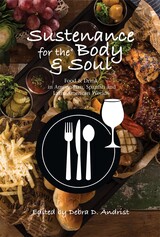 Sustenance for the Body & Soul: Food & Drink in Amerindian, Spanish & Latin American Worlds
Debra D. Andrist
Sussex Academic Press, 2022 The food-secure and/or privileged worldwide no longer eat and drink simply to maintain life itself. They have the advantage and choice to regard "sustenance" not just as fuel for the body/machine but as a source of pleasure and entertainment for the mind/intellect. This enhanced concept of "sustenance" embraces all the senses: visual, auditory, olfactory, gustatory, and tactile, thus including not just food drink, but ceremonies art forms dealing with them. This book explores the substantive ways food drink impact human existence. The work comprises five parts: medicine; ceremonies; literature cinema; art artists; space/architecture advertising/art. Food drink start with the physical, morph into nutrition, the most basic requirements for organic life, but progress from the beginning of physical process to ceremony and expression. The result and the experience highlight physiological and sensual concepts, and indeed, preference. Food drink staples are determined by geographic availability and cuisine beverage are closely associated with culture ethnicity. Contributor exploration is wide-ranging: Aztec, Mexican Spanish medicine; African Roman Catholic rites; cookbook discourse and socio-gender influence; literature, including cultural comparisons of cooking and cooks; preparation representation of food drink as artistic endeavors, including by Latin American women, and types of inspirational "fodder," especially in the context of Picasso's art in Spain France, Spanish wine museums labelling. Sustenance for the Body Soul ;is the seventh book in the Hispanic Worlds series, details of which are available on the press website.
Susto
Tommy Archuleta
University Press of Colorado, 2023 Surreal yet earthbound, orphaned yet mothered more than most, comforting yet disturbing—Tommy Archuleta’s Susto surveys many settings: the body, the soul, the terrain the soul encounters upon leaving the body. But the setting is also the high desert landscape that is the poet’s northern New Mexico home, a land whose beauty today is as silencing and brutal as was the colonization of the region and her Anasazi descendants by Archuleta’s Spanish antipasados. In Susto, loss is everywhere to be found, though this work is not merely a concerted meditation on lament. Rather, it is part unearthed family album; part unlocked diary; part ode to motherhood and her various forms; part manual on preparing for a happy death; and part primer on the ancient art of curanderismo, whereby plants and roots are prepared for treating all manner of ills a mind and body might face.
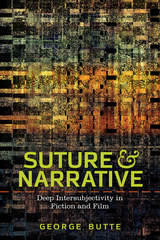 Suture and Narrative: Deep Intersubjectivity in Fiction and Film
George Butte
Ohio State University Press, 2017 Suture and Narrative: Deep Intersubjectivity in Fiction and Film by George Butte offers a new phenomenological understanding of how fiction and film narratives use particular techniques to create and represent the experience of community. Butte turns to the concept of suture from Lacanian film theory and to the work of Merleau-Ponty to contribute a deeper and broader approach to intersubjectivity for the field of narrative theory. Butte’s approach allows for narratives that represent insight as well as blindness, love, and loss, locating these connections and disconnections in narratological techniques that capture the crisscrossing of perspectives, such as those in fiction’s free indirect discourse and in the oblique angle of film’s shot/reverse shot convention. Butte studies the implications of this chiasmus in the novels and film adaptations of later Henry James works, Barrie’s Peter Pan tales and film adaptations, and the films Silence of the Lambsand Nothing But a Man. Suture’s story in the twentieth century, according to Butte, is a story of the loss of immediacy and community. Yet in concluding this, Butte finds optimism in the Coen brothers’ Raising Arizona as well as in Why Be Happy When You Could Be Normal? by Jeanette Winterson and Marc Webb’s film (500) Days of Summer.
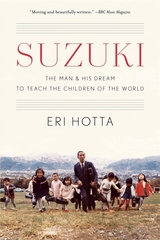 Suzuki: The Man and His Dream to Teach the Children of the World
Eri Hotta
Harvard University Press, 2022 A New Yorker Best Book of the Year . “Moving and beautifully written.” —BBC Music Magazine
“Hotta is an unobtrusive narrator whose personal anecdotes are like grace notes on the larger score of Suzuki’s life.” —Meghan Cox Gurdon, Wall Street Journal
“Suzuki will take a deserved place as the definitive account of his life, and will be a valuable resource for scholars, teachers, and music students alike. Hotta’s writing strikes a perfect balance between scholarly precision and engaging narrative…Conjures a vibrant and moving portrait of both the man and his revolutionary vision.” —Andrew Braddock, The Strad
“This well-researched, conceived, and executed book seems to be the first objective account of the man and his life. It is a revelation on many levels…[Suzuki] is about optimism, gentleness, doggedness, belief in children, humanity, and the affirmative properties of art in the face of violence and ignorance.” —David Mehegan, Arts Fuse
The name Shinichi Suzuki is synonymous with early childhood musical education. By the time of his death in 1998, countless children around the world had been taught using his methods, with many more to follow. Yet Suzuki’s life and the evolution of his educational vision remain largely unexplored. A committed humanist, he was less interested in musical genius than in imparting to young people the skills and confidence to learn.
Eri Hotta details Suzuki’s unconventional musical development and the emergence of his philosophy, showing that his aim was never to turn out disciplined prodigies but rather to create a world where all children have the chance to develop, musically and otherwise. Undergirding his pedagogy was an unflagging belief that talent, far from being an inborn quality, is cultivated through education. Moreover, Suzuki’s approach debunked myths of musical nationalism in the West, where many doubted that Asian performers could communicate the spirit of classical music rooted in Europe.
Suzuki offers not only a fresh perspective on early childhood education but also a gateway to the fraught history of musical border-drawing and to the makings of a globally influential life in Japan’s tumultuous twentieth century.
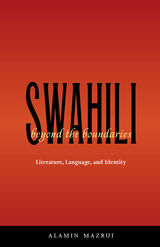 Swahili Beyond the Boundaries: Literature, Language, and Identity
Alamin Mazrui
Ohio University Press, 2007 Africa is a marriage of cultures: African and Asian, Islamic and Euro-Christian. Nowhere is this fusion more evident than in the formation of Swahili, Eastern Africa’s lingua franca, and its cultures. Swahili Beyond the Boundaries: Literature, Language, and Identity addresses the moving frontiers of Swahili literature under the impetus of new waves of globalization in the twentieth and twenty-first centuries. These momentous changes have generated much theoretical debate on several literary fronts, as Swahili literature continues to undergo transformation in the mill of human creativity.
Swahili literature is a hybrid that is being reconfigured by a conjuncture of global and local forces. As the interweaving of elements of the colonizer and the colonized, this hybrid formation provides a representation of cultural difference that is said to constitute a “third space,” blurring existing boundaries and calling into question established identitarian categorizations. This cultural dialectic is clearly evident in the Swahili literary experience as it has evolved in the crucible of the politics of African cultural production.
However, Swahili Beyond the Boundaries demonstrates that, from the point of view of Swahili literature, while hybridity evokes endless openness on questions of home and identity, it can simultaneously put closure on specific forms of subjectivity. In the process of this contestation, a new synthesis may be emerging that is poised to subject Swahili literature to new kinds of challenges in the politics of identity, compounded by the dynamics and counterdynamics of post–Cold War globalization.
 Swahili Origins: Swahili Culture and The Shungwaya Phenomenon
James de Vere Allen
Ohio University Press, 1993 Kiswahili has become the lingua franca of eastern Africa. Yet there can be few historic peoples whose identity is as elusive as that of the Swahili. Some have described themselves as Arabs, as Persians or even, in one place, as Portuguese. It is doubtful whether, even today, most of the people about whom this book is written would unhesitatingly and in all contexts accept the name Swahili. This book was central to the thought and lifework of the late James de Vere Allen. It is his major study of the origin of the Swahili and of their cultural identity. He focuses on how the African element in their cultural patrimony was first modified by Islam and later changed until many Swahili themselves lost sight of it. They share a language and they share a culture. Their territory stretches from the coast of southern Somalia to the Lamu archipelago in Kenya, to the Rovuma River in modern Mozambique and out into the islands of the Indian Ocean. But they lack a shared historical experience. James de Vere Allen, in this study of contentious originality, set out to give modern Swahili evidence of their shared history during a period of eight centuries.
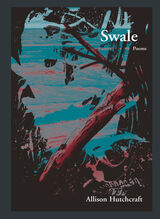 Swale
Allison Hutchcraft
New Issues Poetry and Prose, 2020 This collection is named for a “swale,” a shallow channel used to direct the flow of rainwater. Similarly, Swale looks outward to the natural world and directs its focus inward to the landscape of the mind. The past presses in like a thick mist: plundering colonial ships and the cracking edges of empire coincide with contemporary scenes and personal erosions and failures. Alongside humans are animals both living and extinct: manatees, sea turtles, and whales; roaming bears, horses, and lambs; and the flightless dodo and Steller’s sea cow, gone for centuries. What happens when the mind eclipses what the body sees, and neither can be trusted—when demarcations between land and water blur, and one’s sense of self begins to recede?
Swale interrogates the violence of colonialism and its reverberations over time, as well as the extinction and the rapid decline of animal species. By turns tidal and cloistered, Swale speaks of science, reliquaries, and lapis lazuli, traversing forests, seascapes, and meadows. Here, the ocean becomes a field, a medieval tapestry transforms into a space that can be entered, and the body is fleshless, struck through with light. The speaker of these poems is ultimately unfixed—and with that comes both imaginative possibility and a personal unmooring. In poems that cast and recast the interior self in different guises—from the perpetually off-kilter Alice to the divergent voices of the shorn lamb and predatory foxhound—an unsettling anxiety grows starker, along with the wish for repair.
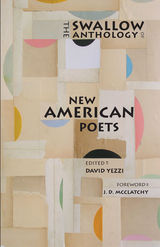 The Swallow Anthology of New American Poets
David Yezzi
Ohio University Press, 2009 Groundbreaking anthologies of this kind come along once in a generation and, in time, define that generation. The Swallow Anthology of New American Poets identifies a group of poets who have recently begun to make an important mark on contemporary poetry, and their accomplishment and influence will only grow with time. The poets gathered here do not constitute a school or movement; rather they are a group of unique artists working at the top of their craft. As editor David Yezzi writes in his introduction, “Here is a group of writers who have, perhaps for the first time since the modernist revolution of the early twentieth century, returned to a happy détente between warring camps. This, I think, is a new—at least in our age—kind of poet, who, dissatisfied with the climate of extremes, has found a balance between innovation and received form, perceiving the terror beneath the classical and the unities girding romanticism. This new unified sensibility is no watered-down admixture, no pragmatic compromise worked out in departments of creative writing, but, rather, the vital spirit behind some of the most accomplished poetry being written by America’s new poets.”
Poets include: Craig Arnold, David Barber, Rick Barot, Priscilla Becker, Geoffrey Brock, Daniel Brown, Peter Campion, Bill Coyle, Morri Creech, Erica Dawson, Ben Downing, Andrew Feld, John Foy, Jason Gray, George Green, Joseph Harrison, Ernest Hilbert, Adam Kirsch, Joanie Mackowski, Eric McHenry, Molly McQuade, Joshua Mehigan, Wilmer Mills, Joe Osterhaus, J. Allyn Rosser, A. E. Stallings, Pimone Triplett, Catherine Tufariello, Deborah Warren, Rachel Wetzsteon, Greg Williamson, Christian Wiman, Mark Wunderlich, David Yezzi, and C. Dale Young.
Swallowing the Sea: On Writing & Ambition, Boredom, Purity & Secrecy
Lee Upton
Tupelo Press, 2012 This is an inspiring book about writing and—more unusually—a book that honors ambition, that idiosyncratic drive that compels writers and other artists to action despite every kind of obstacle. Upton explores forces that threaten our ability to fulfill the most daring aspirations, and she examines ambition’s adjuncts, including failure, boredom, and purity, offering a provocative antidote:obsession. Ultimately Upton argues for a new perception of literary art as “a good secret” for our time, when our interior lives and our imaginations are under threat.
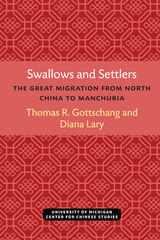 Swallows and Settlers: The Great Migration from North China to Manchuria
Thomas R. Gottschang and Diana Lary
University of Michigan Press, 2000 Between the 1890s and the Second World War, twenty-five million people traveled from the densely populated North China provinces of Shandong and Hebei to seek employment in the growing economy of China's three northeastern provinces, the area known as Manchuria. This was the greatest population movement in modern Chinese history and ranks among the largest migrations in the world. Swallows and Settlers is the first comprehensive study of that migration. Drawing methods from their respective fields of economics and history, the coauthors focus on both the broad quantitative outlines of the movement and on the decisions and experiences of individual migrants and their families. In readable narrative prose, the book lays out the historical relationship between North China and the Northeast (Manchuria) and concludes with an examination of ongoing population movement between these regions since the founding of the People's Republic in 1949.
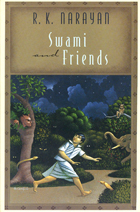 Swami and Friends
R. K. Narayan
University of Chicago Press, 1980 "There are writers—Tolstoy and Henry James to name two—whom we hold in awe, writers—Turgenev and Chekhov—for whom we feel a personal affection, other writers whom we respect—Conrad for example—but who hold us at a long arm's length with their 'courtly foreign grace.' Narayan (whom I don't hesitate to name in such a context) more than any of them wakes in me a spring of gratitude, for he has offered me a second home. Without him I could never have known what it is like to be Indian."—Graham Greene
Offering rare insight into the complexities of Indian middle-class society, R. K. Narayan traces life in the fictional town of Malgudi. The Dark Room is a searching look at a difficult marriage and a woman who eventually rebels against the demands of being a good and obedient wife. In Mr. Sampath, a newspaper man tries to keep his paper afloat in the face of social and economic changes sweeping India. Narayan writes of youth and young adulthood in the semiautobiographical Swami and Friends and The Bachelor of Arts. Although the ordinary tensions of maturing are heightened by the particular circumstances of pre-partition India, Narayan provides a universal vision of childhood, early love and grief.
"The experience of reading one of his novels is . . . comparable to one's first reaction to the great Russian novels: the fresh realization of the common humanity of all peoples, underlain by a simultaneous sense of strangeness—like one's own reflection seen in a green twilight."—Margaret Parton, New York Herald Tribune
"The novels of R.K. Narayan are the best I have read in any language for a long time. . . . His work gives the conviction that it is possible to capture in English, a language not born of India, the distinctive characteristics of Indian family life."—Amit Roy, Daily Telegraph
Swamp Candles
Ralph Burns
University of Iowa Press, 1996 In his convincing and highly accomplished fifth book, Ralph Burns draws on his deep practice and experience. His tones, forms, and subjects are various and striking, and the work of a poet mature and courageous enough to range through the full spectrum of his emotions. Sometimes Burns is haunted by the strength and fallibility of the Christian tradition, and in many of his poems he explores the conflicts between individuals and the larger world—the mystery and responsibility of choice, consequence and inconsequence, “the terror of being taken.”
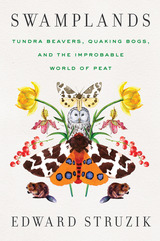 Swamplands: Tundra Beavers, Quaking Bogs, and the Improbable World of Peat
Edward Struzik
Island Press, 2021 In a world filled with breathtaking beauty, we have often overlooked the elusive charm and magic of certain landscapes. A cloudy river flows into a verdant Arctic wetland where sandhill cranes and muskoxen dwell. Further south, cypress branches hang low over dismal swamps. Places like these–collectively known as swamplands or peatlands–often go unnoticed for their ecological splendor. They are as globally significant as rainforests, and function as critical carbon sinks for addressing our climate crisis. Yet, because of their reputation as wastelands, they are being systematically drained and degraded to make way for oilsands, mines, farms, and electricity.
In Swamplands, journalist Edward Struzik celebrates these wild places, venturing into windswept bogs in Kauai and the last remnants of an ancient peatland in the Mojave Desert. The secrets of the swamp aren’t for the faint of heart. Ed loses a shoe to an Arctic wolf and finds himself ankle-deep in water during a lightning storm. But, the rewards are sweeter for the struggle: an enchanting Calypso orchid; an elusive yellow moth thought to be extinct; ancient animals preserved in lifelike condition down to the fur.
Swamplands highlights the unappreciated struggle being waged to save peatlands by scientists, conservationists, and landowners around the world. An ode to peaty landscapes in all their offbeat glory, the book is also a demand for awareness of the myriad threats they face. It urges us to see the beauty and importance in these least likely of places. Our planet’s survival might depend on it.
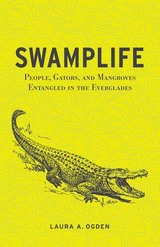 Swamplife: People, Gators, and Mangroves Entangled in the Everglades
Laura A. Ogden
University of Minnesota Press, 2010 Little in North America is wilder than the Florida Everglades—a landscape of frightening reptiles, exotic plants in profusion, swarms of mosquitoes, and unforgiving heat. And yet, even from the early days of taming the wilderness with clearing and drainage, the Everglades has been considered fragile, unique, and in need of restorative interventions. Drawing on a decade of fieldwork with hunters in the Everglades, Laura A. Ogden explores the lives and labors of people, animals, and plants in this most delicate and tenacious ecosystem.
Today, the many visions of the Everglades—protectionist, ecological, commercial, historical—have become a tangled web of contradictory practices and politics for conservation and for development. Yet within this entanglement, the place of people remains highly ambivalent. It is the role of people in the Everglades that interests Ogden, as she seeks to reclaim the landscape’s long history as a place of human activity and, in doing so, discover what it means to be human through changing relations with other animals and plant life.
Ogden tells this story through the lives of poor rural whites, gladesmen, epitomized in tales of the Everglades’ most famous outlaws, the Ashley Gang. With such legends and lore on one side, and outsized efforts at drainage and development on the other, Swamplife strikes a rare balance, offering a unique insight into the hidden life of the Everglades—and into how an appreciation of oppositional culture and social class operates in our understanding of wilderness in the United States.
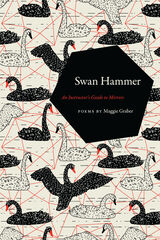 Swan Hammer: An Instructor’s Guide to Mirrors
Maggie Graber
Michigan State University Press, 2022 This collection chronicles coming of age as a queer millennial in a twenty-first century America defined by the internet, climate crisis, and a growing disconnection that the poems within work to resist. Here, everyone and everything serves as a potential reflection for something larger than the poet can understand: an unknown debit card thief, the cartoon teacher Ms. Frizzle, The Weather Channel, an RV park, a dead poet. These poems seek to make something of the spaces between and reach toward a sense of the ecstatic just beyond. They are poems of imagination and vision that strive to look rather than look away, that attempt to capture a nebulous feeling before it is gone for good. Swan Hammer is an instructor’s guide to connection-making, of seeing and then seeing again, in ways that have been redefined in the age of the internet. Here is one poet’s wandering relationship to their own sense of what it is to be alive and queer at a time when there is so much on the brink of disappearing—and what a queer experience it is.
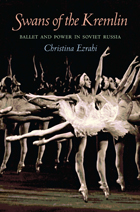 Swans of the Kremlin: Ballet and Power in Soviet Russia
Christina Ezrahi
University of Pittsburgh Press, 2012 Classical ballet was perhaps the most visible symbol of aristocratic culture and its isolation from the rest of Russian society under the tsars. In the wake of the October Revolution, ballet, like all of the arts, fell under the auspices of the Soviet authorities. In light of these events, many feared that the imperial ballet troupes would be disbanded. Instead, the Soviets attempted to mold the former imperial ballet to suit their revolutionary cultural agenda and employ it to reeducate the masses. As Christina Ezrahi’s groundbreaking study reveals, they were far from successful in this ambitious effort to gain complete control over art.
Swans of the Kremlin offers a fascinating glimpse at the collision of art and politics during the volatile first fifty years of the Soviet period. Ezrahi shows how the producers and performers of Russia’s two major troupes, the Mariinsky (later Kirov) and the Bolshoi, quietly but effectively resisted Soviet cultural hegemony during this period. Despite all controls put on them, they managed to maintain the classical forms and traditions of their rich artistic past and to further develop their art form. These aesthetic and professional standards proved to be the power behind the ballet’s worldwide appeal. The troupes soon became the showpiece of Soviet cultural achievement, as they captivated Western audiences during the Cold War period.
Based on her extensive research into official archives, and personal interviews with many of the artists and staff, Ezrahi presents the first-ever account of the inner workings of these famed ballet troupes during the Soviet era. She follows their struggles in the postrevolutionary period, their peak during the golden age of the 1950s and 1960s, and concludes with their monumental productions staged to celebrate the fiftieth anniversary of the revolution in 1968.
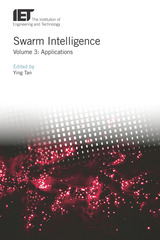 Swarm Intelligence: Applications, Volume 3
Ying Tan
The Institution of Engineering and Technology, 2018 Swarm Intelligence (SI) is one of the most important and challenging paradigms under the umbrella of computational intelligence. It focuses on the research of collective behaviours of a swarm in nature and/or social phenomenon to solve complicated and difficult problems which cannot be handled by traditional approaches. Thousands of papers are published each year presenting new algorithms, new improvements and numerous real world applications. This makes it hard for researchers and students to share their ideas with other colleagues; follow up the works from other researchers with common interests; and to follow new developments and innovative approaches. This complete and timely collection fills this gap by presenting the latest research systematically and thoroughly to provide readers with a full view of the field of swarm. Students will learn the principles and theories of typical swarm intelligence algorithms; scholars will be inspired with promising research directions; and practitioners will find suitable methods for their applications of interest along with useful instructions.
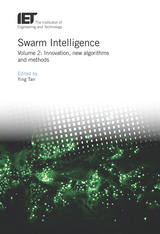 Swarm Intelligence: Innovation, new algorithms and methods, Volume 2
Ying Tan
The Institution of Engineering and Technology, 2018 Swarm Intelligence (SI) is one of the most important and challenging paradigms under the umbrella of computational intelligence. It focuses on the research of collective behaviours of a swarm in nature and/or social phenomenon to solve complicated and difficult problems which cannot be handled by traditional approaches. Thousands of papers are published each year presenting new algorithms, new improvements and numerous real world applications. This makes it hard for researchers and students to share their ideas with other colleagues; follow up the works from other researchers with common interests; and to follow new developments and innovative approaches. This complete and timely collection fills this gap by presenting the latest research systematically and thoroughly to provide readers with a full view of the field of swarm. Students will learn the principles and theories of typical swarm intelligence algorithms; scholars will be inspired with promising research directions; and practitioners will find suitable methods for their applications of interest along with useful instructions.
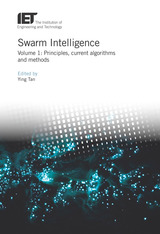 Swarm Intelligence: Principles, current algorithms and methods, Volume 1
Ying Tan
The Institution of Engineering and Technology, 2018 Swarm Intelligence (SI) is one of the most important and challenging paradigms under the umbrella of computational intelligence. It focuses on the research of collective behaviours of a swarm in nature and/or social phenomenon to solve complicated and difficult problems which cannot be handled by traditional approaches. Thousands of papers are published each year presenting new algorithms, new improvements and numerous real world applications. This makes it hard for researchers and students to share their ideas with other colleagues; follow up the works from other researchers with common interests; and to follow new developments and innovative approaches. This complete and timely collection fills this gap by presenting the latest research systematically and thoroughly to provide readers with a full view of the field of swarm. Students will learn the principles and theories of typical swarm intelligence algorithms; scholars will be inspired with promising research directions; and practitioners will find suitable methods for their applications of interest along with useful instructions.
 Swarms, Viral Writing, and the Local: Rhetorical Dynamics across Networked Publics
Carl W. Whithaus
University of Pittsburgh Press, 2024 Swarms, Viral Writing, and the Local examines the social and rhetorical dynamics around emerging writing technologies. Carl Whithaus argues that these dynamics work across networked publics as patterns of behavior and ways of interacting through and with multimodal texts. This rhetorical analysis of the production and reception of born-digital rhetoric shows the ongoing and evolving impacts of online public discourse that can lead to bad restaurant reviews or the subversion of democracy. It is a networked process that gains significance because of the interplay and tensions between the global and the local. As these texts are created, distributed, received, and then recreated and shared again in viral ways, different messages resonate across media ecologies. Whithaus documents how emerging social dynamics shape—and are shaped by—digital writing, reading, and distribution technologies.
 The Swarts Ruin: A Typical Mimbres Site in Southwestern New Mexico
H. S. Cosgrove and C. Burton Cosgrove
Harvard University Press In 1919, C. Burton and Hattie S. Cosgrove bought land in Grant Country, New Mexico, and began excavating ruins containing Classic Mimbres (ca. A.D. 1000-1150) ceramics. The self-trained archaeologists took great care in uncovering and recording their findings. They so impressed A.V. Kidder of the Peabody Museum when he visited the site he invited them to manage a museum expedition to the Swarts Ruin.
Long out of print, this classic volume is the Cosgrove's report of their Mimbres Valley Expedition seasons of 1924 to 1927. The excavation recorded nearly 10,000 artifacts, including an extraordinary assemblage of Mimbres ceramics. Hattie Cosgrove's meticulous line drawings of over 700 individual Swarts Ruin pots have long been an invaluable design catalog for contemporary Native American artists and serve as a rich resource for designers seeking Southwest inspiration in their work.
This clothbound facsimile edition of the original 1932 publication will be an essential to the libraries of all scholars, artists, and admirers of Native American art and archaeology.
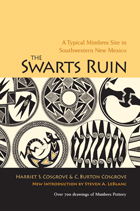 The Swarts Ruin: A Typical Mimbres Site in Southwestern New Mexico, With a New Introduction by Steven A. LeBlanc
H. S. Cosgrove and C. Burton Cosgrove
Harvard University Press, 2011 This classic volume on the evocative and enigmatic pottery of the Mimbres people has become an irreplaceable design catalogue for contemporary Native American artists. Burt and Harriet (Hattie) Cosgrove were self-trained archaeologists who began excavating Mimbres materials in 1919. When their meticulous research came to the attention of Alfred V. Kidder of the Peabody Museum, he invited them to direct the Mimbres Valley Expedition at the Swarts Ranch in southern New Mexico on behalf of the Peabody.
Working in the summers of 1924 to 1927, the Cosgroves recovered nearly 10,000 artifacts at the Swarts site, including an extraordinary assemblage of Mimbres ceramics. Like their original 1932 report, this paperbound facsimile edition includes over 700 of Hattie Cosgrove’s beautiful line drawings of individual Mimbres pots. It also presents a new introduction by archaeologist Steven A. LeBlanc, who reviews the eighty years of research on the Mimbres that have followed the Cosgroves’ groundbreaking study. The Peabody’s reissue of The Swarts Ruin once again makes available a rich resource for scholars, artists, and admirers of Native American art, and it places in historical context the Cosgroves’ many contributions to North American archaeology.
Swaying: Essays On Intercultural Love
Jessie Carroll Grearson
University of Iowa Press, 1995
Intercultural couples struggle, often quite successfully, with the kind of questions anyone who wants to live responsibly in a multicultural world must raise. They live, as we must all learn to do, in a place where multiple cultures find expression. This engaging anthology of literary nonfiction celebrates the creative potential of choosing diversity and explores in many voices the real-life social, cultural, and spiritual consequences of this choice. These are the honest voices of women who have made commitments across national and cultural lines, who have moved toward the revitalizing and educating potential of such partnerships.
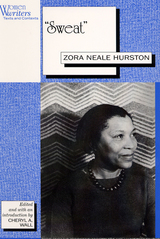 "Sweat": Written by Zora Neale Hurston
Wall, Cheryl A
Rutgers University Press, 1997 Now frequently anthologized, Zora Neale Hurston's short story "Sweat" was first published in Firell, a legendary literary magazine of the Harlem Renaissance, whose sole issue appeared in November 1926. Among contributions by Gwendolyn Bennett, Countee Cullen, Langston Hughes, and Wallace Thurman, "Sweat" stood out both for its artistic accomplishment and its exploration of rural Southern black life. In "Sweat" Hurston claimed the voice that animates her mature fiction, notably the 1937 novel Their Eyes Were Watching God; the themes of marital conflict and the development of spiritual consciousness were introduced as well. "Sweat" exemplifies Hurston's lifelong concern with women's relation to language and the literary possibilities of black vernacular. This casebook for the story includes an introduction by the editor, a chronology of the author's life, the authoritative text of "Sweat," and a second story, "The Gilded Six-Bits." Published in 1932, this second story was written after Hurston had spent years conducting fieldwork in the Southern United States. The volume also includes Hurston's groundbreaking 1934 essay, "Characteristics of Negro Expression," and excerpts from her autobiography, Dust Tracks on a Road. An article by folklorist Roger Abrahams provides additional cultural contexts for the story, as do selected blues and spirituals. Critical commentary comes from Alice Walker, who led the recovery of Hurston's work in the 1970s, Robert Hemenway, Henry Louis Gates, Gayl Jones, John Lowe, Kathryn Seidel, and Mary Helen Washington.
Sweated Work, Weak Bodies: Anti-Sweatshop Campaigns and Languages of Labor
Bender, Daniel E.
Rutgers University Press, 2004 In the early 1900s, thousands of immigrants labored in New Yorks Lower East Side sweatshops, enduring work environments that came to be seen as among the worst examples of Progressive-Era American industrialization. Although reformers agreed that these unsafe workplaces must be abolished, their reasons have seldom been fully examined. Sweated Work, Weak Bodies is the first book on the origins of sweatshops, exploring how they came to represent the dangers of industrialization and the perils of immigration. It is an innovative study of the language used to define the sweatshop, how these definitions shaped the first anti-sweatshop campaign, and how they continue to influence our current understanding of the sweatshop.
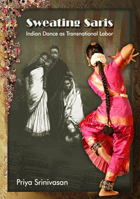 Sweating Saris: Indian Dance as Transnational Labor
Priya Srinivasan
Temple University Press, 2011 A groundbreaking book that seeks to understand dance as labor, Sweating Saris examines dancers not just as aesthetic bodies but as transnational migrant workers and wage earners who negotiate citizenship and gender issues.
Srinivasan merges ethnography, history, critical race theory, performance and post-colonial studies among other disciplines to investigate the embodied experience of Indian dance. The dancers’ sweat stained and soaked saris, the aching limbs are emblematic of global circulations of labor, bodies, capital, and industrial goods. Thus the sweating sari of the dancer stands in for her unrecognized labor.
Srinivasan shifts away from the usual emphasis on Indian women dancers as culture bearers of the Indian nation. She asks us to reframe the movements of late nineteenth century transnational Nautch Indian dancers to the foremother of modern dance Ruth St. Denis in the early twentieth century to contemporary teenage dancers in Southern California, proposing a transformative theory of dance, gendered-labor, and citizenship that is far-reaching.
The Sweating Sickness: Poems
Rebecca Lehmann
University of Pittsburgh Press, 2025 a new collection of poetry from the author of the AWP Donald Hall Prize winning Ringer.
 Sweatshop Capital: Profit, Violence, and Solidarity Movements in the Long Twentieth Century
Beth Robinson
Duke University Press, 2025 In Sweatshop Capital, Beth Robinson examines the brutal sweatshop labor conditions that produced American consumer goods from the late nineteenth through the early twenty-first centuries, as well as the labor and social movements that contested them. Arguing that sweatshop labor is a persistent feature of capitalism, she shows how manufacturers used both their influence in government and their mobility to sidestep US labor laws, maximize profits, and perpetuate abuses. She outlines how workers and their allies routinely confronted manufacturers by building solidarity networks across race, class, and national lines. Drawing on activists’ literature, news accounts, archival sources, and oral histories, Robinson presents the long history of the antisweatshop movements that responded to American capital’s pursuit of profit through hyperexploitation with a wide range of protest, legal action, and creativity. Beginning with the sweatshops and reformers of the Progressive Era, Robinson moves through the Great Depression and the activism of the Popular Front, the “free trade” globalization of the 1990s and its discontents, and, finally, the global cyber and gig economies of the twenty-first century and the growing movements to rein them in.
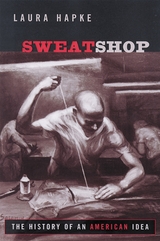 Sweatshop: The History of an American Idea
Hapke, Laura
Rutgers University Press, 2004 Arguing that the sweatshop is as American as apple pie, Laura Hapke surveys over a century and a half of the language, verbal and pictorial, in which the sweatshop has been imagined and its stories told. Not seeking a formal definition of the sort that policymakers are concerned with, nor intending to provide a strict historical chronology, this unique book shows, rather, how the “real” sweatshop has become intertwined with the “invented” sweatshop of our national imagination, and how this mixture of rhetoric and myth has endowed American sweatshops with rich and complex cultural meaning.
Hapke uncovers a wide variety of tales and images that writers, artists, social scientists, reformers, and workers themselves have told about “the shop.” Adding an important perspective to historical and economic approaches, Sweatshop draws on sources from antebellum journalism, Progressive era surveys, modern movies, and anti-sweatshop websites. Illustrated chapters detail how the shop has been a facilitator of assimilation, a promoter of upward mobility, the epitome of exploitation, a site of ethnic memory, a venue for political protest, and an expression of twentieth-century managerial narratives.
An important contribution to the real and imagined history of garment industry exploitation, this book provides a valuable new context for understanding contemporary sweatshops that now represent the worst expression of an unregulated global economy.
 Sweden: A Modern Democracy on Ancient Foundations
Nils Herlitz
University of Minnesota Press, 1939
Sweden was first published in 1939. Minnesota Archive Editions uses digital technology to make long-unavailable books once again accessible, and are published unaltered from the original University of Minnesota Press editions.
Believing the journalists have done both the United States and Sweden a disservice in playing up Sweden as a democratic utopia and overemphasizing the importance of cooperatives, the author presents the facts as they appear to a Swedish publicist with a profound knowledge of the government and problems of his country.
To the English-reading public he now offers this succinct yet comprehensive survey of Swedish government and the essentials of its historical background. He has succeeded in presenting at the same time much of the spirit and the life of the Swedish people and their politics.
The aspects of Swedish life which Professor Herlitz treats are very little understood in foreign countries and should be taken into account by anyone who aspires to know the Sweden of today. His opening review of the historical development of the Swedish constitution may be studied with profit by all who are interested in government.
Of particular timeliness is his account of the rise of the Socialist party to dominance and his explanation of why many people see in the present government (with its majority coalition) the beginning of dictatorship.
After describing the organization and work of the riksdag and its relations to the government, he surveys public administration and civil service in Sweden. His chapter on "The Service-State" covers numerous topics of current interest, such as government monopolies, social legislation, relief problems, old-age pensions, and farm adjustment.
The book is an amplification of a series of lectures delivered by Professor Herlitz in the United States in the spring of 1938 in connection with the Swedish Tercentenary celebration.
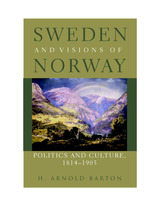 Sweden and Visions of Norway: Politics and Culture 1814-1905
H. Arnold Barton
Southern Illinois University Press, 2002 H. Arnold Barton investigates Norwegian political and cultural influences in Sweden during the period of the Swedish-Norwegian dynastic union from 1814 to 1905. Although closely related in origins, indigenous culture, language, and religion, Sweden and Norway had very different histories, resulting in strongly contrasting societies and forms of government before 1814. After a proud medieval past, Norway had come under the Danish crown in the fourteenth century and had been reduced to virtually a Danish province by the sixteenth. In 1814, as a spin-off of the Napoleonic Wars, Denmark relinquished Norway, which became a separate kingdom, dynastically united with Sweden with its own government under a constitution independently framed that year. Disputes during the next ninety-one years caused Norway unilaterally to dissolve the tie. Seeing the union a failure, most historians have concentrated on its conflicts. Barton, however, examines the impact of the union on internal developments, particularly in Sweden. Prior to 1814, Norway, unlike Sweden, had no constitution and only the rudiments of higher culture, yet paradoxically, Norway exerted a greater direct influence on Sweden than vice versa. Reflecting a society lacking a native nobility, Norway’s 1814 constitution was—with the exception of that of the United States—the most democratic in the world. It became the guiding star of Swedish liberals and radicals striving to reform the antiquated system of representation in their parliament. Norway’s cultural void was filled with a stellar array of artists, writers, and musicians, led by Bjørnsjerne Børnson, Henrik Ibsen, and Edvard Grieg. From the 1850s through the late 1880s, this wave of Norwegian creativity had an immense impact on literature, art, and music in Sweden. By the 1880s, however, August Strindberg led a revolt against an exaggerated “Norvegomania” in Sweden. Barton sees this reaction as a fundamental inspiration to Sweden’s intense search for its own cultural character in the highly creative Swedish National Romanticism of the 1890s and early twentieth century. Thirty-three illustrations of art and architecture enhance Sweden and Visions of Norway.
Sweden, Enlarged Edition: The Nation's History
By Franklin D. Scott. Epilogue by Steven Koblik
Southern Illinois University Press, 1988 Steven Koblik’s epilogue extends Scott’s now standard text with an analysis of contemporary Swedish political, economic, and social behavior. In addition to the epilogue, Scott has made a number of alterations in the text in order to maintain the timeliness and comprehensiveness of the work. Using a chronological-topical structure, Scott shows how and why Sweden progressed from times of backwardness to an age of military greatness, through two centuries of cultural development and relapse into poverty followed by a sudden outburst of productive energy and the creation of an exceptionally prosperous welfare state where the ideal is consensus rather than confrontation.
Swedenborg and Esoteric Islam
HENRY CORBIN
Swedenborg Foundation Publishers, 1995 This volume makes two essays by Henry Corbin, the eminent French scholar of Islam, available in English for the first time. Although his primary interest was the esoteric tradition of Islam, Corbin was also a lifelong student of the theological works of Emanuel Swedenborg. The first essay, "Mundus Imaginalis, or The Imaginary and the Imaginal," clarifies Corbin's use of the term he coined, mundus imaginalis, or "the imaginal world." This important concept appears in both Swedenborgian and esoteric Islamic spirituality. The second piece, "Comparative Spiritual Hermeneutics," compares the revelation of the internal sense of the sacred boks of two distinct religions, Christianity and Islam.
Swedenborg and His Readers: Selected Essays
John Chadwick
Swedenborg Foundation Publishers, 2003 Swedenborg and His Readers by John Chadwick is a collection of essays that addresses the problems of translation and the bridging of the cultural and historical divide between readers of today and texts written in centuries past. The essays focus on Chadwick’s groundbreaking work as a translator of Swedish philosopher and mystic Emanuel Swedenborg (1688–1772), but many of the issues raised are applicable to the broader study of language beyond that. This volume is the first in the Journal of the Swedenborg Society series. It contains five essays by John Chadwick entitled:
• “Swedenborg and His Readers”
• “On Translating The True Christian Religion”
• “On Conjugial Love”
• “On The Worlds in Space”
• “The Translator and the Latin Text”
Also included in the volume are “A Personal Tribute to John Chadwick” by G. P. Dawson; an introduction by Stephen McNeilly, a bibliography, and an index.
SWEDENBORG AND NEW PARADIGM SCIENCE
URSULA GROLL
Swedenborg Foundation Publishers, 2000
Ursula Groll relates the metaphysical thought of Emanuel Swedenborg to current New Paradigm science, especially to the interface of science and spirituality. By providing extensive excerpts from Swedenborg's works and drawing parallels between his visionary insights and the works of philosophers and physicists such as David Bohm, Fritjof Capra, Rupert Sheldrake, and Albert Einstein, Groll shows how Swedenborg's voyage of discovery led him increasingly from the great to the small, from the outer to the inner, until he discovered the mirror of the universe, the seat of the Divine as the source of truth.
Swedenborg: Buddha of the North
D.T. SUZUKI
Swedenborg Foundation Publishers, 1996 "…important for anyone who is concerned with inter-religious dialogue and the meaning of… visionary mysticism."
--The Reader's Review
This first complete English translation of two works by Zen scholar D.T. Suzuki introduces Emanuel Swedenborg and compares Swedenborgian thought to Buddhism. The first work stresses Swedenborg's message that true spirituality demands an engagement in this world; the second compares Swedenborg's description of heaven to the paradise of Pure Land Buddhism.
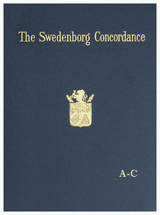 The Swedenborg Concordance: A Complete Work of Reference to the Theological Writings of Emanuel Swedenborg. Based on the Original Latin Writings of the Author
John Faulkner Potts
Swedenborg Foundation Publishers, 1976 The Swedenborg Concordance is one of the most comprehensive reference tools on the writings of the eighteenth-century Swedish philosopher and mystic Emanuel Swedenborg to ever be produced. Printed in six volumes, The Concordance contains a subject index of nearly eight thousand entries spanning across Swedenborg’s entire theological output, listing every instance where these terms occur along with concise and helpful illustrative quotations. The terms are arranged alphabetically in English with the supporting citations also given in English translation. The original Latin words of which the terms are translations are given beside the headwords of each entry.
The Concordance is a “must have” for scholars of Swedenborg, providing a much-needed shortcut for anyone researching themes and ideas across Swedenborg’s works.
The six volumes are arranged as follows:
• Volume I, letters A-C + Introduction
• Volume II, letters D-F
• Volume III, letters G-J
• Volume IV, letters K-N
• Volume V, letters O-Sq
• Volume VI, letters St-Z + Appendix, Latin-English Vocabulary, Errata & Corrigenda
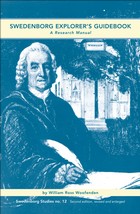 SWEDENBORG EXPLORER'S GUIDEBOOK: A RESEARCH MANUAL
WILLIAM ROSS WOOFENDEN
Swedenborg Foundation Publishers, 2008
For more than 250 years, followers of scientist and visionary Emanuel Swedenborg have been translating and commenting on his writings, and for those unfamiliar with Swedenborg's works, it can be a difficult field to navigate. This revised and expanded edition of the Swedenborg Explorer's Guidebook offers:
* An annotated bibliography of all primary works by Emanuel Swedenborg -- including scientific, literary, and theological writings as well as personal letters and journals -- containing the latest information on holdings, publication dates, and available translations.
* An extensive annotated bibliography of secondary literature, including major biographies, bibliographies, analyses of Swedenborg's works, dissertations and theses, historical writings about the New Church, and works on and by prominent figures in the Swedenborgian community.
* Easy-to-use listings of Swedenborg's works by date, by subject, and by title, with cross-references to each title's bibliographic information.
* A glossary of special terms used in Swedenborg's writings.
* A listing of major documentary collections in the United States and Europe.
* A chronology of Swedenborg's life and works
* An expanded index
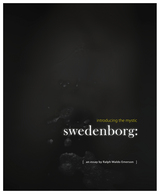 Swedenborg: Introducing the Mystic
Ralph Waldo Emerson
Swedenborg Foundation Publishers, 2009 Ralph Waldo Emerson’s groundbreaking essay on Emanuel Swedenborg (1688–1772), originally published in Emerson’s book Representative Men in 1850, places the Swedish philosopher and mystic alongside other great men of genius, including Michel de Montaigne and William Shakespeare. Casting a sharp critical eye over the central tenets of Swedenborg’s philosophy, Emerson examines the dynamic relationship between Swedenborg’s mysticism and his scientific ways of reasoning.
Innovative, critically aware, and thoroughly engaging, Emerson’s essay is an indispensable tool in reading Swedenborg and understanding his subsequent influence on writers as established and respected as August Strindberg and Jorge Luis Borges. This accessible new edition includes a contextual introduction by Stephen McNeilly, a chronology of Swedenborg’s life and works, a chronology of Emerson’s life and works, endnotes, and an index.
Swedenborg, Mesmer, and the Mind/Body Connection: The Roots of Complementary Medicine
John S. Haller
Swedenborg Foundation Publishers, 2010 Complementary and alternative healing encompass a wide range of practices that share a common ground: the belief that our physical well-being is inextricably linked to an unseen world beyond our physical senses. Our view of that world can be traced to two key thinkers: Emanuel Swedenborg and Franz Anton Mesmer. Who were these men, and what shaped their thought? How did their ideas capture the public imagination? How did they speak to movements as diverse as utopianism, Spiritualism, psychic healing, and homeopathy? Historian John S. Haller traces the threads of Swedenborg’s and Mesmer’s influence through the history of nineteenth-century medicine, illuminating the lasting impact these men have had on concepts of alternative healing.
Swedenborg, Oetinger, Kant: Three Perspectives on the Secrets of Heaven
WOUTER J. HANEGRAAFF
Swedenborg Foundation Publishers, 2007 In this meticulous study, Wouter Hanegraaff examines the structure, themes, and development of Emanuel Swedenborg's massive work Secrets of Heaven (Arcana Coelestia), published between 1749 and 1756. Written as a work of biblical exegesis (of Genesis and Exodus), Swedenborg also interpolated material on his visionary experiences, which have long fascinated readers.
In the second part of the study, Dr. Hanegraaff examines the contemporary reception of the multi-volume work, particularly the critical reactions of Immanuel Kant and Friedrich Christoph Oetinger. He finds that Swedenborg's biblical exegesis, so important in his divine calling, was largely ignored in favor of the mystical experiences.
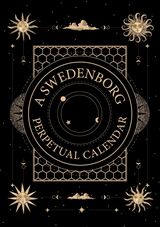 A Swedenborg Perpetual Calendar: Thoughts for the Day to Return to Year after Year
Emanuel Swedenborg
Swedenborg Foundation Publishers, 2023 A daily book of insights from Emanuel Swedenborg.
A Swedenborg Perpetual Calendar, originally published in 1902 by the Swedenborg Publishing Association, is a daily devotional calendar consisting of thought-provoking quotes by Emanuel Swedenborg (1688–1772), an Enlightenment-era philosopher, scientist, and mystic whose ideas have inspired generations of religious thinkers and literary figures alike. The Swedenborg Foundation’s new edition of this insightful collection not only includes modern translations of excerpts from the most up-to-date editions and translations of his works but it also provides a fresh perspective on a variety of Swedenborg’s spiritual themes, such as divine love and wisdom, regeneration, divine providence, correspondences, and the afterlife. A useful tool for anyone in search of daily inspiration, A Swedenborg Perpetual Calendar is a timeless treasure that will help guide readers at each step of their spiritual journey.
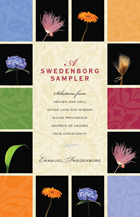 A Swedenborg Sampler: Selections from Heaven and Hell, Divine Love and Wisdom, Divine Providence, True Christianity, and Secrets of Heaven
Emanuel Swedenborg
Swedenborg Foundation Publishers, 2011 Swedish scientist and theologian Emanuel Swedenborg wrote volumes upon volumes based on the understanding he gained through visits to the spiritual world and from conversations with its inhabitants. For new readers of Swedenborg, knowing where to start and what to read can present an insurmountable task. This volume is a good starting point and provides samples of some of his most powerful writings, now available in new, contemporary translations.
What happens to our souls after we die? What is the afterlife like? What is the nature of God? Of evil? What can we do during our lives to help guide us to heaven? What kinds of answers can we find in the Bible? Selections from some of Swedenborg’s most popular works—Heaven and Hell, Divine Love and Wisdom, Divine Providence, Secrets of Heaven, and True Christianity—answer these questions and more.
Ideal for those new to Swedenborg’s theology, A Swedenborg Sampler offers tastes from a rich smorgasbord of spiritual insight.
SWEDENBORG'S 1714 AIRPLANE: A MACHINE TO FLY IN THE AIR
HENRY SODERBERG
Swedenborg Foundation Publishers, 1988
Though better known for his theological writings, Swedish scientist and visionary Emanuel Swedenborg (1688-1772) was also an inventor who was extraordinarily ahead of his time. One of his early designs, circa 1714, was "a machine to fly in the air" -- anticipating the modern airplane by more than 150 years. With its oval, fixed "sail," Swedenborg's contribution soars above its predecessors with its simple, workable design.
Henry Soderberg encountered this remarkable invention while research for a book on the history of flight. In this account Soderberg offers an overview on the dream of flight through the centuries and places Swedenborg at a pivotal point in aviation history.
Swedenborg's Dream Diary
LARS BERGQUIST
Swedenborg Foundation Publishers, 2001 Swedish man of letters Lars Bergquist explains the often enigmatic but always fascinating dream journal kept by Emanuel Swedenborg from 1743 to 1744. A scientist, Swedenborg meticulously recorded his dreams and visions, adding interpretations that foreshadowed modern dream analysis. After an Easter vision in 1745, Swedenborg abandoned his scientific studies and dedicated his life to studying the inner meaning of Sacred Scripture. In his diary, he reveals his daily life and the reflections that are a key to understanding his later spiritual works.
"The book enables us to follow Swedenborg...from dismal gloom to inner splendor."
--Gunnar Bronerg, Upsala Nya Tidning
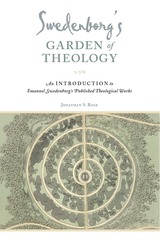 Swedenborg's Garden of Theology: An Introduction to Emanuel Swedenborg's Published Theological Works
Jonathan S. Rose
Swedenborg Foundation Publishers, 2010 When he entered the visionary phase of his life, Swedish theologian Emanuel Swedenborg (1688-1772) set out on a journey to document all that he had seen, heard, and learned while in contact with the spirits of heaven and hell. Before his death, he wrote eighteen different works published in twenty-five volumes, totaling about three and a half million words. Navigating that rich garden of thought has been a challenge even for scholars of Swedenborg, let alone those new to his work. In this compact guide, Jonathan S. Rose introduces readers to the basic concepts of Swedenborg’s thought, including Swedenborg’s view of God and the afterlife and his description of humanity’s spiritual history. Rose also examines how Swedenborg’s theology relates to other Christian denominations, both in his time and ours, and takes a side trip into some of Swedenborg’s more unusual ideas. Swedenborg’s Garden of Theology provides an ideal introduction for anyone seeking a starting point to delve into Swedenborg’s religious thought.
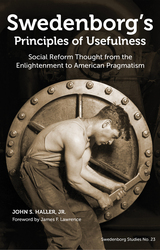 Swedenborg's Principles of Usefulness: Social Reform Thought from the Enlightenment to American Pragmatism
John S. Haller
Swedenborg Foundation Publishers, 2020 Swedenborg’s Principles of Usefulness highlights Emanuel Swedenborg’s (1688–1772) widespread influence on an impressive host of historical figures—from poets and artists to philosophers and statesmen—and reform movements whose contributions to the evolution of self and society have resonated throughout time and into the present.
As evidenced in the self-reliance of the great Ralph Waldo Emerson, who went so far as to refer to the early part of the nineteenth century as the age of Swedenborg, the socialist tendencies of Henry James, Sr., and the pragmatic philosophy of his highly esteemed son William James, Swedenborg has had a powerful impact on a number of prominent individual thinkers and their lasting traditions.
With love for one’s neighbor sharing pride of place among his ideas, it comes as no surprise that Swedenborg’s outlook on human interaction worked its way into the various social reform movements that vitalized the American landscape during the nineteenth and early twentieth centuries. From the more politically oriented single-tax movement of Henry George to the utopian aspirations of Charles Fourier and the more spiritually inclined social gospel and pastoral clinical movements, those who took Swedenborg’s principles of usefulness to heart sought ways to reflect the divine design in human society.
John Haller’s treatment of the era draws a magnifying glass to those intellectual titans whose fortitude in the face of psychological and social adversities stands as a testament to the robustness of Swedenborg’s concept of usefulness. As James F. Lawrence, Dean of the Center for Swedenborgian Studies at the Graduate Theological Union in Berkeley, California, so aptly states in his foreword, “this book tells stories and builds perspectives that will prove without a doubt to be very useful.”
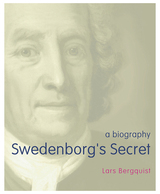 Swedenborg's Secret: The Meaning and Significance of the Word of God, the Life of the Angels, and Service to God; a Biography
LARS BERGQUIST
Swedenborg Foundation Publishers, 2005 Swedenborg’s Secret is the first major study of the eighteenth-century Swedish philosopher and mystic Emanuel Swedenborg (1688–1772) to be published in English for over fifty years, being a translation of the critically acclaimed Swedish biography Swedenborg’s Hemlighet (1999). Beautifully designed and illustrated throughout with ten color plates and forty-four black-and-white pictures, Swedenborg’s Secret is an authoritative and full-length biography that is immensely readable.
Using a wealth of historical material, Lars Bergquist paints a vivid portrait of an ambitious and practical man who was one of the greatest figures of the Enlightenment, a polymath who was a poet, inventor, mathematician, mineralogist, anatomist, and cosmologist. Bergquist also reveals Swedenborg to be a “man of two worlds,” someone who not only played an active part in the political life of his nation but who was also a spiritual visionary, setting out a stunning vision of human destiny in works such as Heaven and Hell and New Jerusalem. Swedenborg’s Secret reclaims Swedenborg from the margins of contemporary thought and places him where he belongs: as a founding figure of modern spirituality and Western philosophy.
The book also contains a chronology of Swedenborg’s life and contemporary events, an appendix listing the contents of Swedenborg’s personal library and other books he was known to have owned or read, a comprehensive bibliography, and a full index.
 Sweden’s Development From Poverty to Affluence, 1750-1970
Steven Koblik, EditorTranslated by Joanne Johnson
University of Minnesota Press, 1975 Sweden's Development From Poverty to Affluence, 1750–1970 was first published in 1975. Minnesota Archive Editions uses digital technology to make long-unavailable books once again accessible, and are published unaltered from the original University of Minnesota Press editions. Contemporary Sweden commands a degree of interest and attention from foreigners that is all out of proportion to its small size and its present position among the world powers. The country, at least since the publication of Marquis Childs's book Sweden: The Middle Way in 1936, has become synonymous with the idea of a welfare state or cradle-to-grave social security. But accurate, unbiased information about the development of modern Sweden has been scanty, and this book is designed to fill the gap. Thirteen Swedish scholars—historians, political scientists, sociologists, and an economist—look at particular aspects of Swedish history over the last two centuries. Steven Koblik, the editor, provides an extensive general introduction as well as brief introductions as background for each of the essays.
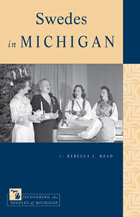 Swedes in Michigan
Rebecca J. Mead
Michigan State University Press, 2012 In the late nineteenth and early twentieth centuries, large numbers of Swedish immigrants came to Michigan seeking new opportunities in the United States and relief from economic, religious, or political problems at home. In addition to establishing early farming communities, Swedish immigrants worked on railroad construction, mining, fishing, logging, and urban manufacturing. As a result, Swedish Americans made significant contributions to the economic and cultural landscape of Michigan, a history this book explores in engaging and illustrative depth. Swedes in Michigan traces the evolution of hard-working people who valued education and assimilated actively while simultaneously maintaining their cultural ties and institutions. Moving from past to present, the book examines community patterns, family connections, social organizations, exchange programs, ethnic celebrations, and business and technical achievements that have helped Swedes in Michigan maintain a sense of their heritage even as they have adapted to American life.
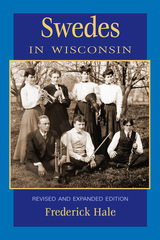 Swedes in Wisconsin
Frederick Hale
Wisconsin Historical Society Press, 2002 The revised and expanded edition of Frederick Hale’s Swedes in Wisconsin begins with the story of the state’s first legal Swedish immigrants, a group of six young people and a hunting dog who set sail from Gävle, Sweden, in 1841 and established Wisconsin’s first Swedish settlement, New Uppsala, along Pine Lake in Waukesha County.
Hale describes the mass emigration from Sweden to the Midwest that began during the late 1860s and fundamentally changed both Sweden and the Midwest. During this time more than a million Swedes left their homeland for North America, motivated at least in part by a huge population surge that overtaxed Sweden’s relatively small amount of arable land (agriculture served until the twentieth century as the Swedish economy’s mainstay).
Updates for the new edition include new photos and excerpts from letters Swedish novelist and feminist Fredrika Bremer wrote to her sister while touring the Wisconsin frontier in the autumn of 1850.
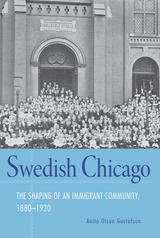 Swedish Chicago: The Shaping of an Immigrant Community, 1880–1920
Anita Olson Gustafson
Northern Illinois University Press, 2018 Between 1880 and 1920, emigration from Sweden to Chicago soared, and the city itself grew remarkably. During this time, the Swedish population in the city shifted from three centrally located ethnic enclaves to neighborhoods scattered throughout the city. As Swedes moved to new neighborhoods, the early enclave-based culture adapted to a progressively more dispersed pattern of Swedish settlement in Chicago and its suburbs. Swedish community life in the new neighborhoods flourished as immigrants built a variety of ethnic churches and created meaningful social affiliations, in the process forging a complex Swedish-American identity that combined their Swedish heritage with their new urban realities.
Chicago influenced these Swedes’ lives in profound ways, determining the types of jobs they would find, the variety of people they would encounter, and the locations of their neighborhoods. But these immigrants were creative people, and they in turn shaped their urban experience in ways that made sense to them. Swedes arriving in Chicago after 1880 benefited from the strong community created by their predecessors, but they did not hesitate to reshape that community and build new ethnic institutions to make their urban experience more meaningful and relevant. They did not leave Chicago untouched—they formed an expanding Swedish community in the city, making significant portions of Chicago Swedish. This engaging study will appeal to scholars and general readers interested in immigration and Swedish-American history.
 Swedish Cops: From Sjöwall & Wahlöö to Stieg Larsson
Michael Tapper
Intellect Books, 2014 Michael Tapper considers Swedish culture and ideas from the period 1965 to 2012 as expressed in detective fiction and film in the tradition of Maj Sjöwall and Per Wahlöö. Believing the Swedish police narrative tradition to be part and parcel of the European history of ideas and culture, Tapper argues that, from being feared and despised, the police emerged as heroes and part of the modern social project of the welfare state after World War II. Establishing themselves artistically and commercially in the forefront of the genre, Sjöwall and Wahlöö constructed a model for using the police novel as an instrument for ideological criticism of the social democratic government and its welfare state project. With varying political affiliations, their model has been adapted by authors such as Leif G. W. Persson, Jan Guillou, Henning Mankell, Håkan Nesser, Anders Roslund and Börge Hellström, and Stieg Larsson, and in film series such as Beck and Wallander. The first book of its kind about Swedish crime fiction, Swedish Cops is just as thrilling as the novels and films it analyzes.
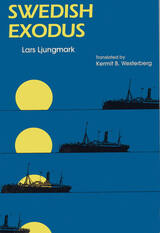 Swedish Exodus
Lars Ljungmark. Translated by Kermit B. Westerberg
Southern Illinois University Press, 1979 "America fever" gripped Sweden in the middle of the nineteenth century, seethed to a peak in 1910, when one-fifth of the world’s Swedes lived in America, cooled during World War I, and chilled to dead ash with the advent of the Great Depression in 1930. Swedish Exodus, the first English translation and revision of Lars Ljungmark’s Den Stora Utvandringen, recounts more than a century of Swedish emigration, concentrating on such questions as who came to America, how the character of the emigrants changed with each new wave of emigration, what these people did when they reached their adopted country, and how they gradually became Americanized. Ljungmark’s essential challenge was to capture in a factual account the broad sweep of emigration history. But often he narrows his focus to look closely at those who took part in this mass migration. Through historical records and personal letters, Ljungmark brings many of these people back to life. One young woman, for example, loved her parents, but loved America more: "I never expect to speak to you in this life. . . . Your loving daughter unto death." Like most immigrants, she never expected to return. Another immigrant wrote back seeking a wife: "I wonder how you have it and if you are living. . . . Are you married or unmarried? If you are unmarried, you can have a good home with me." Ljungmark also focuses closely on some of the leaders: Peter Cassel, a liberal temperance supporter and free-church leader whose community in America prospered; Hans Mattson, a colonel in the Civil War and founder of a colony in Minnesota; Erik Jansson, a book burner, self-proclaimed messiah, and founder of the Bishop Hill Colony; Gustaf Unonius, a student idealist and founder of a Wisconsin colony that faltered. The story of Swedish immigrants in the United States is the story in miniature of the greatest mass migration in human history, that of thirty-five million Europeans who left their homes to come to America. It is a human story of interest not only to Swedes but to everyone.
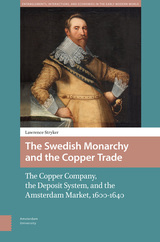 The Swedish Monarchy and the Copper Trade: The Copper Company, the Deposit System, and the Amsterdam Market, 1600-1640
Lawrence Stryker
Amsterdam University Press, 2024 In 1611, the seventeen-year-old Gustav Adolf ascended the throne of Sweden. Before the new king could sit on his throne, however, he faced a disastrous war against Denmark, another conflict in Russia, and a rebellious nobility at home. Plus, Sweden itself had an arctic climate and a short growing season. Clearly Gustav II Adolf faced great difficulties even to survive. Yet by the end of the next decade, Gustav II Adolf’s Sweden was a leading military power in continental Europe. In 1630 the king invaded the Holy Roman Empire and joined the Thirty Years War to defend the Protestant cause. How was this possible? Sweden had one major asset, the Stora Kopparberg, the largest copper mine in Europe. The king exploited the mine and used the revenue to finance his political and military ambitions. This is the story of Gustav II Adolf’s efforts to improve efficiencies at the mine and control the marketing of its bounty.
The Swedish Porn Scene: Exhibition Contexts, 8mm Pornography and the Sex Film
Mariah Larsson
Intellect Books, 2016 This book presents a close look at the golden age of Swedish pornography in the 1970s, with a specific focus on pornographic films screened in Malmö between 1971 and 1976. How, Mariah Larsson asks, was that one small city’s embrace of the era’s sexual liberation both representative and unique in relation to the rest of Sweden?
Combining contemporary case studies with comprehensive analyses of advertisements, critical responses, and censorship records, Larsson deconstructs the complexities and paradoxes of the Swedish porn scene. Looking as closely at the exhibition spaces where porn was seen as at the productions themselves and their audiences, Larsson reveals the conditions and social changes that allowed pornography in Sweden to flourish in the period.
 The Swedish Prophet: Reflections on the Visionary Philosophy of Emanuel Swedenborg
Jose Antonio Anton-Pacheco
Swedenborg Foundation Publishers, 2012 José Antonio Antón-Pacheco exercises his expertise in philosophy in this meditation on the ideas of Emanuel Swedenborg. In this book he tackles subjects as diverse as the nature of unity and the way that the Divine manifests in the world; the nature of human beings as they relate to the higher realms, and specifically Swedenborg’s concept of the Grand Man or Universal Human; the mystical nature of Swedenborg’s interpretation of the Bible; and the nature of time and space in the spiritual world. Alongside his exploration of Swedenborg’s thought are examinations of Swedenborg’s influence on a variety of different thinkers and authors, from Jorge Luis Borges to Ibn ’Arabi. This book was originally published in Spanish as El profeta del norte: Un libro sobre Swedenborg. Perfect for scholars and serious students of Swedenborg’s thought, Antón Pacheco’s powerful writing casts a new light on the Swedish prophet.
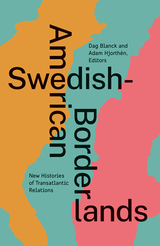 Swedish-American Borderlands: New Histories of Transatlantic Relations
Dag Blanck
University of Minnesota Press, 2021 Reframing Swedish–American relations by focusing on contacts, crossings, and convergences beyond migration Studies of Swedish American history and identity have largely been confined to separate disciplines, such as history, literature, or politics. In Swedish–American Borderlands, this collection edited by Dag Blanck and Adam Hjorthén seeks to reconceptualize and redefine the field of Swedish–American relations by reviewing more complex cultural, social, and economic exchanges and interactions that take a broader approach to the international relationship—ultimately offering an alternative way of studying the history of transatlantic relations. Swedish–American Borderlands studies connections and contacts between Sweden and the United States from the seventeenth century to today, exploring how movements of people have informed the circulation of knowledge and ideas between the two countries. The volume brings together scholars from a wide range of disciplines within the humanities and social sciences to investigate multiple transcultural exchanges between Sweden and the United States. Rather than concentrating on one-way processes or specific national contexts, Swedish–American Borderlands adopts the concept of borderlands to examine contacts, crossings, and convergences between the nations, featuring specific case studies of topics like jazz, architecture, design, genealogy, and more. By placing interactions, entanglements, and cross-border relations at the center of the analysis, Swedish–American Borderlands seeks to bridge disciplinary divides, joining a diverse set of scholars and scholarship in writing an innovative history of Swedish–American relations to produce new understandings of what we perceive as Swedish, American, and Swedish American. Contributors: Philip J. Anderson, North Park U; Jennifer Eastman Attebery, Idaho State U; Marie Bennedahl, Linnaeus U; Ulf Jonas Björk, Indiana U–Indianapolis; Thomas J. Brown, U of South Carolina; Margaret E. Farrar, John Carroll U; Charlotta Forss, Stockholm U; Gunlög Fur, Linnaeus U; Karen V. Hansen, Brandeis U; Angela Hoffman, Uppsala U; Adam Kaul, Augustana College; Maaret Koskinen, Stockholm U; Merja Kytö, Uppsala U; Svea Larson, U of Wisconsin–Madison; Franco Minganti, U of Bologna; Frida Rosenberg, KTH Royal Institute of Technology, Stockholm; Magnus Ullén, Stockholm U.
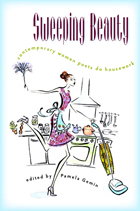 Sweeping Beauty: Contemporary Women Poets Do Housework
Pamela Gemin
University of Iowa Press, 2005 Thankless, mundane, and “never done,” housework continues to be seen as women's work, and contemporary women poets are still writing the domestic experience sometimes resenting its futility and lack of social rewards, sometimes celebrating its sensory delights and immediate gratification, sometimes cherishing the undeniable link it provides to their mothers and grandmothers. In Sweeping Beauty, a number of these poets illustrate how housekeeping's repetitive motions can free the imagination and release the housekeeper's muse. For many, housekeeping provides the key to a state of mind approaching meditation, a state of mind also conducive to making poems. The more than eighty contributors to Sweeping Beauty embrace this state and confirm that women are pioneers and inventors as well as life-givers and nurturers. “My fingers are forks, my tongue is a rose . . . / I turn silver spoons into rabbit stew / make quinces my thorny upholstery . . . / how else could the side of beef walk / with the sea urchin roe?” sings the cook in Natasha Sajé's ode to kitchen alchemy.“I love the notion that we can take our most poisonous angers, our most despairing or humiliated or stalemated moments, and make something good of them--something tensile and enduring,” says Leslie Ullman. Whether we are fully present in our tasks or “gone in the motion” of performing them, whether our stovetops are home to “stewpots of discontent” or grandmother's favorite jam, something is always cooking.
Sweeping the Way: Divine Transformation in the Aztec Festival of Ochpaniztli
Catherine DiCesare
University Press of Colorado, 2022 Many disasters originate from a force of nature, such as an earthquake, cyclone, tsunami, volcanic eruption, drought, or flood. But that is only half of the story; decisions of people and their particular cultural lifeways are the rest. Sociocultural fact
Sweet Air: Modernism, Regionalism, and American Popular Song
Edward Comentale
University of Illinois Press, 2013 Sweet Air rewrites the history of early twentieth-century pop music in modernist terms. Tracking the evolution of popular regional genres such as blues, country, folk, and rockabilly in relation to the growth of industry and consumer culture, Edward P. Comentale shows how this music became a vital means of exploring the new and often overwhelming feelings brought on by modern life. Comentale examines these rural genres as they translated the traumas of local experience--the racial violence of the Delta, the mass exodus from the South, the Dust Bowl of the Texas panhandle--into sonic form. Considering the accessibility of these popular music forms, he asserts the value of music as a source of progressive cultural investment, linking poor, rural performers and audiences to an increasingly vast network of commerce, transportation, and technology.
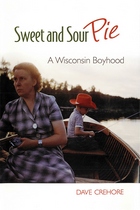 Sweet and Sour Pie: A Wisconsin Boyhood
Dave Crehore
University of Wisconsin Press, 2009 As a young boy, Dave Crehore moved with his parents from northern Ohio to the shipbuilding town of Manitowoc on the shores of Wisconsin’s Lake Michigan, where the Germanic inhabitants punctuate their conversations with “enso,” the local radio station interrupts Beethoven for commercials, and the outdoors are a wellspring of enlightenment.
Crehore’s stories of his youth in 1950s Wisconsin are peppered with engaging characters and a quiet wit. A grouse-hunting expedition goes awry when an eccentric British businessman bags an escaped bantam rooster with a landing net. Crehore's great-grandfather gets in trouble one Christmas when he sneaks a whoopee-cushion under a guest’s seat. The elderly Frau Blau gets trapped in an outhouse by a shady auctioneer during a farm sale. Through all the adventures—and misadventures—in a small town and in the great outdoors of Wisconsin, family is always at the center. This gently humorous look back at a baby-boomer’s awakening to adulthood will be appreciated by members of any generation. Honorable Mention, Kingery/Derleth Book Length Nonfiction, Council for Wisconsin Writers
Finalist, Humor, Midwest Book Awards
 Sweet Bells Jangled: Laura Redden Searing, A Deaf Poet Restored
Judy Yaeger Jones
Gallaudet University Press, 2003 Laura Redden Searing (1839-1923) defied critics of the time by establishing herself as a successful poet, a poet who was deaf. She began writing verse at the Missouri School for the Deaf in 1858, and, under the pseudonym Howard Glyndon, soon found herself catapulted into national prominence by her patriotic Civil War poems. Abraham Lincoln himself bought her books, the most critically acclaimed being Idylls of Battle and Poems of the Rebellion, published in 1864. Her poem “Belle Missouri” became the song of the Missouri Volunteers, and she was sent by the St. Louis Republican newspaper to Washington as a war correspondent.
Despite her success, detractors decried her poetry simply because she was deaf, asking how she could know anything of rhyme, rhythm, or musical composition. She quieted them with the simple elegance of her words and the sophistication of her allegorical themes. Readers can enjoy her work again in this volume, which features more than 70 of her finest poems. They also will learn her feelings about the constraints imposed on 19th-century women in her epic narrative of misunderstanding and lost love “Sweet Bells Jangled:” Out of sight of the heated land
Over the breezy sea;
Into the reach of the solemn mist
Quietly drifted we.
Her restoration will be an event welcomed by poetry aficionados everywhere.
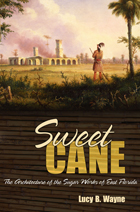 Sweet Cane: The Architecture of the Sugar Works of East Florida
Lucy B. Wayne
University of Alabama Press, 2010 A look at the antebellum history and architecture of the little-known sugar industry of East Florida
From the late eighteenth century to early 1836, the heart of the Florida sugar industry was concentrated in East Florida, between the St. Johns River and the Atlantic Ocean. Producing the sweetest sugar, molasses, and rum, at least 22 sugar plantations dotted the coastline by the 1830s. This industry brought prosperity to the region—employing farm hands, slaves, architects, stone masons, riverboats and their crews, shop keepers, and merchant traders. But by January 1836, Native American attacks of the Second Seminole War, intending to rid the Florida frontier of settlers, devastated the whole sugar industry.
Although sugar works again sprang up in other Florida regions just prior to the Civil War, the competition from Louisiana and the Caribbean blocked a resurgence of sugar production for the area. The sugar industry would never regain its importance in East Florida—only two of the original sugar works were ever rebuilt. Today, remains of this once thriving industry are visible in a few parks. Some are accessible but others lie hidden, slowly disintegrating and almost forgotten. Archaeological, historical, and architectural research in the last decade has returned these works to their once prominent place in Florida’s history, revealing the beauty, efficiency of design, as well as early industrial engineering. Equally important is what can be learned of the lives of those associated with the sugar works and the early plantation days along the East Florida frontier
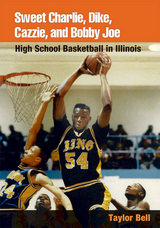 Sweet Charlie, Dike, Cazzie, and Bobby Joe: HIGH SCHOOL BASKETBALL IN ILLINOIS
Taylor H. A. Bell
University of Illinois Press, 2004 In urban and rural high schools throughout Illinois, basketball is a Friday night ritual. Local games are often the biggest thing happening all week, and the Thanksgiving, Christmas, and state tournaments attract fanatical fans by the thousands.
Far from the jaded professionals, the stories in Taylor Bell's Sweet Charlie, Dike, Cazzie, and Bobby Joe are of hungry young men playing their hearts out, where high-tops and high hopes inspire "hoop dreams" from Peoria to Pinckneyville, and Champaign to Chicago. Bell, a life-long fan and authority on high school basketball in Illinois, brings together for the first time the stories of the great players, teams, and coaches from the 1940s through the 1990s.
The book is titled for four players who reflect the unique quality of high school basketball, and whose first names are enough to trigger memories in fans who love the sport -- Sweet Charlie Brown, Dike Eddleman, Cazzie Russell, and Bobby Joe Mason. Bell offers exciting accounts of their exploits, told with a journalistic flair.
Beyond a lifetime spent covering the sport, Bell's research includes three hundred and fifty personal interviews with coaches, administrators, family members, and fans. He has attended the Elite Eight finals of every boys' state basketball tournament since 1958, and met and written about many of the most outstanding teams, coaches, and players who helped to make Illinois one of the most exciting arenas for high school basketball in the United States. Sixty photographs add depth to the accounts.
By a fan, for the fans, Sweet Charlie, Dike, Cazzie, and Bobby Joe is the authoritative book on high school basketball in Illinois, and will elate anyone who has thrilled to the poignant highs and shattering lows of high school sports.
 Sweet Dreams: Contemporary Art and Complicity
Johanna Drucker
University of Chicago Press, 2005 Johanna Drucker's "sweet dream" is for a new and more positive approach to contemporary art. Calling for a revamping of the academic critical vocabulary used to discuss art into one more befitting current creative practices, Drucker argues that contemporary art is fully engaged with material culture—yet still struggling to escape the oppositional legacy of the early twentieth-century avant-garde.
Drucker shows that artists today are aware of working within the ideologies of mainstream culture and have replaced avant-garde defiance with eager complicity. Finding their materials at flea markets or exploring celebrity culture, contemporary artists have created a vibrantly participatory movement that exudes enthusiasm and affirmation—all while critics continue to cling to an outmoded vocabulary of opposition and radical negativity that defined modernism's avant-garde. At the cutting edge of new media research, Drucker surveys a wide range of exciting contemporary artists, demonstrating their clear departure from the past and petitioning viewers and critics to shift their terms and sensibilities as well. Sweet Dreams is a testament to the creative processes and self-conscious heterogeneity of art today as well as a revolutionary effort to solicit collaboration that will encourage the production of imaginative thought and contribute to contemporary life.
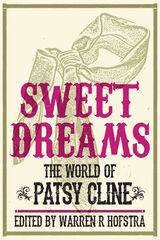 Sweet Dreams: The World of Patsy Cline
Edited by Warren R. Hofstra
University of Illinois Press, 2013 One of the most influential and acclaimed female vocalists of the twentieth century, Patsy Cline (1932–63) was best known for her rich tone and emotionally expressive voice. Born Virginia Patterson Hensley, she launched her musical career during the early 1950s as a young woman in Winchester, Virginia, and her heartfelt songs reflect her life and times in this community. A country music singer who enjoyed pop music crossover success, Cline embodied the power and appeal of women in country music, helping open the lucrative industry to future female solo artists. Bringing together noted authorities on Patsy Cline and country music, Sweet Dreams: The World of Patsy Cline examines the regional and national history that shaped Cline's career and the popular culture that she so profoundly influenced with her music. In detailed, deeply researched essays, contributors provide an account of Cline's early performance days in Virginia's Shenandoah Valley, analyze the politics of the split between pop and country music, and discuss her strategies for negotiating gender in relation to her public and private persona. Interpreting rich visual images, fan correspondence, publicity tactics, and community mores, this volume explores the rich and complex history of a woman whose music and image changed the shape of country music and American popular culture. Contributors are Beth Bailey, Mike Foreman, Douglas Gomery, George Hamilton IV, Warren R. Hofstra, Joli Jensen, Bill C. Malone, Kristine M. McCusker, and Jocelyn R. Neal.
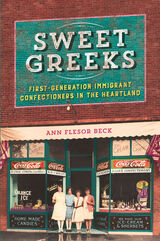 Sweet Greeks: First-Generation Immigrant Confectioners in the Heartland
Ann Flesor Beck
University of Illinois Press, 2020 Gus Flesor came to the United States from Greece in 1901. His journey led him to Tuscola, Illinois, where he learned the confectioner's trade and opened a business that still stands on Main Street. Sweet Greeks sets the story of Gus Flesor's life as an immigrant in a small town within the larger history of Greek migration to the Midwest. Ann Flesor Beck's charming personal account recreates the atmosphere of her grandfather's candy kitchen with its odors of chocolate and popcorn and the comings-and-goings of family members. "The Store" represented success while anchoring the business district of Gus's chosen home. It also embodied the Midwest émigré experience of chain migration, immigrant networking, resistance and outright threats by local townspeople, food-related entrepreneurship, and tensions over whether later generations would take over the business. An engaging blend of family memoir and Midwest history, Sweet Greeks tells how Greeks became candy makers to the nation, one shop at a time.
Sweet Home, Saturday Night: Poems
David Baker
University of Arkansas Press, 1991 "This music of Place, with all its varied and subtle emotional range, is what this book so marvelously captures. . . ." --Linda Pastan
Sweet Hope: a novella
Judson N. Hout
Parkhurst Brothers, Inc., 2013 Love waits for one woman in this charming story of love lost and then found.
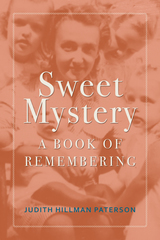 Sweet Mystery: A Book of Remembering
Judith Hillman Paterson
University of Alabama Press, 2020 An exquisitely written memoir—combining sorrow and joy, anger and forgiveness, suffering and healing—that affirms the resilience and strength that imbue the human spirit
Judith Paterson was just nine years old in 1946 when her mother died of a virulent combination of alcoholism and mental illness at the age of 31. Sweet Mystery: A Book of Remembering is Paterson’s harrowing account of the memories of her mother, told with eloquence and understanding. Set largely in Montgomery, Alabama, the story plays out against a backdrop of relatives troubled almost as much by southern conflicts over race and class as by the fallout from a long family history of drinking, denial, and mental illness.
While rich in the details and flavor of small-town life in the South during the 1940s, Sweet Mystery transcends time and regionalism to evoke universal American themes. Ultimately, it confirms the damaging effects of early trauma on children as well as the innate and familial strengths that enable some children to survive, grow up, and heal.
Originally published in 1996 to critical acclaim in the national media, Sweet Mystery was called “a beautifully written, excruciating collision of form and emotion, joy and pain, willpower and self-examination, control and surrender” by the Washington Post. This edition contains a new afterword written by the author as well as a list of suggested readings.
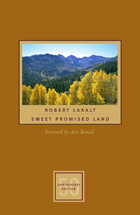 Sweet Promised Land, 50th ed.
Robert Laxalt
University of Nevada Press, 2007 How long has it been since you fell in love with a book?
Dominique Laxalt was sixteen when he left the French Pyrenees for America. He became a sheepherder in the Nevada desert and nearby hills of the Sierra. Like all his fellow Basque immigrants, Dominique dreamed of someday returning to the land of his beginnings. Most Basques never made the journey back, but Dominique finally did return for a visit with family and friends. Sweet Promised Land is the story of that trip, told by his son Robert, who accompanied him to the pastoral mountain village of Tardets in France. Dominique came home victorious, the adventurer who had conquered the unknown and found his fortune in the New World. He told of his life in America, the hardships and challenges, and began to realize that he had changed since his departure from Tardets. By the end of the visit, he knew with certainty where he belonged.
During the past fifty years, this book has become a classic in Western American literature, still beloved by the Basque-American community. In celebration of the fiftieth anniversary of the book’s publication, western literature scholar Ann Ronald wrote a new foreword, discussing the book in the context of American and Nevada literature.
 Sweet Promised Land, 50th ed.
Robert Laxalt
University of Nevada Press, 2007 How long has it been since you fell in love with a book?
Dominique Laxalt was sixteen when he left the French Pyrenees for America. He became a sheepherder in the Nevada desert and nearby hills of the Sierra. Like all his fellow Basque immigrants, Dominique dreamed of someday returning to the land of his beginnings. Most Basques never made the journey back, but Dominique finally did return for a visit with family and friends. Sweet Promised Land is the story of that trip, told by his son Robert, who accompanied him to the pastoral mountain village of Tardets in France. Dominique came home victorious, the adventurer who had conquered the unknown and found his fortune in the New World. He told of his life in America, the hardships and challenges, and began to realize that he had changed since his departure from Tardets. By the end of the visit, he knew with certainty where he belonged.
During the past fifty years, this book has become a classic in Western American literature, still beloved by the Basque-American community. In celebration of the fiftieth anniversary of the book’s publication, western literature scholar Ann Ronald wrote a new foreword, discussing the book in the context of American and Nevada literature.
 Sweet Reason: Rhetoric and the Discourses of Modernity
Susan Wells
University of Chicago Press, 1996 In Sweet Reason, Susan Wells presents a rhetorical model for understanding the diverse discourses of modernity. Wells describes modernity as a system of texts which we are only now learning to read. In order to comprehend how these texts organize our world, she argues, we must grasp how reason and desire interact to create meaning. To this end, Wells offers a rhetoric based on an understanding of meaning as intersubjectivity created through the work of language. Wells elaborates this "rhetoric of intersubjectivity" by drawing on both Jürgen Habermas's concept of communicative rationality and on Jacques Lacan's theory of desire, affirming the significance of reason and desire for rhetorical studies. From scientific articles to classroom altercations, contemporary government hearings to Mantaigne's Essays, Wells organizes several using rhetoric as an art, and she shows how rhetoric operates in practice.
Susan Wells is associate professor of English at Temple University.
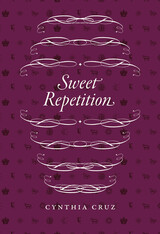 Sweet Repetition
Cynthia Cruz
University of Chicago Press, 2025 Poetry that centers its movement on repetition—orbiting, unwinding, and returning.
Integrating Lacanian and Freudian psychoanalysis, continental philosophy, and the works of other poets, this collection explores narrative through abstraction and considers how repetition holds both the power to constrain and to generate. Freud explains how what we repress—what we know but don’t want to acknowledge—reappears in our actions through repetition. Through slips of the tongue or selective memory, we engage with what our unconscious knows, finding knowledge through unknowing. The psychoanalytic session is centered on bringing forth repressed knowledge through acts of unknowing—speaking without thinking—which brings one closer to recognizing an obscured desire.
The poetry of Sweet Repetition works in ways akin to the psychoanalytic act. These pulsing poems follow the definitions of the word revolution—to revolve, change direction, unroll, unwind, happen again, repeat, orbit around. Images and words reappear in the motion of Cynthia Cruz’s poems, inviting us into their revolutionary, political, and cumulative effects.
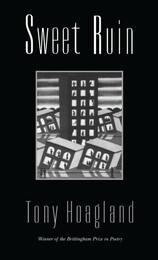 Sweet Ruin
Tony Hoagland
University of Wisconsin Press, 1992 Tony Hoagland captures the recognizably American landscape of a man of his generation: sex, friendship, rock and roll, cars, high optimism, and disillusion. With what Robert Pinsky has called “the saving vulgarity of American poetry,” Hoagland’s small biographies of destruction reveal that defeat is a natural prelude to grace and loss a kind of threshold to freedom.
“A remarkable book. Without any rhetorical straining, with a disarming witty directness, these poems manage to transform every subject they touch, from love to politics, reaching out from the local and the personal to place the largest issues in the context of feeling. It’s hard to think of a recent book that succeeds with equal grace in fusing the truth-telling and the lyric impulse, clarity and song, in a way that produces such consistent pleasure and surprise.”—Carl Dennis
“This is wonderful poetry: exuberant, self-assured, instinct with wisdom and passion.”—Carolyn Kizer
“There is a fine strong sense in these poems of real lives being lived in a real world. This is something I greatly prize. And it is all colored, sometimes brightly, by the poet’s own highly romantic vision of things, so that what we may think we already know ends up seeming rich and strange.”—Donald Justice
“In Sweet Ruin, we’re banging along the Baja of our little American lives, spritzing truth from our lapels, elbowing our compadres, the Seven Deadly Sins. Maybe we’re unhappy in a less than tragic way, but our ruin requires of us a love and understanding and loyalty just as deep and sweet as any tragic hero’s. And it’s all the more poignant in a sad and funny way because the purpose of this forced spiritual march, Hoagland seems to be saying, is to leave ourselves behind. Undoubtedly, you will recognize among the body count many of your selves.”—Jack Myers
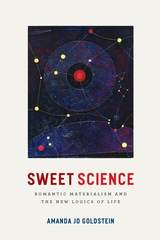 Sweet Science: Romantic Materialism and the New Logics of Life
Amanda Jo Goldstein
University of Chicago Press, 2017 Today we do not expect poems to carry scientifically valid information. But it was not always so. In Sweet Science, Amanda Jo Goldstein returns to the beginnings of the division of labor between literature and science to recover a tradition of Romantic life writing for which poetry was a privileged technique of empirical inquiry.
Goldstein puts apparently literary projects, such as William Blake’s poetry of embryogenesis, Goethe’s journals On Morphology, and Percy Shelley’s “poetry of life,” back into conversation with the openly poetic life sciences of Erasmus Darwin, J. G. Herder, Jean-Baptiste Lamarck, and Étienne Geoffroy Saint-Hilaire. Such poetic sciences, Goldstein argues, share in reviving Lucretius’s De rerum natura to advance a view of biological life as neither self-organized nor autonomous, but rather dependent on the collaborative and symbolic processes that give it viable and recognizable form. They summon De rerum natura for a logic of life resistant to the vitalist stress on self-authorizing power and to make a monumental case for poetry’s role in the perception and communication of empirical realities. The first dedicated study of this mortal and materialist dimension of Romantic biopoetics, Sweet Science opens a through-line between Enlightenment materialisms of nature and Marx’s coming historical materialism.
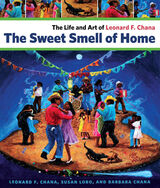 The Sweet Smell of Home: The Life and Art of Leonard F. Chana
Leonard F. Chana, Susan Lobo, and Barbara Chana
University of Arizona Press, 2009 A self-taught artist in several mediums who became known for stippling, Leonard Chana captured the essence of the Tohono O’odham people. He incorporated subtle details of O’odham life into his art, and his images evoke the smells, sounds, textures, and tastes of the Sonoran desert—all the while depicting the values of his people.
He began his career by creating cards and soon was lending his art to posters and logos for many community-based Native organizations. Winning recognition from these groups, his work was soon actively sought by them. Chana’s work also appears on the covers and as interior art in a number of books on southwestern and American Indian topics.
The Sweet Smell of Home is an autobiographical work, written in Chana’s own voice that unfolds through oral history interviews with anthropologist Susan Lobo. Chana imparts the story of his upbringing and starting down the path toward a career as an artist. Balancing humor with a keen eye for cultural detail, he tells us about life both on and off the reservation.
Eighty pieces of art—26 in color—grace the text, and Chana explains both the impetus for and the evolution of each piece. Leonard Chana was a people’s artist who celebrated the extraordinary heroism of common people’s lives. The Sweet Smell of Home now celebrates this unique artist whose words and art illuminate not only his own remarkable life, but also the land and lives of the Tohono O’odham people
Sweet Spot: Poems
J.T. Barbarese
Northwestern University Press, 2012 Classical deities and down-and-out junkies, high school sweethearts and the inner life of JFK—these are the coordinates of J.T. Barbarese’s terrain. The poems in Sweet Spot set up shop where average lived experience meets American history. Masterfully evokes both the specific land- and cityscapes of his poems as well the psychological types of the varied characters that populate them, Sweet Spot confirms Barbarese’s preeminence as a chronicler of the heroic everyday, the telling detail, the subtle reminders of the human predicament hidden in habit and memory.
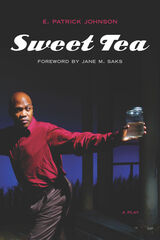 Sweet Tea: A Play
E. Patrick Johnson; With a Foreword by Jane M. Saks
Northwestern University Press, 2020 This book is the stage version of E. Patrick Johnson’s Sweet Tea: Black Gay Men of the South—An Oral History, a groundbreaking text for the fields of Black studies, queer studies, and southern oral history and ethnography. Between 2004 and 2006, Johnson edited a series of narratives from Black gay men who were born and raised in the South and have continued to live there. While the scholarly text of Sweet Tea has enjoyed wide circulation, Johnson knew that the stories of these individuals weren’t able to come fully alive on the page. He transformed the text into a theatrical performance, which originally toured the country as Pouring Tea; the oral history has also been adapted into a feature-length documentary, Making Sweet Tea.
Based on several tours and individual stagings, Sweet Tea: A Play invites readers, students, theater practitioners, and audiences from different backgrounds to engage with the lives of eleven men and one gender-nonconforming person—incredible characters all originally played by the author in a one-man show.
Sweet Tyranny: Migrant Labor, Industrial Agriculture, and Imperial Politics
Kathleen Mapes
University of Illinois Press, 2008 In this innovative grassroots to global study, Kathleen Mapes explores how the sugar beet industry transformed the rural Midwest by introducing large factories, contract farming, and foreign migrant labor. Identifying rural areas as centers for modern American industrialism, Mapes contributes to an ongoing reorientation of labor history from urban factory workers to rural migrant workers. She engages with a full range of individuals, including Midwestern family farmers, industrialists, Eastern European and Mexican immigrants, child laborers, rural reformers, Washington politicos, and colonial interests. Engagingly written, Sweet Tyranny demonstrates that capitalism was not solely a force from above but was influenced by the people below who defended their interests in an ever-expanding imperialist market.
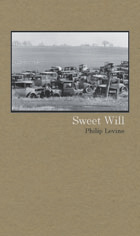 Sweet Will
Philip Levine
University of Iowa Press, 2013 Pulitzer Prize–winning poet Philip Levine published Sweet Will, his eleventh volume of poems, in 1985. His last book with Atheneum, it has been unavailable for many years. Because of its subdued and thoughtful nature, it was seen as a transitional book for Levine, one that presaged the tone of much that was to come. Peter Stitt, writing in the Kenyon Review, called it “the quietest book that Philip Levine has ever written,” concluding that “though the river that glides through it is still on the surface, the sweetness of its will runs deep indeed.” And Dave Smith, writing in Poetry, delighted in the poems of “emergent tenderness and faith,” and claimed that “linking himself to Wordsworth, who loved this world uncommonly in uncommon poetry, Philip Levine has lifted his moral tale to the level of joyful celebration.”
The poems in Sweet Will are set in Detroit, California, New York, Europe, and the country of memory. Their aim is to bring the overlooked events of daily life into a sharper focus that transcends the ordinary. At the time of its original publication, the book was seen as an attempt to bring together the themes and methods of Levine’s early, groundbreaking work: the anger of They Feed They Lion, the family concerns of 1933, the characters of The Names of the Lost, and the hopes of One for the Rose. Yet it is clearly a mid-career book composed by a poet who can begin to look back in tranquility at a tempestuous life. The poems, including the long meditation of more than five hundred lines, “A Poem with No Ending,” are beautiful and essential. Restored to print, they will resonate with readers who love both the earlier and the later work of one of our most important poets.
Sweet William: The Life of Billy Conn
Andrew O'Toole
University of Illinois Press, 2009 An Irish working-class hero of Pittsburgh, Billy Conn captured hearts through his ebullient personality, stellar boxing record, and good looks. A light heavyweight boxing champion best remembered for his sensational near-defeat of heavyweight champion Joe Louis in 1941, Conn is still regarded as one of the greatest fighters of all time. Andrew O'Toole chronicles the boxing, Hollywood, and army careers of "the Pittsburgh Kid" by drawing from newspaper accounts, Billy's personal scrapbooks, and fascinating interviews with family. Presenting an intimate look at the champion's relationships with his girlfriend, manager, and rivals, O'Toole compellingly captures the personal life of a public icon and the pageantry of sports during the 1930s and '40s.
Sweetgum & Lightning
Rodney Terich Leonard
Four Way Books, 2021 An intersection of jazz and the written word: poems to be experienced and felt
Sweetgum & Lightning lets us into an extraordinary poetic universe, shaped by a vernacular rooted in the language of self, one’s origins, and music. In poems that are deeply sensual in nature, Rodney Terich Leonard considers gender and sexuality, art, poverty, and community. Imagery expands through unexpected lexical associations and rumination on the function of language; words take on new meaning and specificity, and the music of language becomes tantamount to the denotations of words themselves. Through extensive webs of connotation, Leonard’s narratives achieve a sense of accuracy and intimacy. The nuanced lens of these poems is indicative of the honesty of expression at work in the collection—one that affirms the essentiality of perception to living and memory.
The Sweetheart Is In
S.L. Wisenberg
Northwestern University Press, 2001 The yearnings of a little sister, the hazy memories of a concentration camp liberator, and the romantic entanglements of political activists are portrayed in <i>The Sweetheart Is In</i>, S.L. Wisenberg's first collection of short stories. Each of these edgy, lyrical stories creates its own universe in the space of a few pages even while overlapping characters and themes.
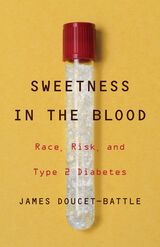 Sweetness in the Blood: Race, Risk, and Type 2 Diabetes
James Doucet-Battle
University of Minnesota Press, 2021 A bold new indictment of the racialization of science
Decades of data cannot be ignored: African American adults are far more likely to develop Type 2 diabetes than white adults. But has science gone so far in racializing diabetes as to undermine the search for solutions? In a rousing indictment of the idea that notions of biological race should drive scientific inquiry, Sweetness in the Blood provides an ethnographic picture of biotechnology’s framings of Type 2 diabetes risk and race and, importantly, offers a critical examination of the assumptions behind the recruitment of African American and African-descent populations for Type 2 diabetes research. James Doucet-Battle begins with a historical overview of how diabetes has been researched and framed racially over the past century, chronicling one company’s efforts to recruit African Americans to test their new diabetes risk-score algorithm with the aim of increasing the clinical and market value of the firm’s technology. He considers African American reticence about participation in biomedical research and examines race and health disparities in light of advances in genomic sequencing technology. Doucet-Battle concludes by emphasizing that genomic research into sub-Saharan ancestry in fact underlines the importance of analyzing gender before attempting to understand the notion of race. No disease reveals this more than Type 2 diabetes. Sweetness in the Blood challenges the notion that the best approach to understanding, managing, and curing Type 2 diabetes is through the lens of race. It also transforms how we think about sugar, filling a neglected gap between the sugar- and molasses-sweetened past of the enslaved African laborer and the high-fructose corn syrup- and corporate-fed body of the contemporary consumer-laborer.
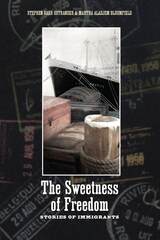 The Sweetness of Freedom: Stories of Immigrants
Martha Aladjem Bloomfield
Michigan State University Press, 2010 The Sweetness of Freedom presents an eclectic grouping of late nineteenth- and twentieth-century immigrants' narratives and the personal artifacts, historical documents, and photographs these travelers brought on their journeys to Michigan. Most of the oral histories in this volume are based on interviews conducted with the immigrants themselves.
Some of the immigrants presented here hoped to gain better education and jobs. Others—refugees—fled their homelands because of war, poverty, repression, religious persecution, or ethnic discrimination. All dreamt of freedom and opportunity. They tell why they left their homelands, why they chose to settle in Michigan, and what they brought or left behind. Some wanted to preserve their heritage, religious customs, traditions, and ethnic identity. Others wanted to forget past conflicts and lost family members. Their stories reveal how they established new lives far away from home, how they endured homesickness and separation, what they gave up and what they gained.
The Sweetness of Power: Machiavelli's Discourses and Guicciardini's Considerations
Translated by James B. Atkinson and David Sices
Northern Illinois University Press, 2007
The question of order inspired two of the greatest political thinkers of the Renaissance—Niccolò Machiavelli and Francesco Guicciardini, whose major works on the nature of government are linked in an authoritative new translation. Political adversaries but nonetheless friends, Machiavelli and Guicciardini both reflected on ancient Rome and refined their conceptions of government with an eye to the political turmoil of their own Florence.
Based on the definitive Italian editions and including extensive explanatory notes, this new translation re-creates the fascinating conflict that helped to shape the history of political thought.
 Swift
Irvin Ehrenpreis
Harvard University Press This is the second volume of Irvin Ehrenpreis's trilogy, and deals with the period 1699-1714. The years between 1699 and 1710 were a time of training—in some ways unfortunate, as Ehrenpreis shows—for the dramatic four years which followed for Swift, as a political journalist in England.
Swift's ecclesiastical career, his search for preferment and the gradual transformation of his social life are examined. The author also scrutinizes Swift's attachment to Esther Johnson and Esther Vanhomrigh, the evolution of his political principles, and his unconscious motivations, and he reaches some original conclusions. Above all, however, Ehrenpreis concentrates on Swift's literary works of this period; and for some of these, such as An Argument against Abolishing Christianity, The Conduct of the Allies, and A Discourse of the Contests and Dissensions, he provides analyses that can stand as independent critical essays.
Volume Two lives up in every way to the high hopes generated for it by Volume One. It draws widely on contemporary documents and on modern research into Swift's life and times, providing much new information as well as judgements that are both judicious and original.
Swift
Irvin Ehrenpreis
Harvard University Press There has been no full length biography of Swift based on primary sources since Sir Henry Craik's life in 1882. In this first volume of three the author treats in detail the events of Swift's life, the historical and social setting of those events, the evolution of Swift's character, and the composition and interpretation of his works. New and important material is included concerning Swift's family and career, his emotional life, his relations with Sir William Temple, the design and meaning of A Tale of a Tub and The Battle of the Books. The methods of interpretation used are comprehensive; Swift's emotional and sexual problems are treated in Freudian terms (but not in psychoanalytical technical language), his career is discussed as a problem in historical sociology, his works are given close readings, and where symbolic interpretations seem justified they are not dodged.
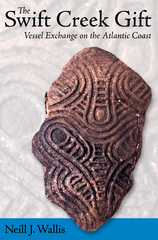 The Swift Creek Gift: Vessel Exchange on the Atlantic Coast
Neill J. Wallis
University of Alabama Press, 2011 Assesses Woodland Period interactions using technofunctional, mineralogical, and chemical data derived from Swift Creek Complicated Stamped sherds
A unique dataset for studying past social interactions comes from Swift Creek Complicated Stamped pottery that linked sites throughout much of the Eastern Woodlands but that was primarily distributed over the lower Southeast. Although connections have been demonstrated, their significance has remained enigmatic. How and why were apparently utilitarian vessels, or the wooden tools used to make them, distributed widely across the landscape? This book assesses Woodland Period interactions using technofunctional, mineralogical, and chemical data derived from Swift Creek Complicated Stamped sherds whose provenience is fully documented from both mortuary mounds and village middens along the Atlantic coast. Together, these data demonstrate formal and functional differences between mortuary and village assemblages along with the nearly exclusive occurrence of foreign-made cooking pots in mortuary contexts. The Swift Creek Gift provides insight into the unique workings of gift exchanges to transform seemingly mundane materials like cooking pots into powerful tools of commemoration, affiliation, and ownership.
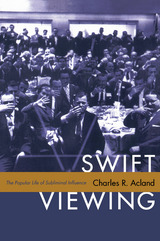 Swift Viewing: The Popular Life of Subliminal Influence
Charles R. Acland
Duke University Press, 2012 Since the late 1950s, the idea that hidden, imperceptible messages could influence mass behavior has been debated, feared, and ridiculed. In Swift Viewing, Charles R. Acland reveals the secret story of subliminal influence, showing how an obscure concept from experimental psychology became a mainstream belief about our vulnerability to manipulation in an age of media clutter. He chronicles the enduring popularity of the dubious claims about subliminal influence, tracking their migration from nineteenth-century hypnotism to twentieth-century front-page news. His expansive history of popular concern about subliminal messages shows how the notion of “hidden persuaders” became a vernacular media critique, one reflecting anxiety about a rapidly expanding media environment. Through a deep archive of eclectic examples, including educational technology in the American classroom, mind-control tropes in science fiction, Marshall McLuhan’s media theories, and sensational claims in the late 1950s about subliminal advertising, Acland establishes the subliminal as both a product of and a balm for information overload.
 The Swifts: Printers in the Age of Typesetting Races
Walker Rumble
University of Virginia Press, 2003 "[Walker Rumble] uses shop-floor savvy and a doctoral background in history to conjure a vivid lost world of irreverent, often hard-drinking Swifts who composed fast and died young, lead dust and tuberculosis getting many of them before 40."
--Chronicle of Higher Education
"The Swifts makes a notable contribution to the narrow slice of nineteenth-century American history on which Rumble focuses.... It is a model of clarity and inclusion."
--Henry Petroski, author of The Evolution of Useful Things and The Pencil
On a December day in 1885, Bill Barnes, a journeyman from the New York World, and Joe McCann, representing the New York Herald, faced off in a match race of Swifts, compositors who set type by hand, individually, letter by letter, with incredible accuracy and speed. McCann got off to a slow start, but at the end of the four-hour race, he joined shopfloor legends Clinton "The Kid" DeJarnatt and the "Velocipede" George Arensberg as a working-class hero. It was not the last race of its kind between Swifts, but already looming were changes both social and technological that would cause these gifted tramp printers to disappear.
In The Swifts, Walker Rumble, himself a printer and printing historian, follows the trail of these colorful compositors who became famous by winning typesetting races. Tellingly, at the same time that the most celebrated contests were taking place, technological and cultural forces were threatening the Swifts' way of life. First women printers vied for shopfloor legitimacy; then, in the mid-1880s, typesetting machines such as Mergenthaler's Linotype arrived, replacing the artisans forever.
With the spread of digital technologies at the beginning of the twenty-first century, we are experiencing a revolution in printing matched only by two previous events: Gutenberg's fifteenth-century invention of movable type and the advent of typesetting machines that replaced the Swifts. Joining narrative historians of technology such as Robert Darnton, Henry Petroski, Dava Sobel, and Ross King, Rumble tells a fascinating story that will entertain aficionados of print culture while explaining the larger cultural dislocations wrought by technological change.
--------------------------------------------------------------------------------
Walker Rumble is the editor and publisher of Oat City Press in East Providence, Rhode Island. The author of numerous articles on the history of printing, Rumble holds a doctorate in American history and has worked as a compositor and type manager.
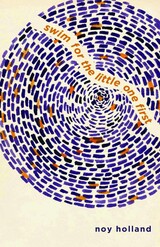 Swim for the Little One First
Noy Holland
University of Alabama Press, 2012 Swim for the Little One First is a dazzling new collection of twelve short fictions by the acclaimed fiction writer and prose stylist Noy Holland. The stories gathered in Swim for the Little One First vary in setting (Ecuador, Montana, Florida, the Berkshires, North Dakota, New Mexico, and California) and style (from the plainspoken to the fustian). In “Milk River” a young girl whose mother has committed suicide and whose brother has gone off to war is left to tend to her ailing father; in “Today is an Early Out” a family finds itself caught in a mudslide in the Sierra Nevada; in “Merengue” a young couple takes up residence in a HUD hotel in Miami Beach, among the elderly living out their last days. In the title story a woman with young children addresses her father, who has come to visit, in theobdurate language of remorse. In “Pemmican” the author takes a comic approach to the telling of an absurd story about escaped pet mice surviving winter in a car. In these and seven other stories, Noy Holland, an author praised by writers and critics ranging from William H. Gass to Michiko Kakutani, presents readers with what Gass has described as “beautifully lyrical but bitter prose and . . . an ardent grimness of eye that is both unsettling and intensely satisfying.”
 Swim Pretty: Aquatic Spectacles and the Performance of Race, Gender, and Nature
Jennifer A. Kokai
Southern Illinois University Press, 2017 Drawing on cultural associations with bodies of water, the spectacle of pretty women, and the appeal of the concept of “family-friendly” productions, performative aquatic spectacles portray water as an exotic fantasy environment exploitable for the purpose of entertainment. In Swim Pretty, Jennifer A. Kokai reveals the influential role of aquatic spectacles in shaping cultural perceptions of aquatic ecosystems in the United States over the past century.
Examining dramatic works in water and performances at four water parks, Kokai shows that the evolution of these works and performances helps us better understand our ever-changing relationship with the oceans and their inhabitants. Kokai sorts the regard for and harnessing of water in aquatic spectacles into three categories—natural, tamed, and domesticated—and discusses the ways in which these modes of water are engaged in the performances throug an aesthetics of descension. Ultimately, this study links the uncritical love of aquatic spectacles to a disregard for the rights of marine animals and lack of concern for the marine environment.
 Swimmers: Carole Feuerman
John Yau
The Artist Book Foundation, 2014 Realist sculptor Carole A. Feuerman’s human-figure sculptures express a refreshing perspective on the mundane but intensely personal activities of modern life. Her powers of observation and versatility find unique expression through various materials that include marble, bronze, vinyl, and painted resins, while she incorporates both ancient and contemporary methods in the creation of her works. Swimmers: Carole Feuerman is a gorgeous and shimmering glimpse at transitory, contemplative moments in time, often captured in a veil of clear resin that replicates tumbling water droplets.
In his astute and insightful essay, John Yau describes Feuerman’sexquisitely rendered figures as subjects “caught in a moment of transition that radiates an intense eroticism.” She evokes an inward life for her figures that invites our speculation, while revealing a mysterious chasm between them and the viewer that can never be plumbed. We cannot know their thoughts and perhaps that is exactly the point. Feuerman fuses the tactile nature of her sculpture with a visual verisimilitude that provides us a fleeting glimpse into private and isolated environments—women stepping out of the shower, in the rain, or swimming—that suggest a meditative bliss.
Feuerman’s museum retrospectives have included exhibitions at the Venice Biennale; the Smithsonian National Portrait Gallery in Washington, DC; The State Hermitage in St. Petersburg, Russia; The Palazzo Strozzi Foundation in Florence, Italy; and the Circulo de Bellas Artes in Madrid, among others. Her work is featured in public, private, and corporate collections, including Grounds For Sculpture, Trenton, NJ; the El Paso Museum of Art, El Paso, Texas; the Bass Museum of Art, Miami Beach, FL; and art-st-urban, Lucerne, Switzerland. Her large-scale Olympic Swimmer was featured in the Olympic Fine Arts exhibition at the 2008 Summer Games in Beijing.
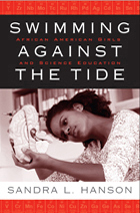 Swimming Against the Tide: African American Girls and Science Education
Sandra L. Hanson
Temple University Press, 2009 “They looked at us like we were not supposed to be scientists,” says one young African American girl, describing one openly hostile reaction she encountered in the classroom. In this significant study, Sandra Hanson explains that although many young minority girls are interested in science, the racism and sexism in the field discourage them from pursuing it after high school. Those girls that remain highly motivated to continue studying science must “swim against the tide.” Hanson examines the experiences of African American girls in science education using multiple methods of quantitative and qualitative research, including a web survey and vignette techniques. She understands the complex interaction between race and gender in the science domain and, using a multicultural and feminist framework of analysis, addresses the role of agency and resistance that encourages and sustains interest in science in African American families and communities.
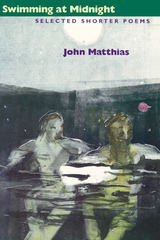 Swimming At Midnight: Selected Shorter Poems
John Matthias
Ohio University Press, 1995 Swimming at Midnight collects the short and middle-length poems from John Matthias’s earlier books together with twenty poems that have previously appeared only in magazines. It is published simultaneously with Beltane at Aphelion, which includes all of Matthias’s longer poems. The two books together represent some thirty years of his work. The poems in Swimming at Midnight range from early lyrics written in American during the late 1960s to meditative poems dealing with historical, geographical and cultural themes deriving from Matthias’s years in England in the seventies and eighties; they include the epistolary poems from Turns, “Poem for Cynouai” from Crossing, “A Wind in Roussillon” from Northern Summer, and the formal experiments engaging issues of poetics and metaphysics for which Matthias is well known. The book concludes with a section of new poems and translations dealing both with the public world of modern history and the private experience of life in the century’s final decade. The last poem of all connects the work in Swimming at Midnight with the last of the long poems in Beltane at Aphelion. Critics have been warm in their praise of Matthias’s work. Robert Duncan called his early poetry “the work of a Goliard—one of those wandering souls out of a Dark Age in our own time,” and Guy Davenport has said that his recent work makes him “one of the leading poets in the USA.” D. M. Thomas in the TLS admired the “virtuosity” of Turns and the way “life presses into the poems,” while John Fuller in the same journal found the poems in Crossing “bursting with a masterful intelligence.” In a long essay on Northern Summer, Jeremy Hooker wrote: “In his combination of lyrical and discursive voices, as in subject and concern, Matthias has an exciting range…He writes in some poems from a tension between a scribe’s respect for the integrity of his materials and a magician’s freedom to transform them, and in many poems he brings together the contrasting gifts and is fully present as himself, both scribe and magician.”
 The Swimming Holes of Texas
By Julie Wernersbach and Carolyn Tracy; photography by Carolyn Tracy
University of Texas Press, 2020 Nothing beats a natural swimming hole for cooling off on a scorching summer day in Texas. Cold, clear spring water, big old shade trees, and a quiet stretch of beach or lawn offer the perfect excuse to pack a cooler and head out with family and friends to the nearest natural oasis. Whether you’re looking for a quick getaway or an unforgettable summer vacation, let The Swimming Holes of Texas be your guide. Julie Wernersbach and Carolyn Tracy highlight one hundred natural swimming spots across the entire state. The book is organized by geographic regions, so you can quickly find local places to swim—or plan a trip to a more distant spot you’d like to explore. Each swimming hole is illustrated with an inviting color photo and a description of what it’s like to swim there, as well as the site’s history, ecology, and conservation. The authors include all the pertinent info about admission fees and hours, parking, and on-site amenities such as showers and restrooms. They also offer tips for planning your trips and lists of the swimming holes that are most welcoming to families and pets. So when the temperature tops 100 and there’s nothing but traffic in sight, take a detour down the backroads and swim, sunbathe, revel, and relax in the swimming holes of Texas.
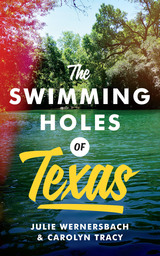 The Swimming Holes of Texas
By Julie Wernersbach and Carolyn Tracy; photography by Carolyn Tracy
University of Texas Press, 2017 Nothing beats a natural swimming hole for cooling off on a scorching summer day in Texas. Cold, clear spring water, big old shade trees, and a quiet stretch of beach or lawn offer the perfect excuse to pack a cooler and head out with family and friends to the nearest natural oasis. Whether you’re looking for a quick getaway or an unforgettable summer vacation, let The Swimming Holes of Texas be your guide. Julie Wernersbach and Carolyn Tracy highlight one hundred natural swimming spots across the entire state. The book is organized by geographic regions, so you can quickly find local places to swim—or plan a trip to a more distant spot you’d like to explore. Each swimming hole is illustrated with an inviting color photo and a description of what it’s like to swim there, as well as the site’s history, ecology, and conservation. The authors include all the pertinent info about admission fees and hours, parking, and on-site amenities such as showers and restrooms. They also offer tips for planning your trips and lists of the swimming holes that are most welcoming to families and pets. So when the temperature tops 100 and there’s nothing but traffic in sight, take a detour down the backroads and swim, sunbathe, revel, and relax in the swimming holes of Texas.
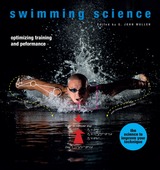 Swimming Science: Optimizing Training and Performance
Edited by G. John Mullen
University of Chicago Press, 2018 Swimming is often touted as one of the most accessible workouts—low impact, low tech, and beneficial at any stage of life. Yet each time you suit up and dive in, your body’s moving parts must work together to propel you through dozens of pounds of water resistance, somehow emulating the movements of species that evolved specifically for the water. What are the physical forces at work when you get in a pool, and what determines whether you will sink or swim?
Writing to competitive and novice swimmers alike, contributors to this volume break down every aspect of the sport. Swimming Science covers physiology, psychology, and safety, as well as hydrodynamics, nutrition, and technique. Each chapter examines these topics through a series of practical questions. What are the forces acting on you when you swim, and how do your muscles best generate propulsion against those forces? How much protein, salt, and iron should a swimmer consume, and how does energy from carbohydrates compare to energy from fats? How important is the “swimmer’s physique” in competitive swimming, and is technique or strength more necessary for generating speed? These questions are examined with the aid of explanatory diagrams and illustrations, and the book can be used to search for particular topics, or read straight through for a comprehensive overview.
Whether you are a competitive swimmer looking to optimize your performance or just beginning to dip a toe into the sport, Swimming Science is a must-read.
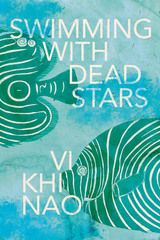 Swimming with Dead Stars
Vi Khi Nao
University of Alabama Press, 2022 She wanted to die. The universe—and her mother—had other plans.
Maldon is an adjunct literature instructor at a prestigious East Coast university, with a deteriorating heart condition and no insurance. She finds herself caught between the demands of her job and the needs of her body, triggering economic and emotional strains that cause her to fantasize about taking her own life. But Maldon, who has pledged to safeguard her mother ever since their arrival in the US on a refugee ship from postwar Vietnam, has vowed to forgo suicide for as long as her mother is living. In time, her heart worsens rapidly, and she ventures cross-country to a place called Cloud for the operation that may save her life. In Cloud, Maldon is joined by old friend planet Neptune, who is hermaphroditic, peculiar, and has agreed to accompany Maldon through the operation. Swimming with Dead Stars is a hallucinatory meditation on the stars and planets, the precariousness of our existence, the cruel inequities of labor and healthcare, chickens and ice cream, and the grace that comes from enduring the physical and psychic pain wrought by pernicious social forces that enslave us all.
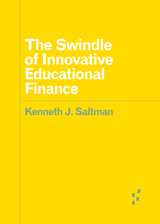 The Swindle of Innovative Educational Finance
Kenneth J. Saltman
University of Minnesota Press, 2018 How “innovative” finance schemes skim public wealth while hijacking public governance Charter school expansion. Vouchers. Scholarship tax credit programs. The Swindle of Innovative Educational Finance offers a new social theory to explain why these and other privatization policies and programs win support despite being unsupported by empirical evidence. Kenneth J. Saltman details how, under the guise of innovation, cost savings, and corporate social responsibility, new and massive neoliberal educational privatization schemes have been widely adopted in the United States. From a trillion-dollar charter school bubble to the Chan Zuckerberg Initiative to celebrities branding private schools, Saltman ultimately connects such schemes to the country’s current crisis of truth and offers advice for resistance.
Forerunners is a thought-in-process series of breakthrough digital works. Written between fresh ideas and finished books, Forerunners draws on scholarly work initiated in notable blogs, social media, conference plenaries, journal articles, and the synergy of academic exchange. This is gray literature publishing: where intense thinking, change, and speculation take place in scholarship.
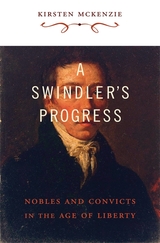 A Swindler's Progress: Nobles and Convicts in the Age of Liberty
Kirsten McKenzie
Harvard University Press, 2010 In May 1835 in a Sydney courtroom, a slight, balding man named John Dow stood charged with forgery. The prisoner shocked the room by claiming he was Edward, Viscount Lascelles, eldest son of the powerful Earl of Harewood. The Crown alleged he was a confidence trickster and serial impostor. Was this really the heir to one of Britain's most spectacular fortunes?
Part Regency mystery, part imperial history, A Swindler's Progress is an engrossing tale of adventure and deceit across two worlds—British aristocrats and Australian felons—bound together in an emerging age of opportunity and individualism, where personal worth was battling power based on birth alone. The first historian to unravel the mystery of John Dow and Edward Lascelles, Kirsten McKenzie illuminates the darker side of this age of liberty, when freedom could mean the freedom to lie both in the far-flung outposts of empire and within the established bastions of British power.
The struggles of the Lascelles family for social and political power, and the tragedy of their disgraced heir, demonstrate that British elites were as fragile as their colonial counterparts. In ways both personal and profound, McKenzie recreates a world in which Britain and the empire were intertwined in the transformation of status and politics in the nineteenth century.
Swing Changes: Big-Band Jazz in New Deal America
David W. Stowe
Harvard University Press, 1994 Bands were playing, people were dancing, the music business was booming. It was the big-band era, and swing was giving a new shape and sound to American culture. Swing Changes looks at New Deal America through its music and shows us how the contradictions and tensions within swing—over race, politics, its own cultural status, the role of women—mirrored those played out in the larger society. Drawing on memoirs, oral histories, newspapers, magazines, recordings, photographs, literature, and films, Swing Changes offers a vibrant picture of American society at a pivotal time, and a new perspective on music as a cultural force.
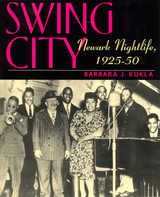 Swing City: Newark Lightlife, 1925-50
Kukla, Barbara J.
Rutgers University Press, 2002 When people think of the hottest cities of the Jazz Age and Swing Era, New York, Nashville, New Orleans, Memphis, Kansas City, and Chicago immediately spring to mind. But Newark, New Jersey was just as happening as each of these towns. On any given evening, you could listen to a legendary singer like Sarah Vaughan or laugh at the celebrated comedy of Red Foxx. Newark was a veritable maze of thriving theaters, clubs, and after-hours joints where the sporting folks rambled through the night. There were plenty of jobs for musicians and entertainers, so the city was teaming with musical talent. Swing City reveals Newark’s role as an undocumented entertainment mecca between 1922 and 1950. The book is based on interviews with musicians, singers, dancers, comedians, bartenders, waitresses, nightclub owners, and their families and is heavily illustrated with rare photographs from the author’s personal collection. Barbara J. Kukla presents a musical tour of the city, covering the vaudeville acts, the musicians who started at Newark’s Orpheum Theater and went on to join famous bands, and the teenage dancers who started as chorus girls and eventually toured with famous tap dancers. She also describes the house rent parties of the 1930s, the “colored only” clubs, the entertainment at Newark’s 1,000 saloons during Prohibition, and the Coleman Hotel where Billie Holiday often stayed. Throughout the book, which concentrates on performers’ lives and personalities, Kukla discusses music and other forms of entertainment as social and economic survival tools in Newark’s Third Ward during a time of ruthless segregation.
Swing City includes several appendixes that provide a virtual “Who’s Who” of 25 years of nightlife activities in Newark. Music and nostalgia buffs, students of African American history, and anyone who’s ever been to Newark will find in this bookfabulous entertainment.
 Swing Low, Sweet Chariot: The Mortality Cost of Colonizing Liberia in the Nineteenth Century
Antonio McDaniel
University of Chicago Press, 1995 In the early nineteenth century, thousands of emancipated and freeborn blacks from the United States returned to Africa to colonize the area now known as Liberia. In this, the first systematic study of the demographic impact of this move on the migrants, Antonio McDaniel finds that the health of migrant populations depends on the adaptability of the individuals in the group, not on their race.
McDaniel compares the mortality rates of the emigrants to those of other migrants to tropical areas. He finds that, contrary to popular belief, black immigrants during this period died at unprecedented rates. Moreover, he shows that though the emigrant's mortality levels were exceptionally high, their mortality patterns were consistent with those of other populations.
McDaniel concludes that the greater the variance between the environment left and the environment entered, the higher the probability of contracting a new disease, and, in some cases, of death from these diseases. Additionally, a migrant's health can be affected by dietary changes, differences in local pathogens, inappropriate immunities, and increased risk of accidents due to unfamiliar surroundings.
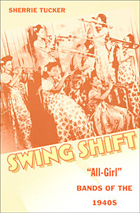 Swing Shift: "All-Girl" Bands of the 1940s
Sherrie Tucker
Duke University Press, 2001 The forgotten history of the “all-girl” big bands of the World War II era takes center stage in Sherrie Tucker’s Swing Shift. American demand for swing skyrocketed with the onslaught of war as millions—isolated from loved ones—sought diversion, comfort, and social contact through music and dance. Although all-female jazz and dance bands had existed since the 1920s, now hundreds of such groups, both African American and white, barnstormed ballrooms, theaters, dance halls, military installations, and makeshift USO stages on the home front and abroad.
Filled with firsthand accounts of more than a hundred women who performed during this era and complemented by thorough—and eye-opening—archival research, Swing Shift not only offers a history of this significant aspect of American society and culture but also examines how and why whole bands of dedicated and talented women musicians were dropped from—or never inducted into—our national memory. Tucker’s nuanced presentation reveals who these remarkable women were, where and when they began to play music, and how they navigated a sometimes wild and bumpy road—including their experiences with gas and rubber rationing, travel restrictions designed to prioritize transportation for military needs, and Jim Crow laws and other prejudices. She explains how the expanded opportunities brought by the war, along with sudden increased publicity, created the illusion that all female musicians—no matter how experienced or talented—were “Swing Shift Maisies,” 1940s slang for the substitutes for the “real” workers (or musicians) who were away in combat. Comparing the working conditions and public representations of women musicians with figures such as Rosie the Riveter, WACs, USO hostesses, pin-ups, and movie stars, Tucker chronicles the careers of such bands as the International Sweethearts of Rhythm, Phil Spitalny’s Hours of Charm, The Darlings of Rhythm, and the Sharon Rogers All-Girl Band.
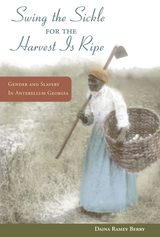 "Swing the Sickle for the Harvest is Ripe": Gender and Slavery in Antebellum Georgia
Daina Ramey Berry
University of Illinois Press, 2010 Examining how labor and economy shaped the family life of bondwomen and bondmen in the antebellum South "Swing the Sickle for the Harvest Is Ripe" compares the work, family, and economic experiences of enslaved women and men in upcountry and lowland Georgia during the nineteenth century. Mining planters' daybooks, plantation records, and a wealth of other sources, Daina Ramey Berry shows how slaves' experiences on large plantations, which were essentially self-contained, closed communities, contrasted with those on small plantations, where planters' interests in sharing their workforce allowed slaves more open, fluid communications. By inviting readers into slaves' internal lives through her detailed examination of domestic violence, separation and sale, and forced breeding, Berry also reveals important new ways of understanding what it meant to be a female or male slave, as well as how public and private aspects of slave life influenced each other on the plantation. A volume in the series Women in American History, edited by Anne Firor Scott, Susan Armitage, Susan K. Cahn, and Deborah Gray White
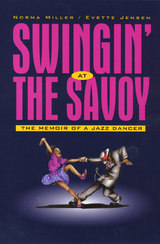 Swingin' at the Savoy
Norma Miller
Temple University Press, 1996 Dancer, award-winning choreographer, show producer, stand-up comedienne, TV/Film actress and author, Norma Miller shares her touching historical memoir of Harlem's legendary Savoy Ballroom and the phenomenal music and dance craze that "spread the power of swing across the world like Wildfire."
A dance contest winner by 14, Norma Miller became a member of Herbert White's Lindy Hoppers and a celebrated Savoy Ballroom Lindy Hop champion. Swingin' at the Savoy chronicles a significant period in American cultural history and race relations, as it glorifies the home of the Lindy Hop and he birthplace of memorable dance hall fads. Miller shares fascinating anecdotes about her youthful encounters with many of the greatest jazz legends in music history, including Ella Fitzgerald, Count Basie, Benny Goodman, Billie Holiday, Artie Shaw, Duke Ellington, Ethel Waters, and even boxer Joe Louis. Readers will experience the legend of the celebrated Harlem ballroom and the phenomenal Swing generation that changed music and dance history forever.
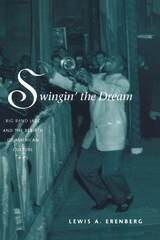 Swingin' the Dream: Big Band Jazz and the Rebirth of American Culture
Lewis A. Erenberg
University of Chicago Press, 1998 During the 1930s, swing bands combined jazz and popular music to create large-scale dreams for the Depression generation, capturing the imagination of America's young people, music critics, and the music business. Swingin' the Dream explores that world, looking at the racial mixing-up and musical swinging-out that shook the nation and has kept people dancing ever since.
"Swingin' the Dream is an intelligent, provocative study of the big band era, chiefly during its golden hours in the 1930s; not merely does Lewis A. Erenberg give the music its full due, but he places it in a larger context and makes, for the most part, a plausible case for its importance."—Jonathan Yardley, Washington Post Book World
"An absorbing read for fans and an insightful view of the impact of an important homegrown art form."—Publishers Weekly
"[A] fascinating celebration of the decade or so in which American popular music basked in the sunlight of a seemingly endless high noon."—Tony Russell, Times Literary Supplement
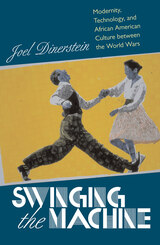 Swinging the Machine: Modernity, Technology, and African American Culture between the World Wars
Joel Dinerstein
University of Massachusetts Press, 2003 In any age and any given society, cultural practices reflect the material circumstances of people's everyday lives. According to Joel Dinerstein, it was no different in America between the two World Wars-an era sometimes known as the "machine age"-when innovative forms of music and dance helped a newly urbanized population cope with the increased mechanization of modern life. Grand spectacles such as the Ziegfeld Follies and the movies of Busby Berkeley captured the American ethos of mass production, with chorus girls as the cogs of these fast, flowing pleasure vehicles.
Yet it was African American culture, Dinerstein argues, that ultimately provided the means of aesthetic adaptation to the accelerated tempo of modernity. Drawing on a legacy of engagement with and resistance to technological change, with deep roots in West African dance and music, black artists developed new cultural forms that sought to humanize machines. In "The Ballad of John Henry," the epic toast "Shine," and countless blues songs, African Americans first addressed the challenge of industrialization. Jazz musicians drew on the symbol of the train within this tradition to create a set of train-derived aural motifs and rhythms, harnessing mechanical power to cultural forms. Tap dance and the lindy hop brought machine aesthetics to the human body, while the new rhythm section of big band swing mimicked the industrial soundscape of northern cities. In Dinerstein's view, the capacity of these artistic innovations to replicate the inherent qualities of the machine-speed, power, repetition, flow, precision-helps explain both their enormous popularity and social function in American life.
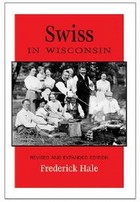 Swiss in Wisconsin
Frederick Hale
Wisconsin Historical Society Press, 2007 As the Föhn blew the first breaths of spring into the Alps in March 1845, two Swiss men embarked on a circuitous voyage that took them from the impoverished canton of Glarus in eastern Switzerland to the hills of southern Wisconsin. Their mission: to select and purchase a tract of land to which the Swiss government could dispatch part of its excess population. With subscriptions from prospective emigrants totaling about $2,600, Nicholas Dürst and Fridolin Streiff ultimately purchased 1,280 acres of timber and prospective farmland in Green County—land fellow immigrants declared “beautiful beyond expectation,” offering “excellent timber, good soil, fine springs, and a stream filled with fish.” Thus began the colony at New Glarus, Wisconsin, perhaps the most distinctively Swiss settlement in the United States. A mere five years later, Wisconsin boasted 1,224 of the nation’s 13,358 Swiss immigrants.
In this concise introduction to the state’s Swiss settlers, Frederick Hale traces the catalysts for Swiss emigration, their difficult journeys, and their adjustments to life on Wisconsin soil. Updates for this expanded edition include additional historic photographs and the selected writings of John Luchsinger, who settled at the Swiss colony at New Glarus, in 1856.
Swiss Mercenaries in the Dutch East Indies
Philipp Krauer
Leiden University Press, 2024 Between 1848 and 1914, around 5,800 Swiss Mercenaries enlisted in the Dutch Colonial Army (KNIL) to fight in the Dutch East Indies, now modern-day Indonesia. This book traces the paths of these mercenaries beyond the boundaries of the Dutch Empire, shedding light on the intricacies of nineteenth-century military labour markets. It delves deep into their social backgrounds, motivations, intimate relationships, and their role in the violent expansion of the colonial empire. In doing so, it unveils the profound impacts of Dutch colonialism, not only on the colonies themselves but also on the social, economic, and cultural landscape of the European hinterland.
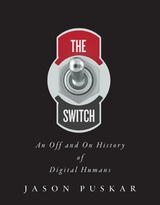 The Switch: An Off and On History of Digital Humans
Jason Puskar
University of Minnesota Press, 2024 From the telegraph to the touchscreen, how the development of binary switching transformed everyday life and changed the shape of human agency
The Switch traces the sudden rise of a technology that has transformed everyday life for billions of people: the binary switch. By chronicling the rapid growth of binary switching since the mid-nineteenth century, Jason Puskar contends that there is no human activity as common today as pushing a button or flipping a switch—the deceptively simple act of turning something on or off. More than a technical history, The Switch offers a cultural and political analysis of how reducing so much human action to binary alternatives has profoundly reshaped modern society. Analyzing this history, Puskar charts the rapid shift from analog to digital across a range of devices—keyboards, cameras, guns, light switches, computers, game controls, even the “nuclear button”—to understand how nineteenth-century techniques continue to influence today’s pervasive digital technologies. In contexts that include musical performance, finger counting, machine writing, voting methods, and immersive play, Puskar shows how the switch to switching led to radically new forms of action and thought. The innovative analysis in The Switch makes clear that binary inputs have altered human agency by making choice instantaneous, effort minimal, and effects more far-reaching than ever. In the process, it concludes, switching also fosters forms of individualism that, though empowering for many, also preserve a legacy of inequality and even domination.
Switched Currents: An analogue technique for digital technology
C. Toumazou
The Institution of Engineering and Technology, 1993 The switched-current technique is heralding a new era in analogue sampled-data signal processing. Unlike switched-capacitor circuits, switched-current circuits do not require linear floating capacitors or operational amplifiers and they are giving a renewed impetus to mixed-signal VLSI on standard digital technology. Key analogue designers from industry and academia worldwide have contributed to this first, very timely book entirely devoted to switched current analogue signal processing.
 Switching Channels: Organization and Change in TV Broadcasting
Richard E. Caves
Harvard University Press, 2005 Media critics invariably disparage the quality of programming produced by the U.S. television industry. But why the industry produces what it does is a question largely unasked. It is this question, at the crux of American popular culture, that Switching Channels explores.
In the past twenty-five years, the expansion of cable and satellite systems has transformed television. Richard Caves examines the economics of this phenomenon--and the nature and logic of the broadcast networks' response to the incursion of cable TV, especially the shift to inexpensive unscripted game and "reality" shows and "news" magazines. An explanation of these changes, Caves argues, requires an understanding of two very different sectors: the "creative industry," which produces programs; and the commercial channels, which bring them to viewers. His book shows how distributors' judgment of profitability determines the quality and character of the programs the creative industry produces. This determination, writes Caves, depends on the number and types of viewers that various programs can attract and advertisers' willingness to pay for their attention, as well as the organization of the networks that package programs, the distributors that transmit them, and the deals these parties strike with one another.
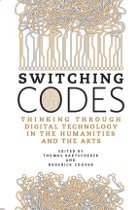 Switching Codes: Thinking Through Digital Technology in the Humanities and the Arts
Edited by Thomas Bartscherer and Roderick Coover
University of Chicago Press, 2011 Half a century into the digital era, the profound impact of information technology on intellectual and cultural life is universally acknowledged but still poorly understood. The sheer complexity of the technology coupled with the rapid pace of change makes it increasingly difficult to establish common ground and to promote thoughtful discussion.
Responding to this challenge, Switching Codes brings together leading American and European scholars, scientists, and artists—including Charles Bernstein, Ian Foster, Bruno Latour, Alan Liu, and Richard Powers—to consider how the precipitous growth of digital information and its associated technologies are transforming the ways we think and act. Employing a wide range of forms, including essay, dialogue, short fiction, and game design, this book aims to model and foster discussion between IT specialists, who typically have scant training in the humanities or traditional arts, and scholars and artists, who often understand little about the technologies that are so radically transforming their fields. Switching Codes will be an indispensable volume for anyone seeking to understand the impact of digital technology on contemporary culture, including scientists, educators, policymakers, and artists, alike.
 The Switching Function: Analysis of power electronic circuits
C.C. Marouchos
The Institution of Engineering and Technology, 2006 This book demonstrates the usefulness of the switching function in analyzing powers electronic circuits in the steady state. A procedure is suggested for the effective application of this effective application of this method for the analysis of all types of power electronic circuits. The Kirchoff's Laws and the Superposition theorem are applied by introducing the appropriate switching functions in order to derive Unified Expressions of voltage and current in switched circuits valid at all times. The exact expressions of the current in each semiconductor device in the circuit enables the circuit designer to collect all the relevant data to set the ratings of the device such as rms, average and peak values of voltage and current. The order of the voltage and current harmonics at any point in the circuit are derived with simple arithmetic. Compact expressions are derived for Sinusoidal PWM signals based on the switching function. The order, magnitude and phase of each component are derived directly from the expression with simple arithmetic. The educator has a simple way to present to his students the mechanism of operation of complex switched circuits where all the statements regarding their operation are actually presented in the model of the circuit.
 Switching to Digital Television: UK Public Policy and the Market
Michael Starks
Intellect Books, 2007 Sometime in the next four years, in a move that is bound to anger consumers and endanger the careers of politicians, the United Kingdom plans to turn off its analog, terrestrial television and switch fully to digital TV. Switching to Digital Television argues that, in order for the initiative to succeed, public policymakers need to carefully consider competitive market forces and collaborate with the broadcasting industry.
This authoritative study of the government policy behind the switchover also draws on the United Kingdom’s experience as a basis for comparative analysis of the United States, Japan, and western European nations, all of which will face similar questions in coming years. “The book provides an interesting and ‘different’ history of Digital Television, and if you want to know why and how the decisions were made, it deserves a place on your bookshelf.”– Jim Slater, Image Technology Magazine “Michael Starks brilliantly describes the complex mix of Government and industry responses to technological change which have led to the digital switchover process in the UK.”—Barry Cox, Chairman of Digital UK
 The Switching/Yard
Jan Beatty
University of Pittsburgh Press, 2013 In Jan Beatty’s fourth collection, The Switching/Yard, she takes us through the ravaged landscape of the American West. In unflinching lines of burning lyric and relentless narrative, she forges the constructed body into movement. What is still stereotyped as the romantic journey—now becomes as scarred as the Rust Belt. What lives in our collective unconscious as the Golden West becomes almost surreal, as these poems snap that vision in half with extended description of ghost explorers.
We see the open truck cab, the farm workers on the corner waiting for pick-up; we see the speaker returning west to find the long-abandoned story of the birthfather. There is no stable landscape here except the horizontal action of moving through. Landscape becomes story. In this extended tale of the idea of family, we find stand-ins for the father in the form of a hit man, Jim Morrison, and ultimately the unyielding road takes the place of the body. The Switching/Yard is at once the horizontal world of the birth table where babies are switched, the complex yard of the body where gender routinely shifts and switches, and the actual switching yard of the trains that run the inevitable tracks of this book.
 Switzerland: A Village History
David Birmingham
Ohio University Press, 2004 Switzerland: A Village History is an account of an Alpine village that illuminates the broader history of Switzerland and its rural, local underpinnings. It begins with the colonization of the Alps by Romanized Celtic peoples who came from the plain to clear the wilderness, establish a tiny monastic house, and create a dairy economy that became famous for its cheeses. Over ten centuries the village, like the rest of Switzerland, went through the traumas of religious reformation and political revolution. A single currency, a unified postal service, and eventually an integrated army brought improved stability and prosperity to the union of two dozen small republics. Yet Switzerland’s enduring foundation remains the three thousand boroughs to which the Swiss people feel they truly belong. In Switzerland: A Village History, distinguished scholar David Birmingham tells the story of his childhood village-Château-d’Oex-where records of cheesemaking date to 1328. The evolution of this ancient grazing and forest economy included the rise of the legal profession to keep track of complex deeds, grazing allotments, and animal rights-of-way. Switzerland’s eventual privatization of communal grazing land drove many highlanders to emigrate to the European plains and overseas to the Americas. The twentieth century brought wealth from foreign tourism to Switzerland, punctuated by austerities imposed by Europe’s wars. Alpine peasants were integrated into Swiss union society and began at last to share in some of the prosperity flowing from urban industry. Switzerland: A Village History replaces the mythology and patriotic propaganda that too often have passed for Swiss history with a rigorous, insightful, and charming account of the daily life, small-scale rivalries, and local loyalties that actually make up Swiss history.
Swoon
Victoria Redel
University of Chicago Press, 2003 What does it mean to be a woman—a lover, mother and artist? In Swoon, Redel tackles the question of Eros as it animates domestic life. These are poems unafraid to embrace the sweetness of difficulty and the difficult sweetness of intimacy. Using short and extended lyric, prose poem, circular narrative, Redel refuses formal categorization, demanding of poetry a complex and textured vision of the female experience. Swoon is a robustly sexy, intelligent, daring book of poems.
 Swooning Beauty: A Memoir Of Pleasure
Joanna Frueh
University of Nevada Press, 2006 When her parents died and her marriage disintegrated within the span of a few months, art historian and performance artist Joanna Frueh entered a painful period of grief and mourning. This book is about how she healed herself and in the process explored the range of her potential as a woman.Swooning Beauty is an intimate memoir of discovery and healing. Frueh’s path to recovery lay through a profound examination of her intuitions, desires, fantasies, dreams, and emotions, her capacity for pleasure—visual, sensual, intellectual, gastronomic, and erotic—and her sense of her own heroic female identity. Hers is the passionate voice of a creative, intelligent woman scrutinizing the nature of love in all its forms and the ways of being that make us free, flexible, more fully real and more fully human. The result is an engaging view into the rich and colorful inner life of a woman at the threshold of middle age, of the blossoming of mind and spirit that comes after suffering and self-realization. Pleasure, she concludes, “is the absence of lack. Self-love is a necessary plenitude. Vigilance in love brings us freedom. Freedom is not an absolute whose attainment is humanly impossible. Yogis say that the self that is not ego is free. That self is the spacious heart, the spacious mind.” Frueh offers us wisdom and comfort for the journey into middle age, and the deep pleasure of encountering a generous, lively spirit and a remarkably spacious mind.
 Sword and Shield of Zion: The Israel Air Force in the Arab-Israeli Conflict, 1948-2012
David Rodman
Sussex Academic Press, 2022 The Israel Air Force (IAF) has accumulated as much battle experience as any air force in the world during the post-Second World War era. It has recorded many outstanding accomplishments throughout a seemingly endless string of interstate wars, asymmetrical wars, counterinsurgency campaigns, and special operations. Sword and Shield of Zion examines the IAF's experience in the Arab-Israeli conflict, from the establishment of Israel in 1948 to the present day. The book analyzes this experience through the prisms of maneuver warfare, attrition warfare, counterinsurgency warfare, special operations, and humanitarian operations. It reviews the IAF's performance in such wars as the 1967 Six-Day War, the 1969-70 War of Attrition, the 1973 Yom Kippur War, the 2006 Second Lebanon War, and the 2008-09 Gaza War. Also, the book scrutinizes the IAF's participation in major counterinsurgency campaigns and special operations, traces its experience with unmanned aerial vehicles - which have occupied a very prominent place in air operations since the 1982 Lebanon War - and chronicles its experience with anti-aircraft defenses and satellites. Up-to-date information on the IAF's bases, squadrons, and other infrastructure is provided as well. Sword and Shield of Zion is based on personal visits to the IAF over the past few years, during which the author had the opportunity to tour bases, listen to lectures and briefings, and speak with numerous retired, reserve, and active duty officers.
 The Sword and the Pen: Women, Politics, and Poetry in Sixteenth-Century Siena
Konrad Eisenbichler
University of Notre Dame Press, 2012 In The Sword and the Pen: Women, Politics, and Poetry in Sixteenth-Century Siena, Konrad Eisenbichler analyzes the work of Sienese women poets, in particular, Aurelia Petrucci, Laudomia Forteguerri, and Virginia Salvi, during the first half of the sixteenth century up to the fall of Siena in 1555. Eisenbichler sets forth a complex and original interpretation of the experiences of these three educated noblewomen and their contributions to contemporary culture in Siena by looking at the emergence of a new lyric tradition and the sonnets they exchanged among themselves and with their male contemporaries. Through the analysis of their poems and various book dedications to them, Eisenbichler reveals the intersection of poetry, politics, and sexuality, as well as the gendered dialogue that characterized Siena's literary environment during the late Renaissance. Eisenbichler also examines other little-known women poets and their relationship to the cultural environment of Siena, underlining the exceptional role of the city of Siena as the most important center of women's writing in the first half of the sixteenth century in Italy, and probably in all of Europe.
This innovative contribution to the field of late Renaissance and early modern Italian and women's studies rescues from near oblivion a group of literate women who were celebrated by contemporary scholars but who have been largely ignored today, both because of a dearth of biographical information about them and because of a narrow evaluation of their poetry. Eisenbichler's analysis and reproduction of many of their poems in Italian and modern English translation are an invaluable contribution not only to Italian cultural studies but also to women's studies.
"Konrad Eisenbichler’s succinct, scholarly, and highly readable introduction to Sienese politics and culture in the 1530s–50s opens this field up for the first time to the nonspecialist reader, while at the same time providing much fresh material of value to specialists. Rich in biographical detail and centered on three of the most remarkable Sienese female protagonists of the period, it makes compelling reading for anyone with an interest in early modern women and their social and cultural worlds." —Virginia Cox, New York University
"At one level this is a rich and exhaustive study of three fascinating Sienese women poets, their poetry, their lives, and the lively intellectual circles they moved in and fostered. But at the same time it is an intriguing historical and literary detective story that ranges widely and deeply through archives and largely forgotten texts to rediscover a group of important women writers who, for the most part, have been ignored by history and the literary canon. As such, it stands as a powerful model and as a call for future studies that would recover the lost treasures of a powerful tradition that has been virtually deleted from our literary past." —Guido Ruggiero, University of Miami
"Combining expert research, informative analysis, and fine storytelling, Konrad Eisenbichler's The Sword and the Pen shows readers what was so remarkable about the women who chose lyric poetry as a medium for expressing their friendship and political views in war-torn sixteenth-century Siena. In the process, he reveals a Sienese community alive with literary conversations among men and women. The translations at the end of the book are more than icing on the cake; they are the means by which we can now bring these poets into our classrooms." —Deanna Shemek, University of California, Santa Cruz
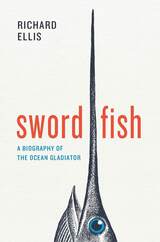 Swordfish: A Biography of the Ocean Gladiator
Richard Ellis
University of Chicago Press, 2013 A perfect fish in the evolutionary sense, the broadbill swordfish derives its name from its distinctive bill—much longer and wider than the bill of any other billfish—which is flattened into the sword we all recognize. And though the majesty and allure of this warrior fish has commanded much attention—from adventurous sportfishers eager to land one to ravenous diners eager to taste one—no one has yet been bold enough to truly take on the swordfish as a biographer. Who better to do so than Richard Ellis, a master of marine natural history? Swordfish: A Biography of the Ocean Gladiator is his masterly ode to this mighty fighter.
The swordfish, whose scientific name means “gladiator,” can take on anyone and anything, including ships, boats, sharks, submarines, divers, and whales, and in this book Ellis regales us with tales of its vitality and strength. Ellis makes it easy to understand why it has inspired so many to take up the challenge of epic sportfishing battles as well as the longline fishing expeditions recounted by writers such as Linda Greenlaw and Sebastian Junger. Ellis shows us how the bill is used for defense—contrary to popular opinion it is not used to spear prey, but to slash and debilitate, like a skillful saber fencer. Swordfish, he explains, hunt at the surface as well as thousands of feet down in the depths, and like tuna and some sharks, have an unusual circulatory system that gives them a significant advantage over their prey, no matter the depth in which they hunt. Their adaptability enables them to swim in waters the world over—tropical, temperate, and sometimes cold—and the largest ever caught on rod and reel was landed in Chile in 1953, weighing in at 1,182 pounds (and this heavyweight fighter, like all the largest swordfish, was a female).
Ellis’s detailed and fascinating, fact-filled biography takes us behind the swordfish’s huge, cornflower-blue eyes and provides a complete history of the fish from prehistoric fossils to its present-day endangerment, as our taste for swordfish has had a drastic effect on their population the world over. Throughout, the book is graced with many of Ellis’s own drawings and paintings, which capture the allure of the fish and bring its splendor and power to life for armchair fishermen and landlocked readers alike.
A Sybil Society: Poems
Katherine Factor
University of Nevada Press, 2022 With fearless and playful language, Katherine Factor’s debut collection reveals agony, humor, and the necessary voices of the female oracle through time. The oracle’s message is apparent—she is not dead. Her words are cryptic but contemporary, offering caution along with guidance to a society interested only in using prophecy for profit.
In a time when only a select few are prosperous, A Sybil Society paints a portrait of the present moment and unveils a restless truth. The collection is fearless in the face of convention and gives readers a sense of devastating sorrow in a world gone mad.
Sybil Thorndike: A Star Of Life
Jonathan Croall
Haus Publishing, 2009 Outside the theatrical profession Sybil Thorndike is no longer the household name she once was; she has become a historical figure. Yet her combative, inspiring life, her passionate concern for the state of the world as well as for her art, resonates with any age. As the actor Michael Macliammóir put it: 'Essentially English, she is yet nationless; essentially of her period, she is yet timeless.'
A Syllabus for a Course in the History of European Civilization: For Use With Ferguson and Brunn, A Survey of European Civilization
Alice Tyler
University of Minnesota Press, 1932
A Syllabus of Modern World History was first published in 1932. Minnesota Archive Editions uses digital technology to make long-unavailable books once again accessible, and are published unaltered from the original University of Minnesota Press editions.Originally published in 1930 for use with Robinson and Beard’s Development of Modern Europe, this syllabus of modern world history was designed for the freshman survey course at the University of Minnesota. After careful revision, the current syllabus accompanies Ferdinand Schevill’s A History of Europe, a standard history course text during the early twentieth century.
A Syllabus of Modern World History: For Use With Ferdinand Schevill: A History of Europe
Alice Tyler
University of Minnesota Press, 1932
A Syllabus of Modern World History was first published in 1932. Minnesota Archive Editions uses digital technology to make long-unavailable books once again accessible, and are published unaltered from the original University of Minnesota Press editions.Originally published in 1930 for use with Robinson and Beard’s Development of Modern Europe, this syllabus of modern world history was designed for the freshman survey course at the University of Minnesota. After careful revision, the current syllabus accompanies Ferdinand Schevill’s A History of Europe, a standard history course text during the early twentieth century.
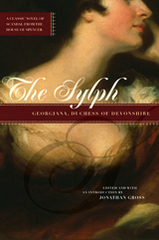 The Sylph
Georgiana, Duchess of Devonshire
Northwestern University Press, 2007 This ranging epistolary novel follows Julia Grenville, a Welsh beauty who knows little of the world until her marriage to the older Lord Stanley. Through Julia’s letters to her sister, readers learn more of Julia’s new life in London—her unfaithful husband, her miscarriage, her disillusionment with the city and its fashions. Other letters reveal that Julia has a longtime admirer, Harry Woodley, from her former life, as well as a mysterious guardian angel: her Sylph. This character guides Julia away from the depravities of her life in London, including her gambling problem. The Sylph is also another sympathetic ear to Julia’s increasing marital dissatisfaction and growing affinity for another man, the Baron Ton-hausen. As Julia nearly falls prey to the overzealous admirations of one of her husband’s associates, her husband is consumed by gambling debts to that same associate. She is shocked to discover the depths of her husband’s ruin and plans to flee to Wales before she too can be claimed in payment. Her disgraced husband takes the ultimate way out and Julia goes home to her father and sister in Wales. Her Sylph is not far behind, however, and soon reveals himself to Julia to be more than she could have ever imagined.
 Sylvia Pankhurst: Suffragette, Socialist and Scourge of Empire
Katherine Connelly
Pluto Press, 2013 From militant suffragette at the beginning of the twentieth century to campaigner against colonialism in Africa after the Second World War, Sylvia Pankhurst dedicated her life to fighting oppression and injustice.
In this vivid biography Katherine Connelly examines Pankhurst’s role at the forefront of significant developments in the history of radical politics. She guides us through Pankhurst's construction of a suffragette militancy which put working-class women at the heart of the struggle, her championing of the Bolshevik Revolution and her clandestine attempts to sabotage the actions of the British state, as well as her early identification of the dangers of Fascism.
The book explores the dilemmas, debates and often painful personal consequences faced by Pankhurst which were played out in her art, writings and activism. It argues that far from being an advocate of disparate causes, Pankhurst’s campaigns were united by an essential continuity which hold vital lessons for achieving social change. This lively and accessible biography presents Pankhurst as a courageous and inspiring campaigner, of huge relevance to those engaged in social movements today.
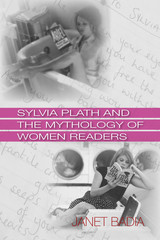 Sylvia Plath and the Mythology of Women Readers
Janet Badia
University of Massachusetts Press, 2011 Depicted in popular films, television series, novels, poems, and countless media reports, Sylvia Plath's women readers have become nearly as legendary as Plath herself, in large part because the depictions are seldom kind. If one is to believe the narrative told by literary and popular culture, Plath's primary audience is a body of young, misguided women who uncritically—even pathologically—consume Plath's writing with no awareness of how they harm the author's reputation in the process.
Janet Badia investigates the evolution of this narrative, tracing its origins, exposing the gaps and elisions that have defined it, and identifying it as a bullying mythology whose roots lie in a long history of ungenerous, if not outright misogynistic, rhetoric about women readers that has gathered new energy from the backlash against contemporary feminism.
More than just an exposé of our cultural biases against women readers, Badia's research also reveals how this mythology has shaped the production, reception, and evaluation of Plath's body of writing, affecting everything from the Hughes family's management of Plath's writings to the direction of Plath scholarship today. Badia discusses a wide range of texts and issues whose significance has gone largely unnoticed, including the many book reviews that have been written about Plath's publications; films and television shows that depict young Plath readers; editorials and fan tributes written about Plath; and Ted and (daughter) Frieda Hughes's writings about Plath's estate and audience.
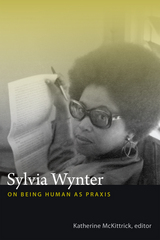 Sylvia Wynter: On Being Human as Praxis
Katherine McKittrick, ed.
Duke University Press, 2015 The Jamaican writer and cultural theorist Sylvia Wynter is best known for her diverse writings that pull together insights from theories in history, literature, science, and black studies, to explore race, the legacy of colonialism, and representations of humanness. Sylvia Wynter: On Being Human as Praxis is a critical genealogy of Wynter’s work, highlighting her insights on how race, location, and time together inform what it means to be human. The contributors explore Wynter’s stunning reconceptualization of the human in relation to concepts of blackness, modernity, urban space, the Caribbean, science studies, migratory politics, and the interconnectedness of creative and theoretical resistances. The collection includes an extensive conversation between Sylvia Wynter and Katherine McKittrick that delineates Wynter’s engagement with writers such as Frantz Fanon, W. E. B. DuBois, and Aimé Césaire, among others; the interview also reveals the ever-extending range and power of Wynter’s intellectual project, and elucidates her attempts to rehistoricize humanness as praxis.
Symbiogenesis: A New Principle of Evolution
Boris Mikhaylovich Kozo-Polyansky
Harvard University Press, 2010 More than eighty years ago, before we knew much about the structure of cells, Russian botanist Boris Kozo-Polyansky brilliantly outlined the concept of symbiogenesis, the symbiotic origin of cells with nuclei. It was a half-century later, only when experimental approaches that Kozo-Polyansky lacked were applied to his hypotheses, that scientists began to accept his view that symbiogenesis could be united with Darwin's concept of natural selection to explain the evolution of life. After decades of neglect, ridicule, and intellectual abuse, Kozo-Polyansky's ideas are now endorsed by virtually all biologists.
Kozo-Polyansky's seminal work is presented here for the first time in an outstanding annotated translation, updated with commentaries, references, and modern micrographs of symbiotic phenomena.
Symbiosis: Popular Culture and Other Fields
Ray B. Browne
University of Wisconsin Press, 1988 These essays, written by experts in their fields, demonstrate how necessary it is in the study of the humanities and social sciences to realize the interdependency of the fields and how rich the resulting study can be.
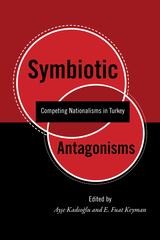 Symbiotic Antagonisms: Competing Nationalisms in Turkey
Ayse Kadioglu
University of Utah Press, 2011 Utah Series in Middle East Studies
Today, nationalism and nationalist sentiments are becoming more and more pronounced, creating a global emergence of ethno-nationalist and religious fundamentalist identity conflicts. In the post-9/11 era of international terrorism, it is appropriate to suggest that nationalism will retain its central place in politics and local and world affairs for the foreseeable future. It is in this vein that there has been a recent upsurge of interest concerning the power of nationalist tendencies as one of the dominant ideologies of modern times.
Symbiotic Antagonisms looks at the state-centric mode of modernization in Turkey that has constituted the very foundation on which nationalism has acquired its ideological status and transformative power. The book documents a symposium held at Sabanci University, presenting nationalism as a multidimensional, multiactor-based phenomenon that functions as an ideology, a discourse, and a political strategy. Turkish, Kurdish, and Islamic nationalisms are systematically compared in this timely and significant work.
 Symbolic Caxton: Literary Culture and Print Capitalism
William Kuskin
University of Notre Dame Press, 2008
Symbolic Caxton is the first study to explore the introduction of printing in symbolic terms. It presents a powerful literary history in which the fifteenth century is crucial to the overall story of English literature. William Kuskin argues that the development of print production is part of a larger social network involving the political, economic, and literary systems that produce the intangible constellations of identity and authority. For Kuskin, William Caxton (1422–1491), the first English printer, becomes a unique lens through which to view these issues. Kuskin contends that recognizing the fundamental complexity inherent in the transformation from manuscript to print—the power of literature to formulate its audience, the intimacy of capital and communication, the closeness of commodities and identity—makes possible a clear understanding of the way cultural, bibliographical, financial, and technological instruments intersect in a process of symbolic production.
While this book is the first to connect the contents of late medieval literature to its technological form, it also speaks to contemporary culture, wrestling with our own paradigm shift in the relationship between literature and technology.
“This is an important book about the origins of printing and print culture in England by North America’s leading younger scholar of William Caxton. It will contribute to debates about the English fifteenth century and the nature of Chaucerian reception. And it will offer a productive qualification and, at times, corrective to larger and more general accounts of print history.” —Seth Lerer, Avalon Foundation Professor in the Humanities, Stanford University
“This elegant, closely-argued study is one of the most important books to have yet appeared on Caxton and fifteenth-century English literary culture. Kuskin’s fine-grained attention to book history, his allegiance to the conceptual methodology of ‘history of the book’, and his command of literary history all combine to reconfigure our view of early print production, patronage, commerce, and literary authority. This is a major contribution to the history of vernacular textual production and vernacular knowledge in the fifteenth century—and to media history as a whole.” —Professor Ruth Evans, The University of Stirling
"There are certainly recent books on Caxton, but none that takes the literary approach used here, which is what makes the book such an important contribution to the field. It serves as a solid introduction to the subject of printing in England in the fifteenth century. William Kuskin shows how print, through a 'logic of reproduction,' constructs and shapes its audience." —Maura Nolan, University of California, Berkeley
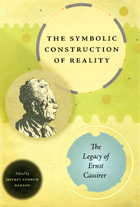 The Symbolic Construction of Reality: The Legacy of Ernst Cassirer
Edited by Jeffrey Andrew Barash
University of Chicago Press, 2008 In 1933 eminent philosopher Ernst Cassirer (1874–1945) fled Nazi Germany for the United States. His fame in Europe having already been established through a public debate with Martin Heidegger in 1929, Cassirer would go on to become a noteworthy influence on American culture. His most important early writings focused on the symbol and symbolic interaction, exploring how human cultures—from early myth-based ones to our own modern, scientifically oriented time—have used symbols to mediate the basic forms of experience. Following this work, Cassirer extended his insights to encompass a broad spectrum of philosophical themes: from investigations into Western epistemological and scientific traditions to aesthetics and the philosophy of history to anthropology and political philosophy. Reflecting this diversity in Cassirer’s own work, The Symbolic Construction of Reality collects eleven essays by a wide range of contributors from different fields. Each essay analyzes a different aspect of his legacy, reassessing its significance for our contemporary world and bringing much-needed attention to this seminal thinker.
Symbolic Crusade: Status Politics and the American Temperance Movement
Joseph R. Gusfield
University of Illinois Press, 1986 The important role of the Temperance movement throughout American history is analyzed as clashes and conflicts between rival social systems, cultures, and status groups. Sometimes the "dry" is winning the classic battle for prestige and political power. Sometimes, as in today's society, he is losing.
This significant contribution to the theory of status conflict also discloses the importance of political acts as symbolic acts and offers a dramatistic theory of status politics, Gusfield provides a useful addition to the economic and psychological modes of analysis current in the study of political and social movements.
Symbolic Interaction and Cultural Studies
Edited by Howard S. Becker and Michal M. McCall
University of Chicago Press, 1990 Symbolic interactionism, resolutely empirical in practice, shares theoretical concerns with cultural studies and humanistic discourse. Recognizing that the humanities have engaged many of the important intellectual currents of the last twenty-five years in ways that sociology has not, the contributors to this volume fully acknowledge that the boundary between the social sciences and the humanities has begun to dissolve. This challenging volume explores that border area.
Symbolic Methods in Control System Analysis and Design
Neil Munro
The Institution of Engineering and Technology, 1999 Symbolic computing has made a significant impact in the field of control engineering. This book, which brings together contributions from leading international experts in the field, provides an up-to-date treatment of various issues in system modelling, analysis, design and synthesis methods.
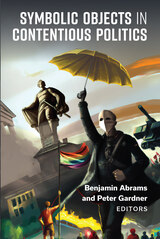 Symbolic Objects in Contentious Politics
Benjamin Abrams and Peter Gardner, Editors
University of Michigan Press, 2023 When we observe protest marches, striking workers on picket lines, and insurgent movements in the world today, a litany of objects routinely fill our field of vision. Some such objects are ubiquitous the world over, like flags, banners, and placards. Others are situationally unique: Who could have anticipated the historical importance of a flower placed in the barrel of a gun, a flaming torch, a sea of umbrellas, a motorist’s yellow vest, a feather headdress, an AK-47, or a knitted pink hat? This book explores the “stuff” at the heart of protests, revolutions, civil wars, and other contentious political events, with particular focus on those objects that have or acquire symbolic importance. In the context of “contentious politics” (disruptive political episodes where people try to change societies without going through institutions), certain objects can divide and unite social groups, tell stories, make declarations, spark controversy, and even trigger violent upheavals.
This book draws together scholars from a variety of fields to discuss symbolic objects in contentious politics: their meanings, uses, functions, and social responses. In bringing these phenomena together, this book offers a serious, distinctive, and cohesive theoretical contribution that draws upon diverse scholarly work in order to form the building blocks for future inquiry in the field. The aim is not merely to “close the gap” in the literature, but to create space in the field for further and more fruitful inquiry.
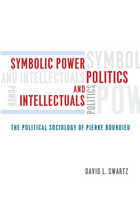 Symbolic Power, Politics, and Intellectuals: The Political Sociology of Pierre Bourdieu
David L. Swartz
University of Chicago Press, 2013 Power is the central organizing principle of all social life, from culture and education to stratification and taste. And there is no more prominent name in the analysis of power than that of noted sociologist Pierre Bourdieu. Throughout his career, Bourdieu challenged the commonly held view that symbolic power—the power to dominate—is solely symbolic. He emphasized that symbolic power helps create and maintain social hierarchies, which form the very bedrock of political life. By the time of his death in 2002, Bourdieu had become a leading public intellectual, and his argument about the more subtle and influential ways that cultural resources and symbolic categories prevail in power arrangements and practices had gained broad recognition. In Symbolic Power, Politics, and Intellectuals, David L. Swartz delves deeply into Bourdieu’s work to show how central—but often overlooked—power and politics are to an understanding of sociology. Arguing that power and politics stand at the core of Bourdieu’s sociology, Swartz illuminates Bourdieu’s political project for the social sciences, as well as Bourdieu’s own political activism, explaining how sociology is not just science but also a crucial form of political engagement.
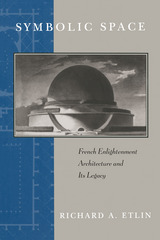 Symbolic Space: French Enlightenment Architecture and Its Legacy
Richard A. Etlin
University of Chicago Press, 1994 Richard A. Etlin explores the social and cultural hierarchies established in eighteenth-century France to illustrate how the conceptual basis of the modern house and the physical layout of the modern city emerged from debates among theoretically innovative French architects of the eighteenth-century. Examining a broad range of topics from architecture and urbanism to gardening and funerary monuments, he shows how the work of these architects was informed by considerations of symbolic space.
For Etlin, the eighteenth-century city was a place in which actual physical space was subjected to a complex mental layering of conceptual spaces. He focuses on the design theory of Boullée and Durand and charts their legacy through the architecture of Paul Philippe Cret, Frank Lloyd Wright, and Louis Kahn. He defines the distinctive features of neoclassicism and outlines the new grammar for classical architecture articulated by theorists and architects such as Laugier, Leroy, and Ledoux.
After discussing the eighteenth-century hôtel, revolutionary space, and the transformation of the image of the cemetery, Etlin examines the space of absence as embodied in commemorative architecture from Boullée and Gilly to Cret, Wright, and Terragni. His book provides an accessible introduction to a century of architecture that transformed the classical forms of the Renaissance and Baroque periods into building types still familiar today.
The Symbolic Uses of Politics
Murray Edelman
University of Illinois Press, 1985 The symbolic manifestations, purposes, and uses of politics are revealed in this provocative analysis of the institution of politics and man as a political animal. Unlike the conventional study of politics that deals with how people get the things they want through government, this book concentrates on how politics influence what they want, what they fear, and what they regard as possible. In examining politics as a symbolic form, it looks at man and politics as reflections of each other.
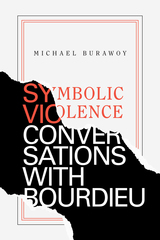 Symbolic Violence: Conversations with Bourdieu
Michael Burawoy
Duke University Press, 2019 In Symbolic Violence Michael Burawoy brings Pierre Bourdieu into an extended debate with Marxism—a tradition Bourdieu ostensibly avoided. While Bourdieu's expansive body of work stands as a critique of Marx's inadequate account of cultural domination, Burawoy shows how Bourdieu's eschewal and rejection of Marxism led him to miss out on a number of productive theoretical engagements. In eleven “conversations,” Burawoy outlines the intellectual and biographical parallels and divergences between Bourdieu and the work of preeminent Marxist thinkers. Among many topics, Burawoy examines Bourdieu's appropriation and silencing of Beauvoir and her theory of masculine domination; the commonalities as well as differences in Bourdieu's and Fanon's thought on colonialism and revolution; the extent to which Gramsci's theory of hegemony aligns with Bourdieu's notion of symbolic violence; and both how Freire and Bourdieu understood education as the site of oppression. In showing how Bourdieu has more in common with these thinkers than Bourdieu himself cared to admit, Burawoy offers a critical assessment of Bourdieu's work that illuminates its paradoxes and reaffirms its significance for the twenty-first century.
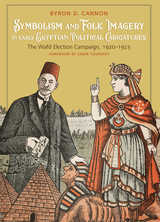 Symbolism and Folk Imagery in Early Egyptian Political Caricatures: The Wafd Election Campaign, 1920–1923
Byron D. Cannon, Foreword by Samir Toubassy
University of Utah Press, 2019 Art is politics and politics is art in this study of post–World War I caricature art in Egypt and Egyptian politics. This book explores the complex meaning and significance of caricature art drawn to support the ascendant Egyptian Wafdpolitical party and its push for independence from British colonial control. The works of previously neglected Egyptian lithographers are also explored, especially those who adopted sophisticated European techniques while experimenting with a variety of new styles during a remarkable period in Egyptian history. Caricature art by Wafd party artists was almostsui generis. It is distinguished especially by its sincere use of iconic, folkloric imagery, intended to rally nationalistic sentiments among an emerging Egyptian electorate that included many nonliterate citizens. Cannon’s research breathes new life into an influential yet largely forgotten artistic movement in Egypt, one that deserves recognition for its contribution to Egypt’s share of modern Middle East cultural history. Includes full color reproductions.
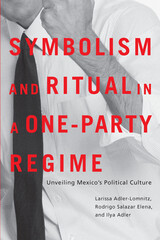 Symbolism and Ritual in a One-Party Regime: Unveiling Mexico's Political Culture
Larissa Adler-Lomnitz, Rodrigo Salazar Elena, and Ilya Adler
University of Arizona Press, 2010 Because of the long dominance of Mexico’s leading political party, the Partido Revolucionario Institucional, the campaigns of its presidential candidates were never considered relevant in determining the victor. This book offers an ethnography of the Mexican political system under PRI hegemony, focusing on the relationship between the formal democratic structure of the state and the unofficial practices of the underlying political culture, and addressing the question of what purpose campaigns serve when the outcome is predetermined.
Discussing Mexican presidential politics from the perspectives of anthropology, political science, and communications science, the authors analyze the 1988 presidential campaign of Carlos Salinas de Gortari—the last great campaign of the PRI to display the characteristics traditionally found in the twentieth century. These detailed descriptions of campaign events show that their ritualistic nature expressed both a national culture and an aura of domination.
The authors describe the political and cultural context in which this campaign took place—an authoritarian presidential system that dated from the 1920s—and explain how the constitutional provisions of the state interacted with the informal practices of the party to produce highly scripted symbolic rituals. Their analysis probes such topics as the meanings behind the candidate’s behavior, the effects of public opinion polling, and the role of the press, then goes on to show how the system has begun to change since 2000.
By dealing with the campaign from multiple perspectives, the authors reveal it as a rite of passage that sheds light on the political culture of the country. Their study expands our understanding of authoritarianism during the years of PRI dominance and facilitates comparison of current practices with those of the past.
Symbolism and Truth: An Introduction to the Theory of Knowledge
Ralph Monroe Eaton
Harvard University Press A critical and analytical, rather than speculative, discussion of the theory of knowledge. Since knowledge is inseparable from its expressions, the author begins with an examination of meaning; he then proceeds to discuss the nature of facts, relations, qualities, universals, and individuals, and finally the definition and tests of truth. The question of truth is naturally linked to that of belief, judgment, and negation; and since logical form stands out most clearly in quasi-mathematical deductive systems, a chapter is given to the study of these systems. A list of selected readings bearing on the subjects discussed in each chapter is given.
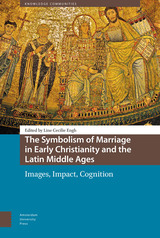 The Symbolism of Marriage in Early Christianity and the Latin Middle Ages: Images, Impact, Cognition
Line Cecilie Engh
Amsterdam University Press, 2020 In the Middle Ages everyone, it seems, entered into some form of marriage. Nuns - and even some monks - married the bridegroom Christ. Bishops married their sees. The popes, as vicars of Christ, married the universal Church. And lay people, high and low, married each other. What united these marriages was their common reference to the union of Christ and Church. Christ's marriage to the Church was the paradigmatic symbol in which all the other forms of union participated, in superior or inferior ways. This book grapples with questions of the impact of marriage symbolism on both ideas and practice in the early Christian and medieval period. In what ways did marriage symbolism - with its embedded concepts of gender, reproduction, household, and hierarchy - shape people's thought about other things, such as celibacy, ecclesial and political relations, and devotional relations? How did symbolic cognition shape marriage itself? And how, if at all, were these two directions of thinking symbolically about marriage related?
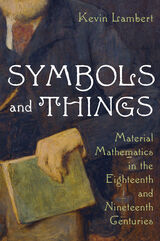 Symbols and Things: Material Mathematics in the Eighteenth and Nineteenth Centuries
Kevin Lambert
University of Pittsburgh Press, 2021 In the steam-powered mechanical age of the eighteenth and nineteenth centuries, the work of late Georgian and early Victorian mathematicians depended on far more than the properties of number. British mathematicians came to rely on industrialized paper and pen manufacture, railways and mail, and the print industries of the book, disciplinary journal, magazine, and newspaper. Though not always physically present with one another, the characters central to this book—from George Green to William Rowan Hamilton—relied heavily on communication technologies as they developed their theories in consort with colleagues. The letters they exchanged, together with the equations, diagrams, tables, or pictures that filled their manuscripts and publications, were all tangible traces of abstract ideas that extended mathematicians into their social and material environment. Each chapter of this book explores a thing, or assembling of things, mathematicians needed to do their work—whether a textbook, museum, journal, library, diagram, notebook, or letter—all characteristic of the mid-nineteenth-century British taskscape, but also representative of great change to a discipline brought about by an industrialized world in motion.
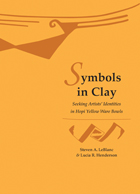 Symbols in Clay: Seeking Artists’ Identities in Hopi Yellow Ware Bowls
Steven A. LeBlanc and Lucia R. Henderson
Harvard University Press, 2009 In late prehistory, the ancestors of the present-day Hopi in Arizona created a unique and spectacular painted pottery tradition referred to as Hopi Yellow Ware. This ceramic tradition, which includes Sikyatki Polychrome pottery, inspired Hopi potter Nampeyo’s revival pottery at the turn of the twentieth century.
How did such a unique and unprecedented painting style develop? The authors compiled a corpus of almost 2,000 images of Hopi Yellow Ware bowls from the Peabody Museum’s collection and other museums. Focusing their work on the exterior, glyphlike painted designs of these bowls, they found that the “glyphs” could be placed into sets and apparently acted as a kind of signature.
The authors argue that part-time specialists were engaged in making this pottery and that relatively few households manufactured Hopi Yellow Ware during the more than 300 years of its production.Extending the Peabody’s influential Awatovi project of the 1930s, Symbols in Clay calls into question deep-seated assumptions about pottery production and specialization in the precontact American Southwest.
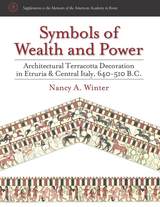 Symbols of Wealth and Power: Architectural Terracotta Decoration in Etruria and Central Italy, 640-510 B.C.
Nancy A. Winter
University of Michigan Press, 2009 Although initially intended for the innovative, if prosaic, purpose of providing waterproof and fireproof cover for earlier thatch-roofed homes, fired clay tiles, in seventh- and sixth-century Etruria and Central Italy, combined with Etruscan love of adornment to create exceptional domestic and religious building decoration. Featuring statues and figured friezes of humans, animals, and mythological figures intended to convey the status of the owner or dedicator, the surviving terracotta roofs provide important insights into the architectural history of Etruria. With Symbols of Wealth and Power, Nancy A. Winter has provided a definitive overview of the evidence for these roofing elements that will enhance our knowledge of Etruscan---and more broadly, ancient---architecture. Nancy A. Winter is an archaeologist and former librarian of the American School of Classical Studies, Athens. She is the author of Greek Architectural Terracottas: From the Prehistoric to the End of the Archaic Period (1993). Also of Interest
Role Models in the Roman World: Identity and Assimilation, edited by Sinclair Bell and Inge Lyse Hansen
The Maritime World of Ancient Rome, edited by Robert L. Hohlfelder
Cosa: The Black-Glaze Pottery 2, by Ann Reynolds Scott Jacket illustration: Tuscania, Ara del Tufo, 560–550 B.C.
Symbols that Stand for Themselves
Roy Wagner
University of Chicago Press, 1986 This important new work by Roy Wagner is about the autonomy of symbols and their role in creating culture. Its argument, anticipated in the author's previous book, The Invention of Culture, is at once symbolic, philosophical, and evolutionary: meaning is a form of perception to which human beings are physically and mentally adapted. Using examples from his many years of research among the Daribi people of New Guinea as well as from Western culture, Wagner approaches the question of the creation of meaning by examining the nonreferential qualities of symbols—such as their aesthetic and formal properties—that enable symbols to stand for themselves.
Symmetry
Marc Straus
Northwestern University Press, 2000 In this second book of poems, oncologist Marc J. Straus addresses the hopes and the tragedies of his profession. The work is a commentary on his experience in the medical field and a collection of rich, vivid monologues written from the points of view of both doctor and patient. These poems show a rare sensitivity not only to those who are suffering but also to the details that distinguish each life.
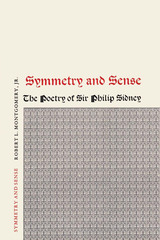 Symmetry and Sense: The Poetry of Sir Philip Sidney
By Robert L. Montgomery
University of Texas Press, 1961 Few Elizabethans left the image of their personalities cut so deeply into the Renaissance imagination as did Sir Philip Sidney. Widely admired in his own time, Sidney must seem to the modern reader almost universally accomplished. His talents as courtier, diplomat, soldier, scholar, novelist, and poet are history. Almost immediately after Sidney's death in battle against the Spaniards in the Low Countries, the process of legend began, and the legend has survived, sometimes obscuring the facts. The versatile "Renaissance man" has become, in the eyes of some critics, the romantic lover whose frustrations and despair found release in the "confessional" form of the sonnet sequence, Astrophel and Stella, and in other poems. To show these poems to be consciously constructed works of art, not simply passionate outbursts of romantic emotion, is one aim of this study. The author examines Sidney as poet and critic, concentrating his study on rhetorical technique and poetic rhythm and form. He shows Sidney experimenting with the symmetrical possibilities of rhythm and phrase; practicing the ornateness current and acceptable in his day. He examines Sidney's comment on such a style in The Defense of Poesy and the ways in which the poet's own work agreed with or departed from his expressed opinions. He also balances Sidney's poetry against the powerful tradition of Petrarchan love literature and the equally powerful Renaissance impulse to subject passion to the rule of reason. Finally, in an extended analysis of Astrophel and Stella, he shows Sidney as the master of a plainer, wittier, more subtly fashioned style and a complex, more dramatically immediate form. What emerges from the study is not the personality of the poet, but the principles of his art and the value of his achievement in the mainstream of English Renaissance verse.
 Symmorphosis: On Form and Function in Shaping Life
Ewald R. Weibel M.D.
Harvard University Press, 2000 This book addresses a simple question: Are animals designed economically? The pronghorn can run at speeds of up to 60 kilometers an hour and can maintain this speed for nearly a full hour. Clearly, the form of this elegant animal is beautifully matched to the function it needs to perform.
This is symmorphosis. The theory of symmorphosis predicts that the size of the parts in a system must be matched to the overall functional demand. Moreover, it predicts that animals must provide their complex systems with a functional capacity that can cope with the highest expected functional demands, possibly including some safety margin to prevent the system from failing when it is overloaded. In Symmorphosis, Ewald Weibel tests these predictions by working out the quantitative relations between form and function.
Physiologists will value this book because Weibel shows them that morphological information can be as quantitative as physiological data. Anatomists will value the book for its demonstration that advanced integrative physiology crucially depends on adequate but rigorously quantitative and testable information on structural design. Finally, anyone interested in the origins of the diverse forms of animals will be fascinated by Weibel's demonstrations that show how animals as different as shrews, pronghorns, dogs, goats--even humans--all develop from essentially the same blueprint by variation of design. This is a hidden beauty of the animal kingdom, which can be uncovered by a rigorous investigation of the quantitative relations of form and function.
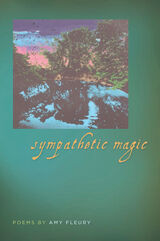 Sympathetic Magic
Amy Fleury
Southern Illinois University Press, 2013 Amy Fleury’s bewitching new collection of poems, Sympathetic Magic, unveils the everyday manifestations of sympathy as well as the connections wrought by “sympathetic magic”—that indelible tether that binds people, places, and objects across time and distance. Fleury’s lyrics journey across the landscapes of childhood and old age, body and spirit, past and future, exploring the boundless permutations of sympathy as it appears in the most surprising locations. Connections reveal themselves in the aggressive silence of the small town or the round penmanship of a loved one, and echo throughout the solitude and regeneration of the forest as well as the antiseptic air of the hospital. At the center of these travels lies the narrator, stretching her limbs from the heart of the heartland, her body a compass summoning us from all directions, emphasizing with tender simplicity that “we all live under the self-same moon, no matter the phase.”
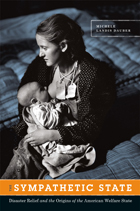 The Sympathetic State: Disaster Relief and the Origins of the American Welfare State
Michele Landis Dauber
University of Chicago Press, 2012 Even as unemployment rates soared during the Great Depression, FDR’s relief and social security programs faced attacks in Congress and the courts on the legitimacy of federal aid to the growing population of poor. In response, New Dealers pointed to a long tradition—dating back to 1790 and now largely forgotten—of federal aid to victims of disaster. In The Sympathetic State, Michele Landis Dauber recovers this crucial aspect of American history, tracing the roots of the modern American welfare state beyond the New Deal and the Progressive Era back to the earliest days of the republic when relief was forthcoming for the victims of wars, fires, floods, hurricanes, and earthquakes. Drawing on a variety of materials, including newspapers, legal briefs, political speeches, the art and literature of the time, and letters from thousands of ordinary Americans, Dauber shows that while this long history of government disaster relief has faded from our memory today, it was extremely well known to advocates for an expanded role for the national government in the 1930s, including the Social Security Act. Making this connection required framing the Great Depression as a disaster afflicting citizens though no fault of their own. Dauber argues that the disaster paradigm, though successful in defending the New Deal, would ultimately come back to haunt advocates for social welfare. By not making a more radical case for relief, proponents of the New Deal helped create the weak, uniquely American welfare state we have today—one torn between the desire to come to the aid of those suffering and the deeply rooted suspicion that those in need are responsible for their own deprivation. Contrary to conventional thought, the history of federal disaster relief is one of remarkable consistency, despite significant political and ideological change. Dauber’s pathbreaking and highly readable book uncovers the historical origins of the modern American welfare state.
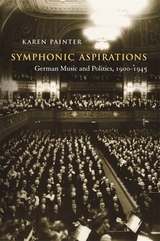 Symphonic Aspirations: German Music and Politics, 1900–1945
Karen Painter
Harvard University Press, 2008 Can music be political? Germans have long claimed the symphony as a pillar of their modern national culture. By 1900, the critical discourse on music, particularly symphonies, rose to such prominence as to command front-page news. With the embrace of the Great War, the humiliation of defeat, and the ensuing economic turmoil, music evolved from the most abstract to the most political of the arts. Even Goebbels saw the symphony as a tool of propaganda. More than composers or musicians, critics were responsible for this politicization of music, aspiring to change how music was heard and understood. Once hailed as a source of individual heroism, the symphony came to serve a communal vision.
Karen Painter examines the politicization of musical listening in Germany and Austria, showing how nationalism, anti-Semitism, liberalism, and socialism profoundly affected the experience of serious music. Her analysis draws on a vast collection of writings on the symphony, particularly those of Mahler and Bruckner, to offer compelling evidence that music can and did serve ideological ends. She traces changes in critical discourse that reflected but also contributed to the historical conditions of the fin de siècle, World War I, and the Nazi regime.
 The Symphony Concert in Nazi Germany
Neil Gregor
University of Chicago Press, 2025 A new history of how the musical worlds of German towns and cities were transformed during the Nazi era.
In the years after the Nazis came to power in January 1933 and throughout the Second World War, all aspects of life in Germany changed. Despite the social and political upheaval, gentile citizens continued to attend concerts. In this book, historian Neil Gregor surveys how the classical concert scene was impacted in Nazi Germany. Taking the perspective of the audience, rather than institutions or performers, Gregor delves into the cultural lives of ordinary Germans under conditions of dictatorship. Did the ways in which Germans heard music in the period change? Did a Nazi way of listening emerge?
For audiences, Gregor shows, changes to the concert experience were small and often took place around the edges. This, combined with the preserved idea of the concert hall as a space of imagined civility and cultivation, led many concertgoers and music lovers to claim after the war that their field and their practice had been innocent—a place to retreat from the vicious violence and racism of the Nazi regime. Drawing on untapped archival sources, The Symphony Concert in Nazi Germany reveals that the true history was one of disruption but also of near seamless adaptation. Through countless small acts, the symphony concert was reframed within the languages of strident nationalism, racism, and militarism to ensure its place inside the cultural cosmos of National Socialist Germany.
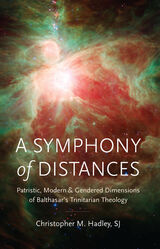 A Symphony of Distances: Patristic, Modern, and Gendered Dimensions of Balthasar's Trinitarian Theology
Christopher M. Hadley, SJ
Catholic University of America Press, 2022 The two-fold task of A Symphony of Distances is to provide an overview of Hans Urs von Balthasar’s use of distance imagery with regard to personal distinctions in the Holy Trinity and to offer a critical analysis of him as a modern Catholic theologian.
A metaphor of “distance” integrates all of Balthasar’s theological thought as a primary cipher for the many symbols through which he reads the Christian theological tradition in a trinitarian and eschatological mode. The book follows a chronological, four-stage development of Balthasar’s trinitarianism through the lens of this distance metaphor as it occurs across representative texts. The critical analysis employs the conceit of a symphony of four musical movements that correspond to four varieties of theological distance. These distances show certain correspondences of God’s creation and redemption of the world—marked by the first two “distances”—with the relations of the divine persons to each other in the economy of salvation and in the eternal Trinity itself—marked by the third and fourth distances. “Listening” to the four movements of Balthasar’s theological distances enables his readers to “hear” the themes of all four movements in the ascending order of richness, complexity, and inclusivity over the long development of his thought.
This fundamentally positive approach of A Symphony of Distances allows for a thorough critique of the internal consistency of Balthasar’s applied method, of the controversial use of gendered trinitarian notions in his speculations on divine pathos, and of his adequacy to the tasks of modern theology. The final judgment is that Balthasar’s theology of distance can be accepted, with reservations, as a positive element of his contribution to contemporary trinitarian theology. The book can thus serve as a critical reference for readers who find Balthasar’s notion of trinitarian distance, and indeed his trinitarianism as a whole, to be compelling, confusing, or frustrating.
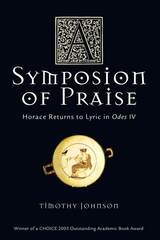 A Symposion of Praise: Horace Returns to Lyric in Odes IV
Timothy Johnson
University of Wisconsin Press, 2007 Ten years after publishing his first collection of lyric poetry, Odes I-III, Horace (65 B.C.-8 B.C.) returned to lyric and published another book of fifteen odes, Odes IV. These later lyrics, which praise Augustus, the imperial family, and other political insiders, have often been treated more as propaganda than art. But in A Symposion of Praise, Timothy Johnson examines the richly textured ambiguities of Odes IV that engage the audience in the communal or "sympotic" formulation of Horace's praise. Surpassing propaganda, Odes IV reflects the finely nuanced and imaginative poetry of Callimachus rather than the traditions of Aristotelian and Ciceronian rhetoric, which advise that praise should present commonly admitted virtues and vices. In this way, Johnson demonstrates that Horace's application of competing perspectives establishes him as Pindar's rival.
Johnson shows the Horatian panegyrist is more than a dependent poet representing only the desires of his patrons. The poet forges the panegyric agenda, setting out the character of the praise (its mode, lyric, and content both positive and negative), and calls together a community to join in the creation and adaptation of Roman identities and civic ideologies. With this insightful reading, A Symposion of Praise will be of interest to historians of the Augustan period and its literature, and to scholars interested in the dynamics between personal expression and political power.
The Symposium of Plato
Suzy Q. Groden
University of Massachusetts Press, 1970 We are currently updating our website and have not yet posted complete information for this title. Many of our books are in the Google preview program, which allows readers to view up to 20% of the book. If this title is active in the program, you will find the Google Preview button in the sidebar below.
The Symptom of Beauty
Francett Pacteau
Harvard University Press For a woman in the Western world, there's no escaping beauty. She has it or she doesn't. If she doesn't, she may hope to gain it. If she already has it, she will certainly lose it. But what is "it"? Not a singular thing, Francette Pacteau tells us, but a generic term for an unspecifiable number of disparate experiences. What these experiences are, what they mean, how they manifest themselves as a notion of beauty is the subject of Pacteau's book, an intriguing psychoanalytic study of beauty that looks into the eye of the beholder and into the mind conjuring behind it. Her book is an ambitious attempt to describe the mise-en-scène of beauty within a particular field of representations; that of the beauty of a woman.
|
|


